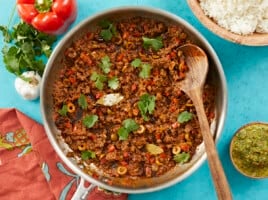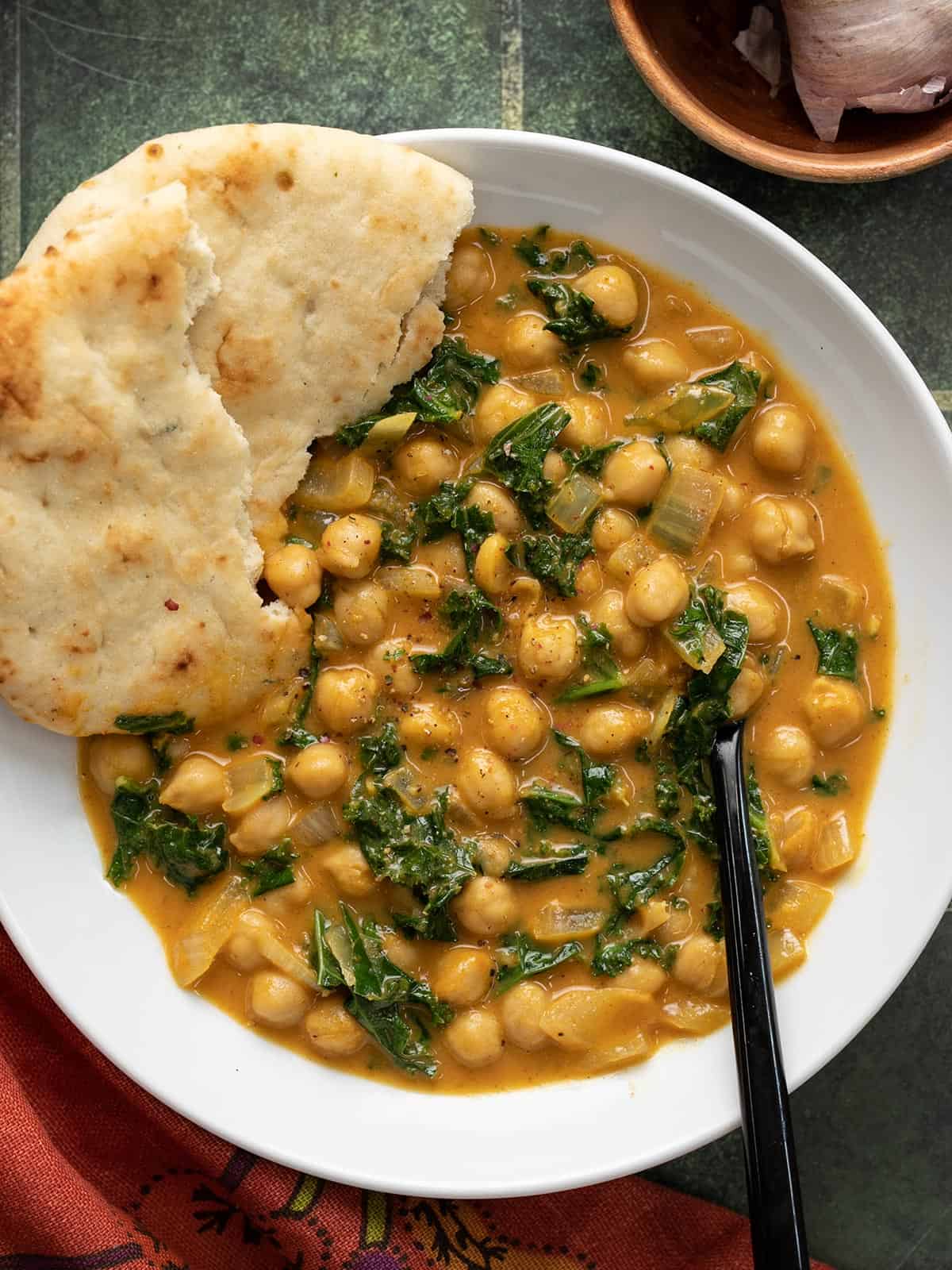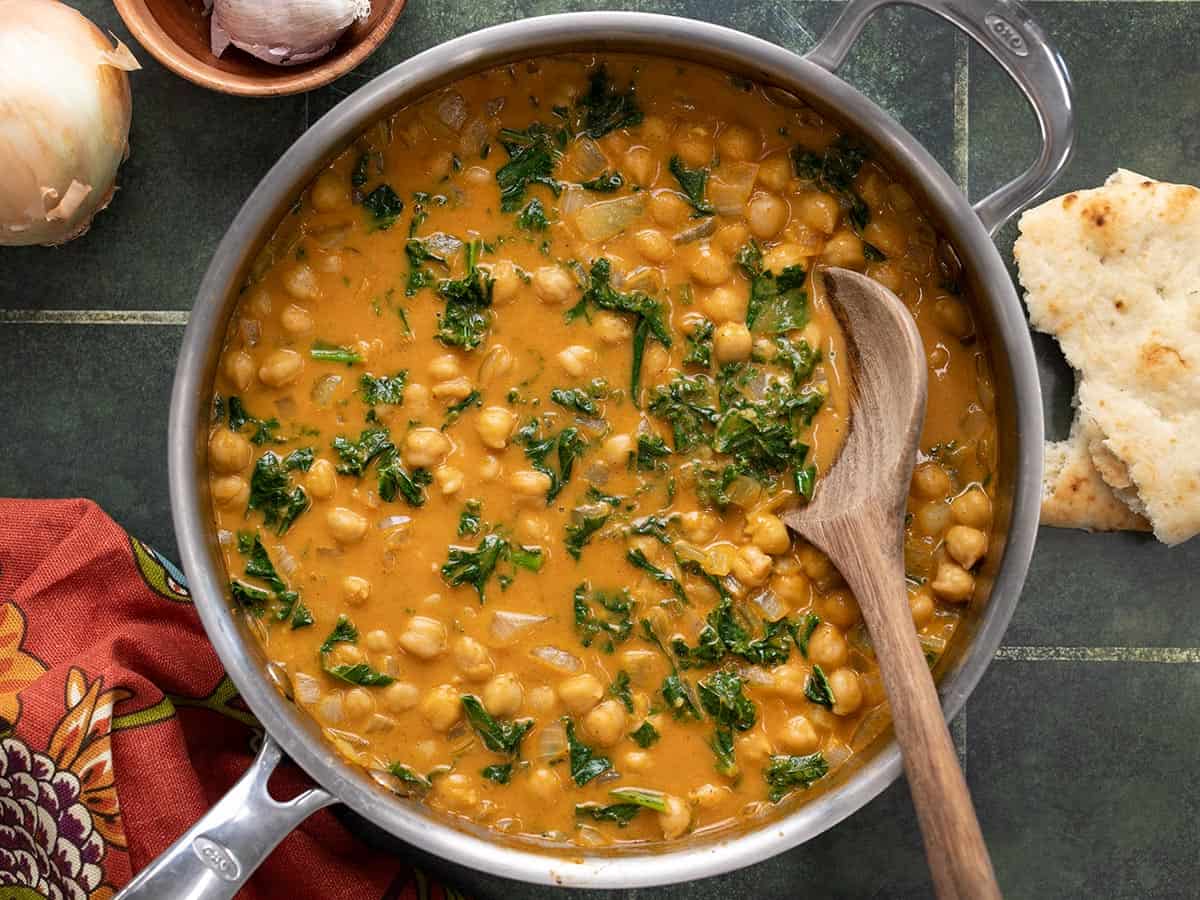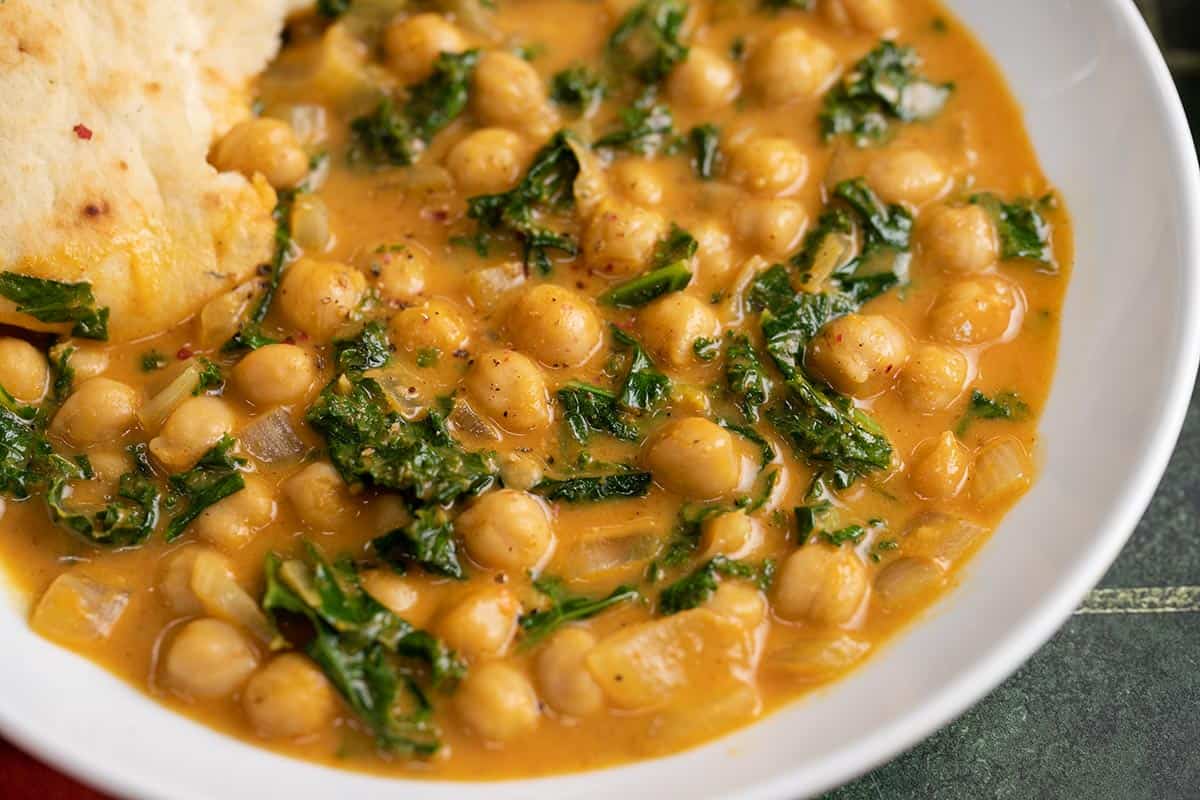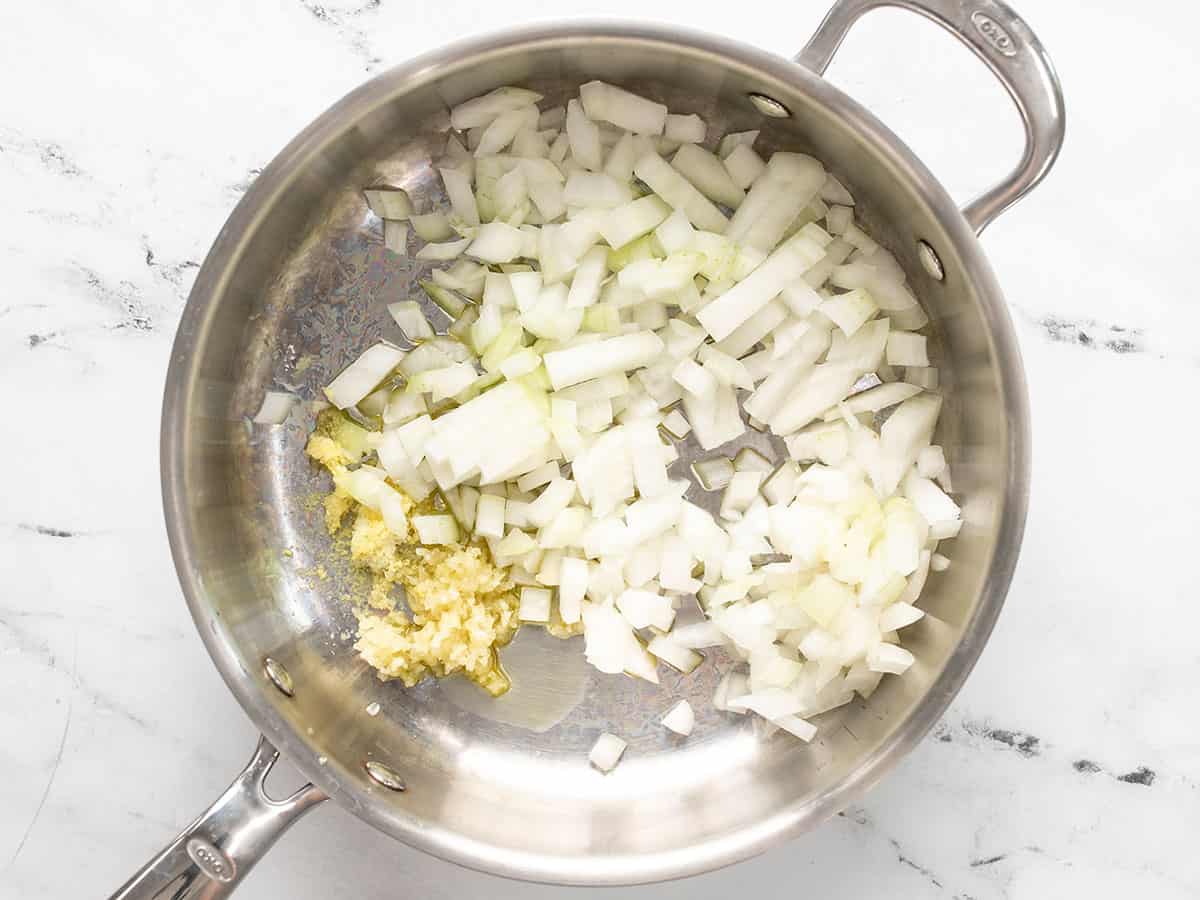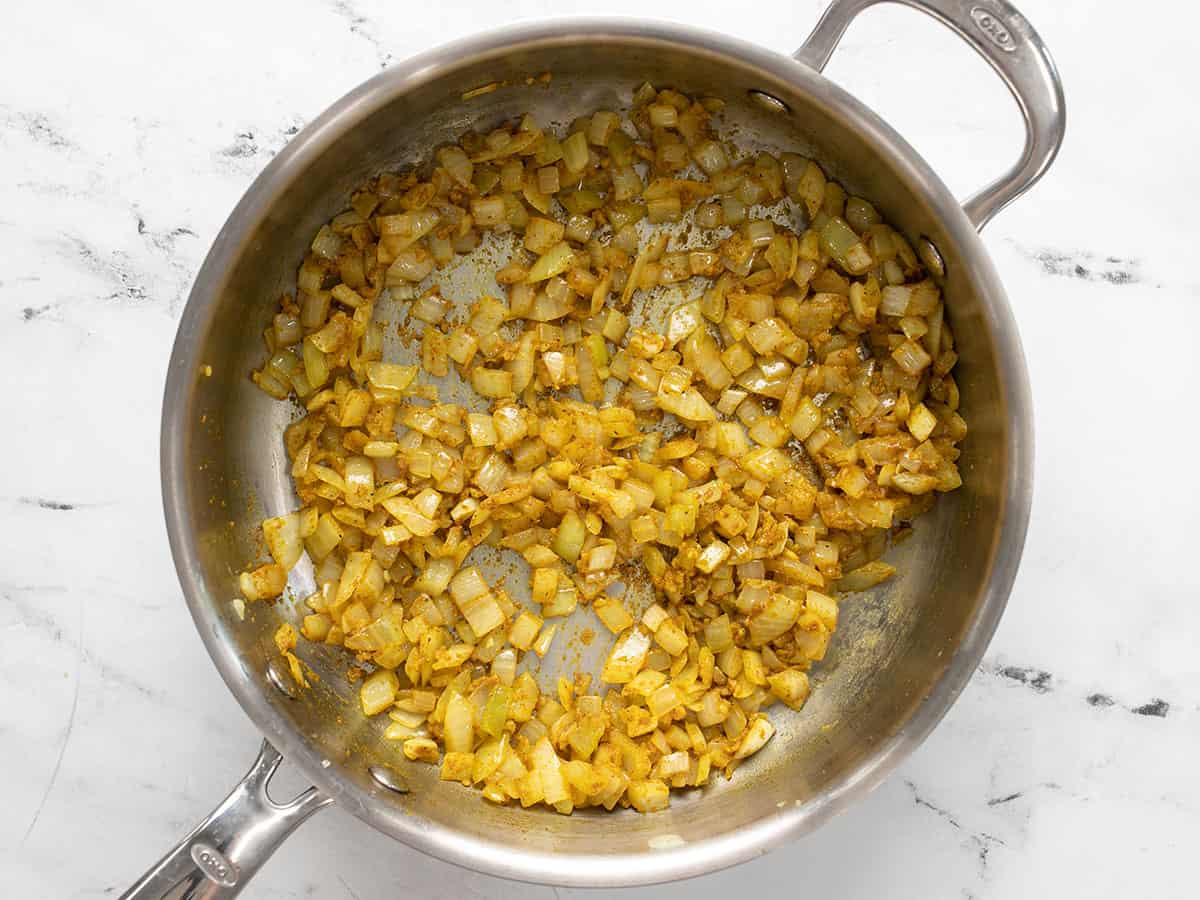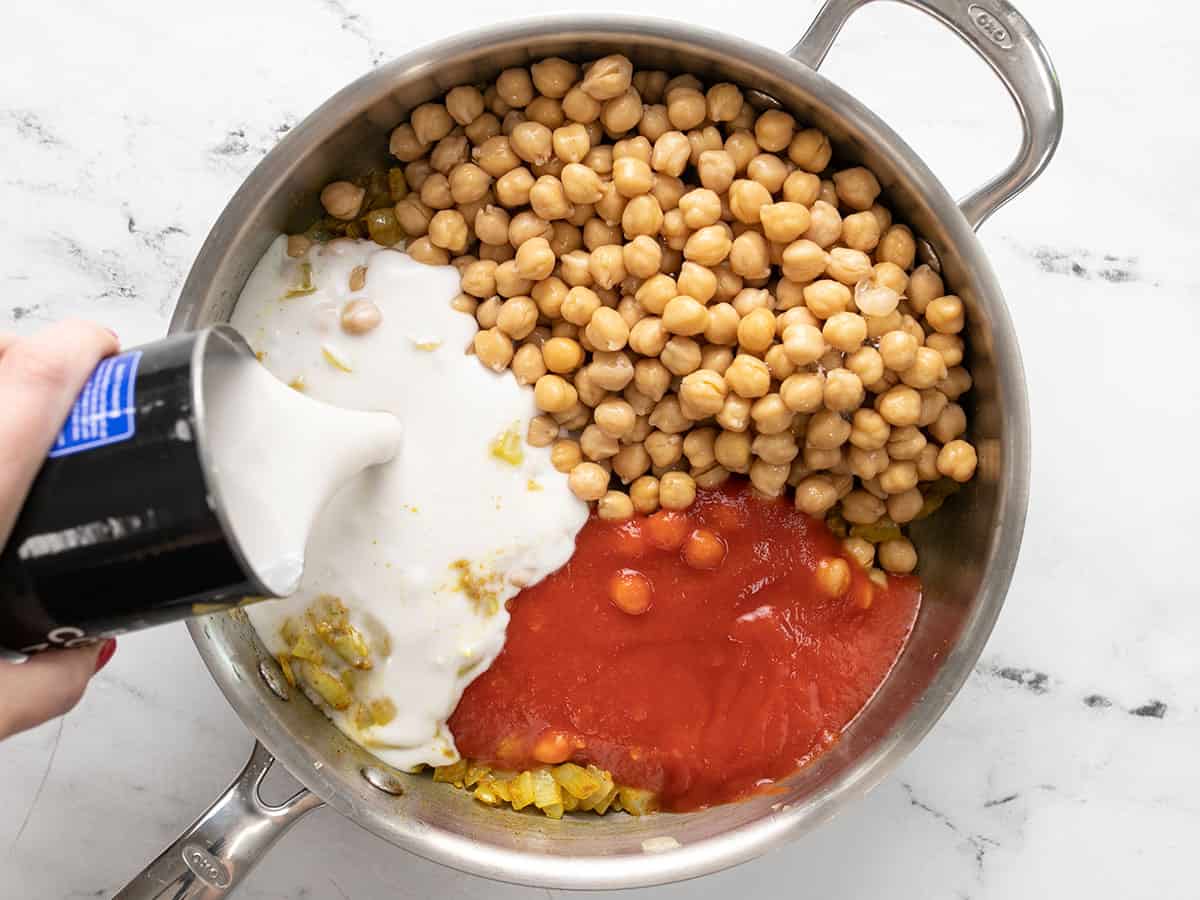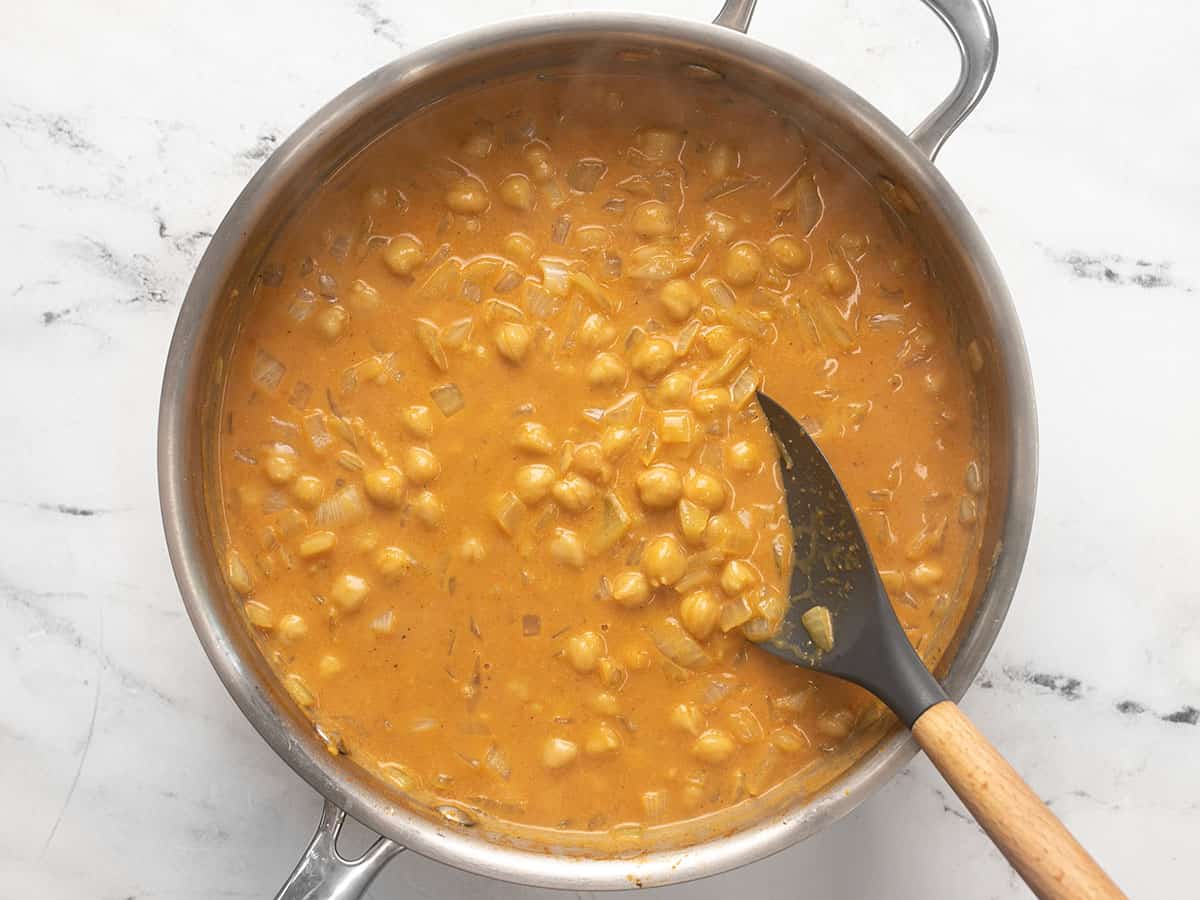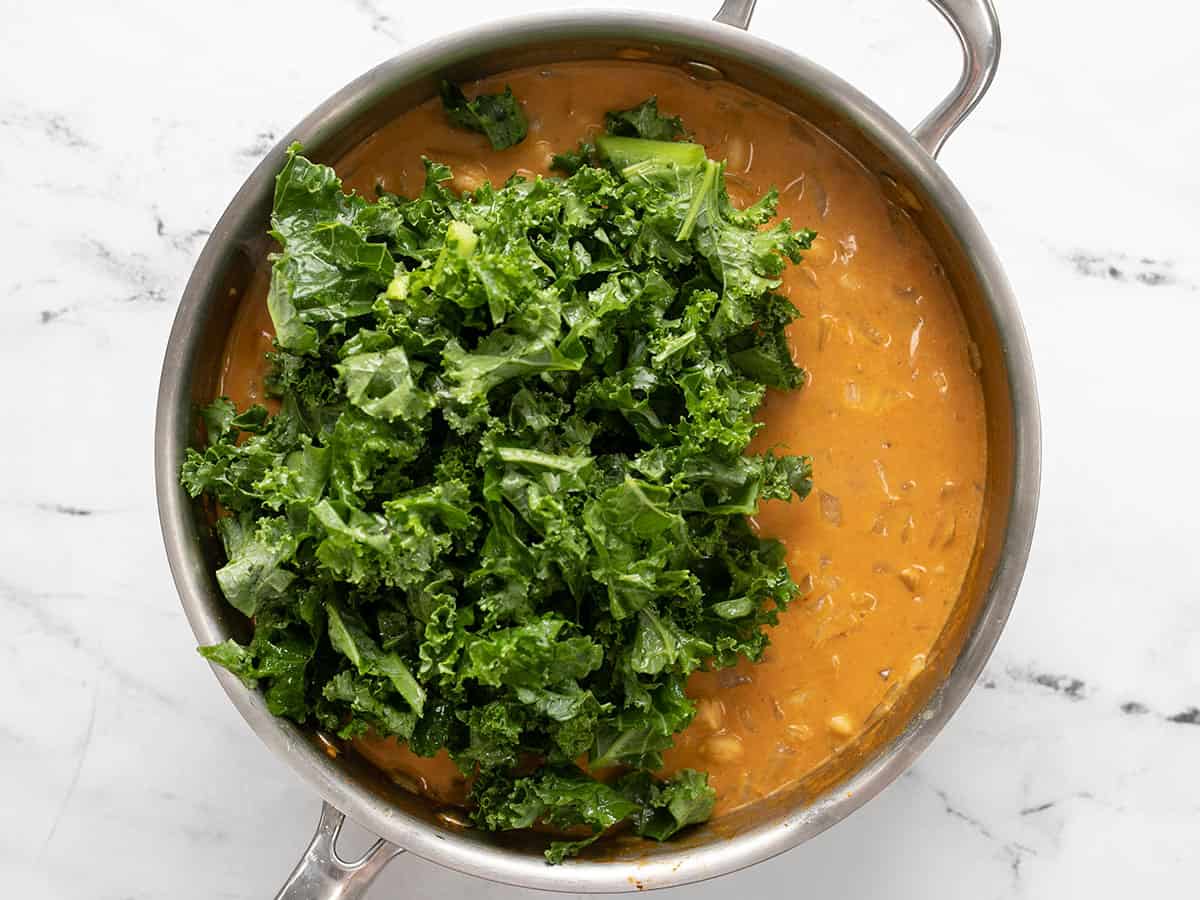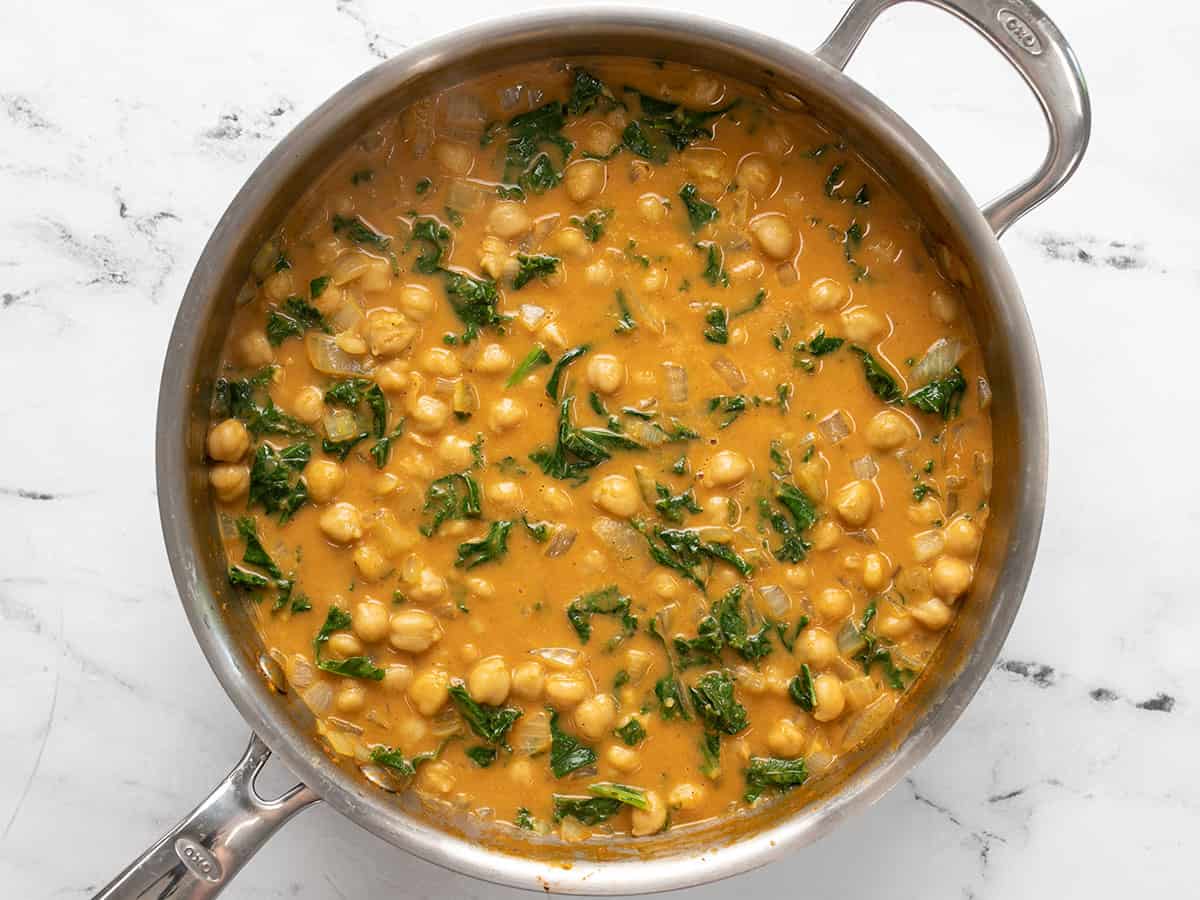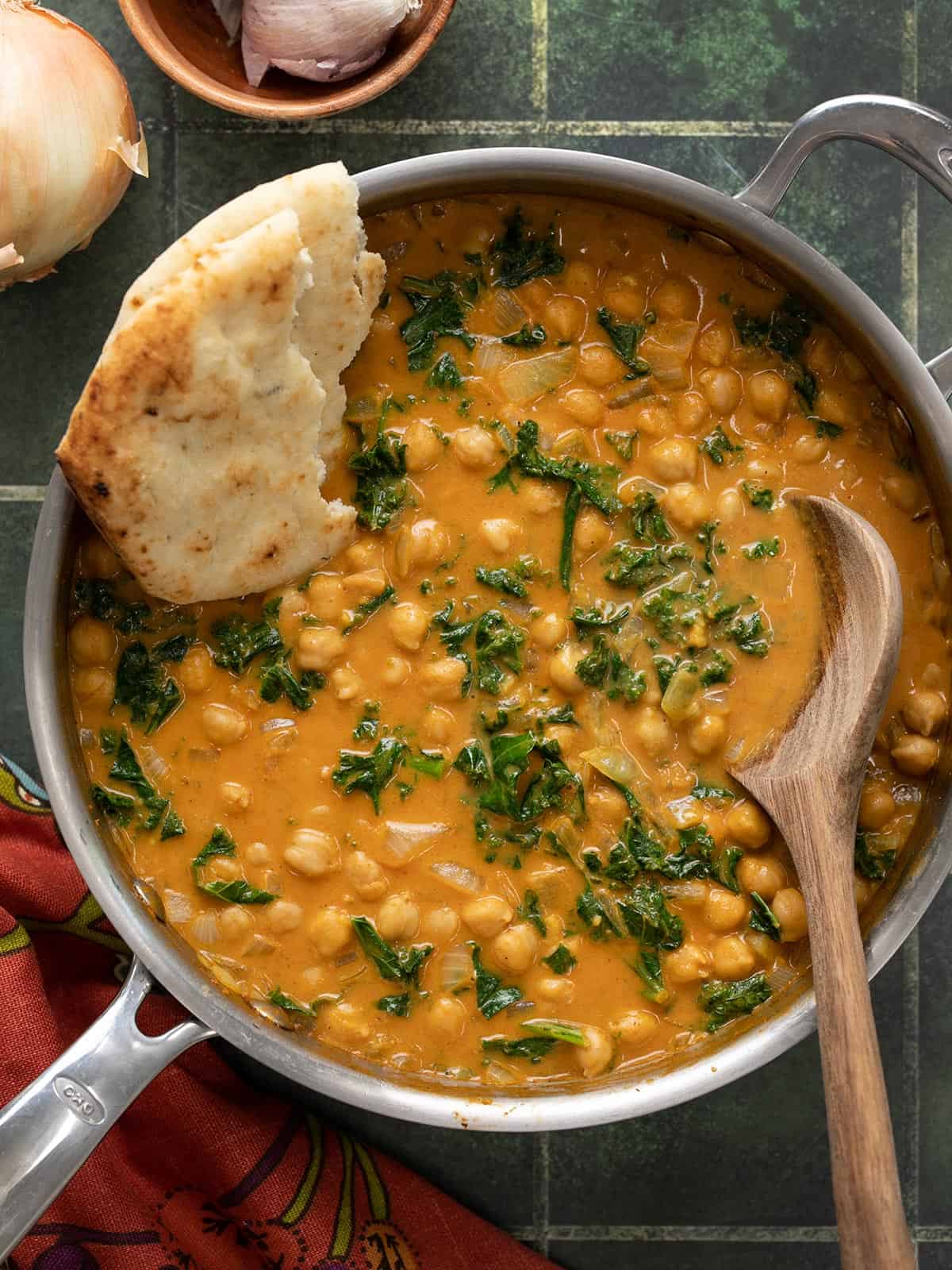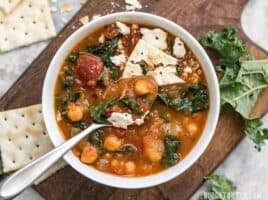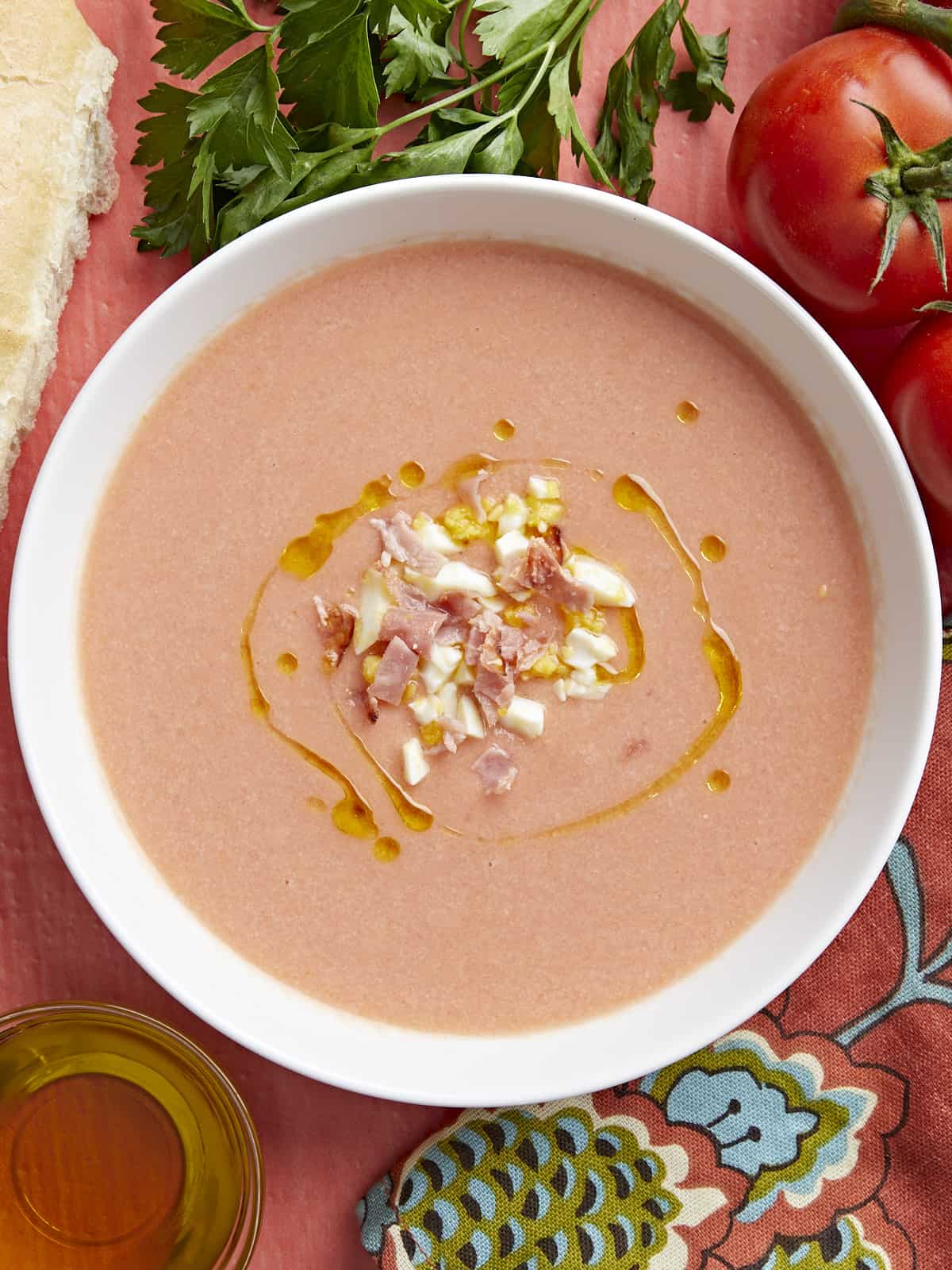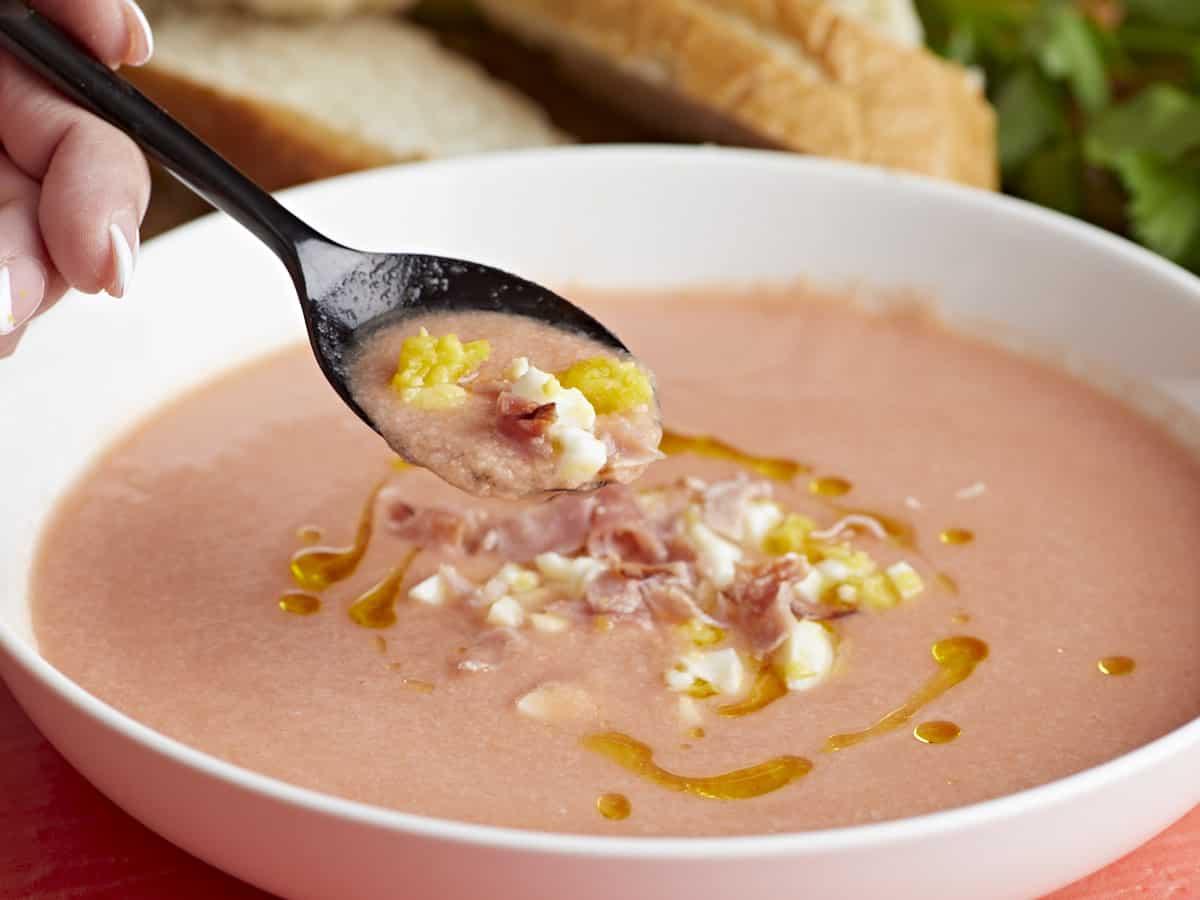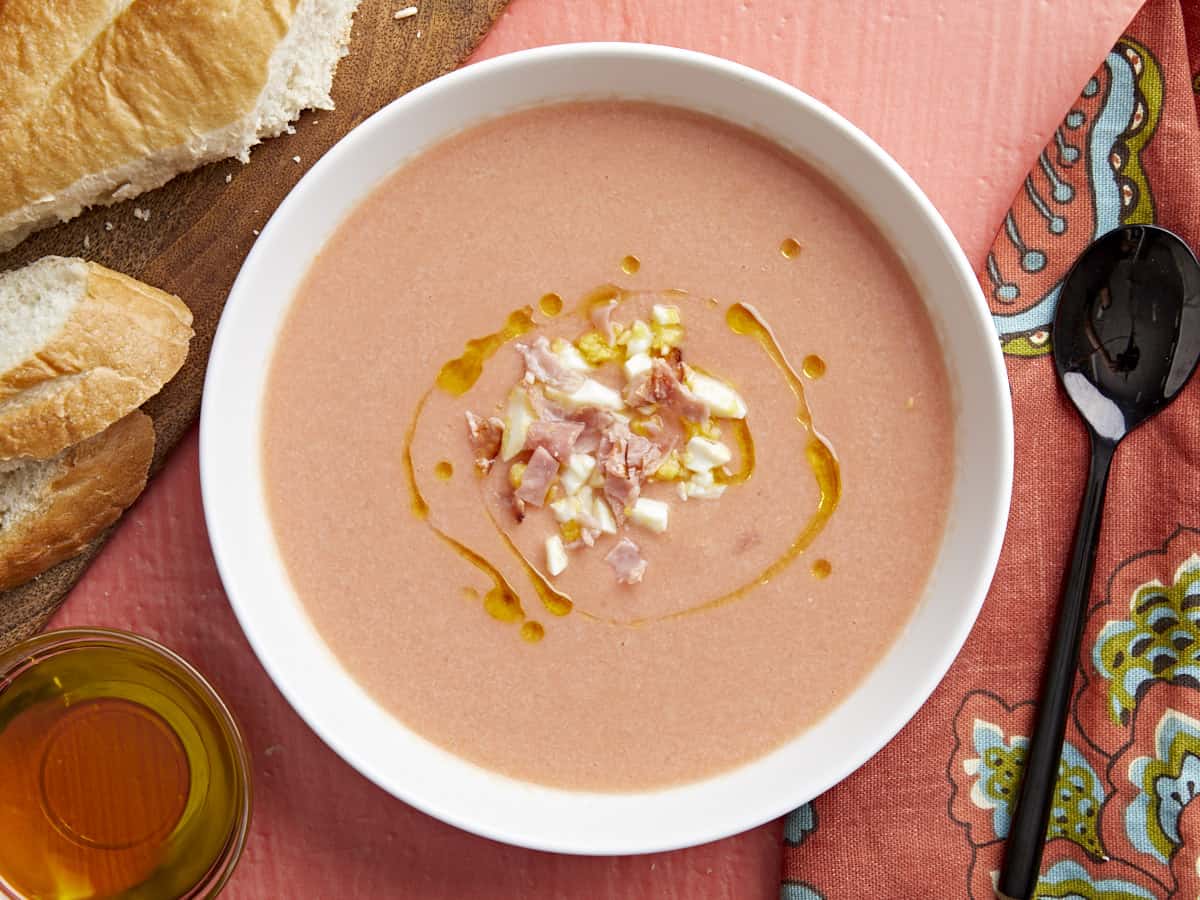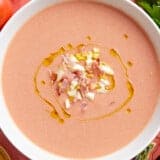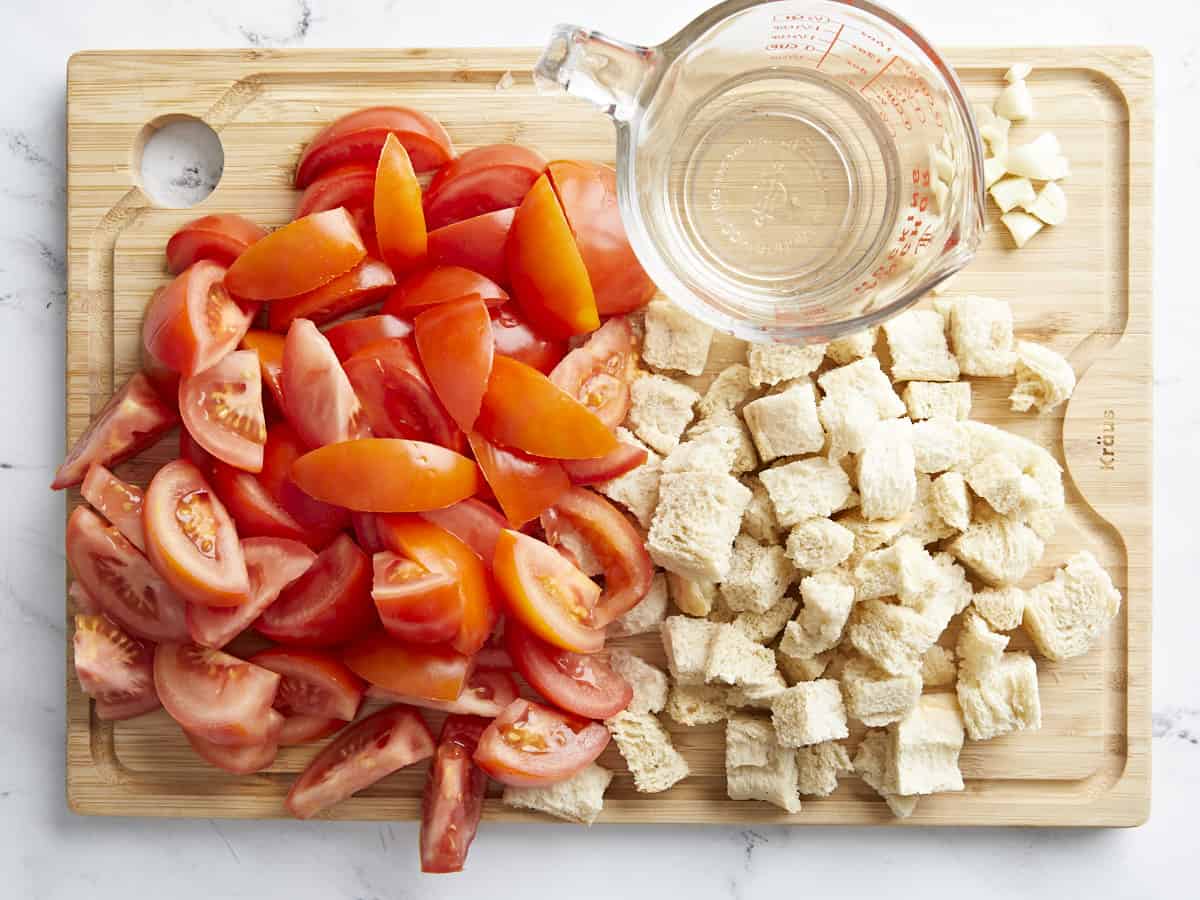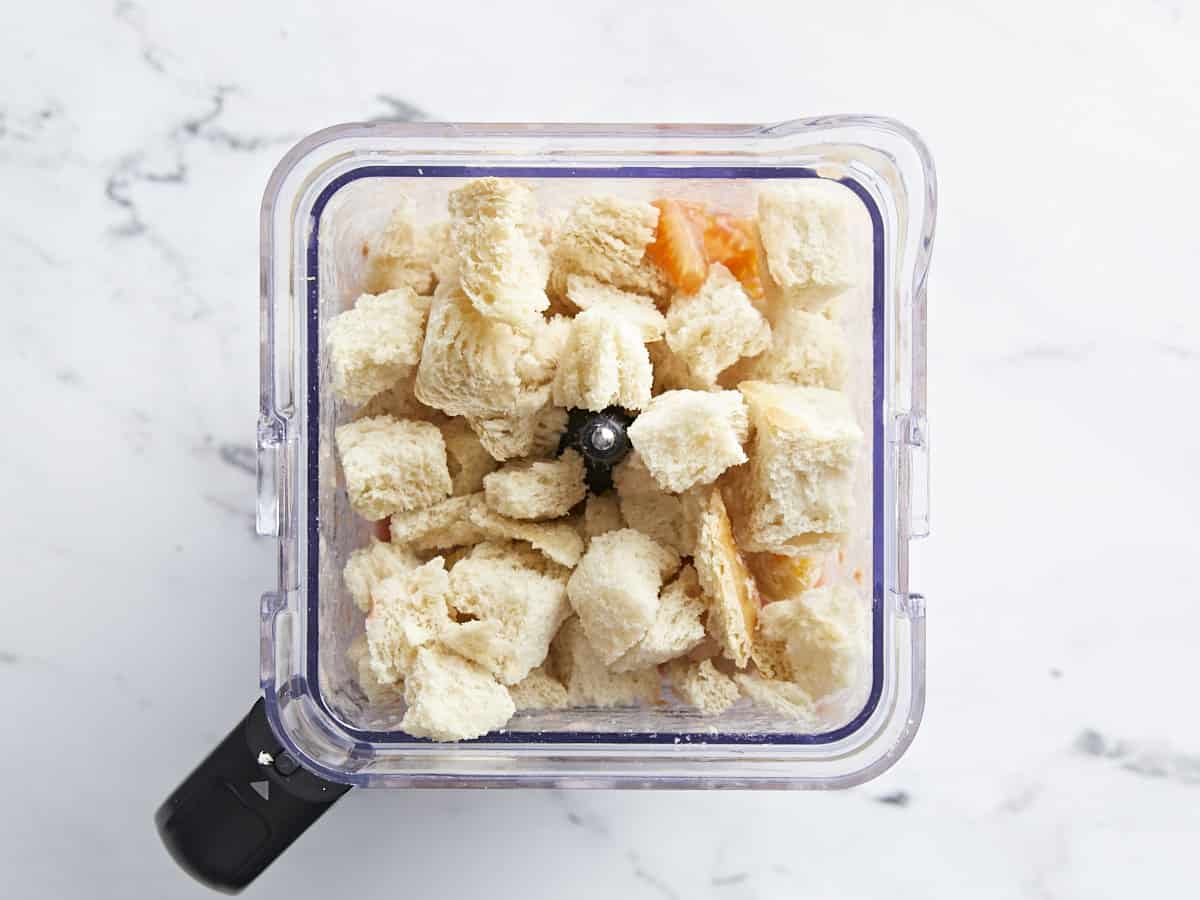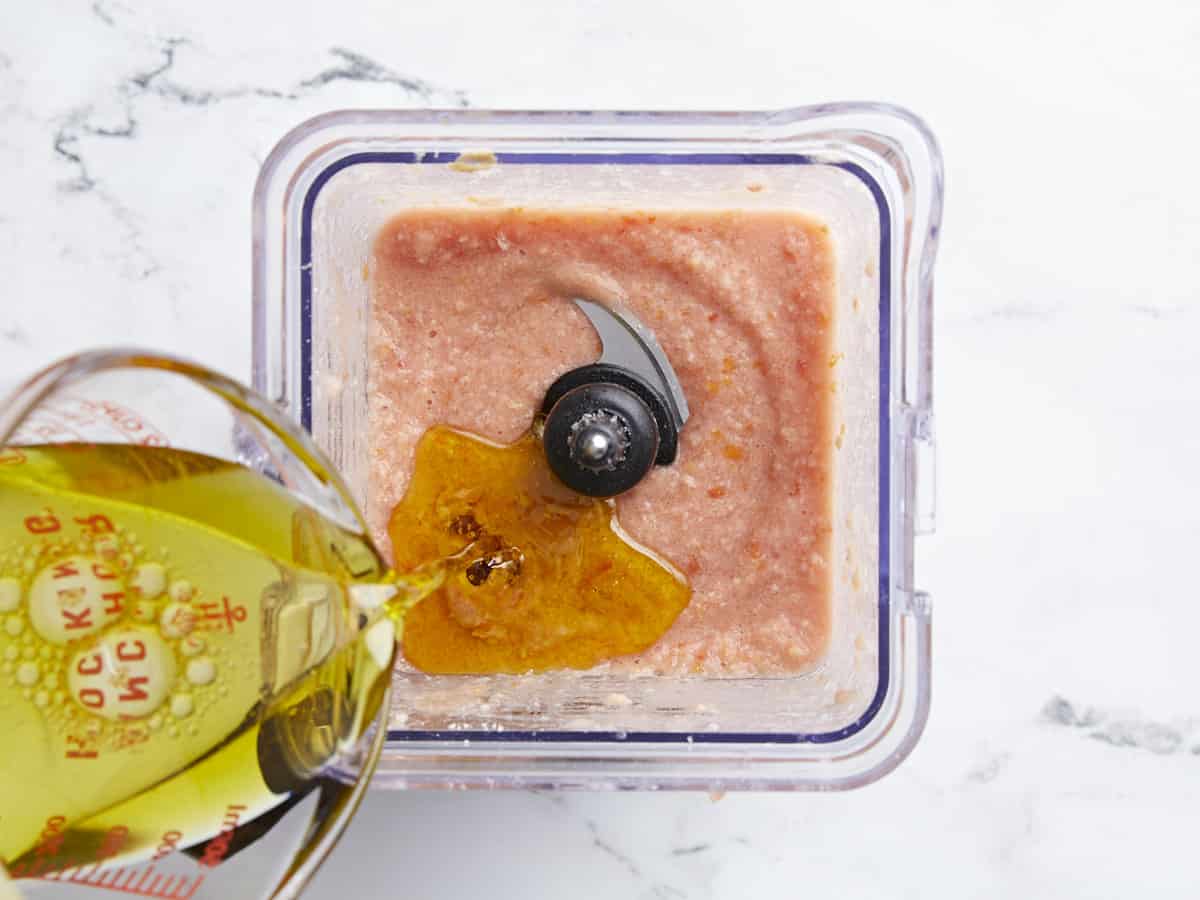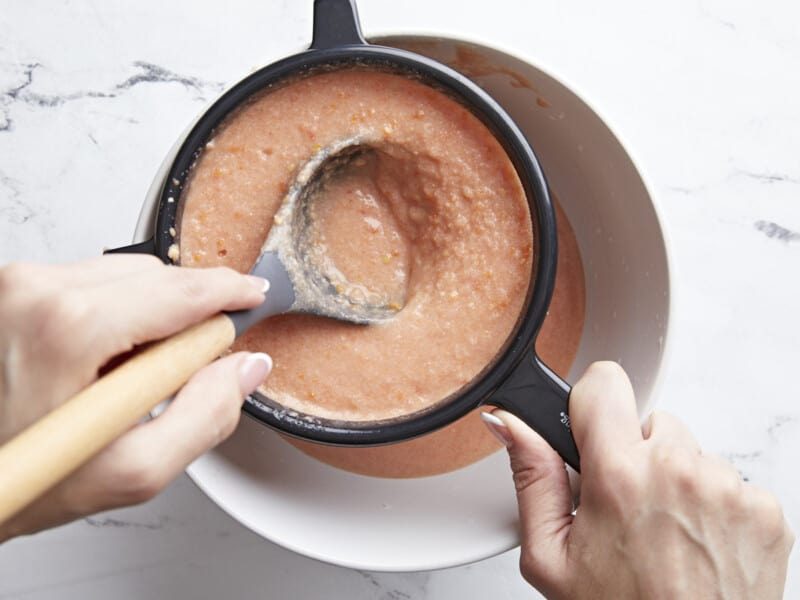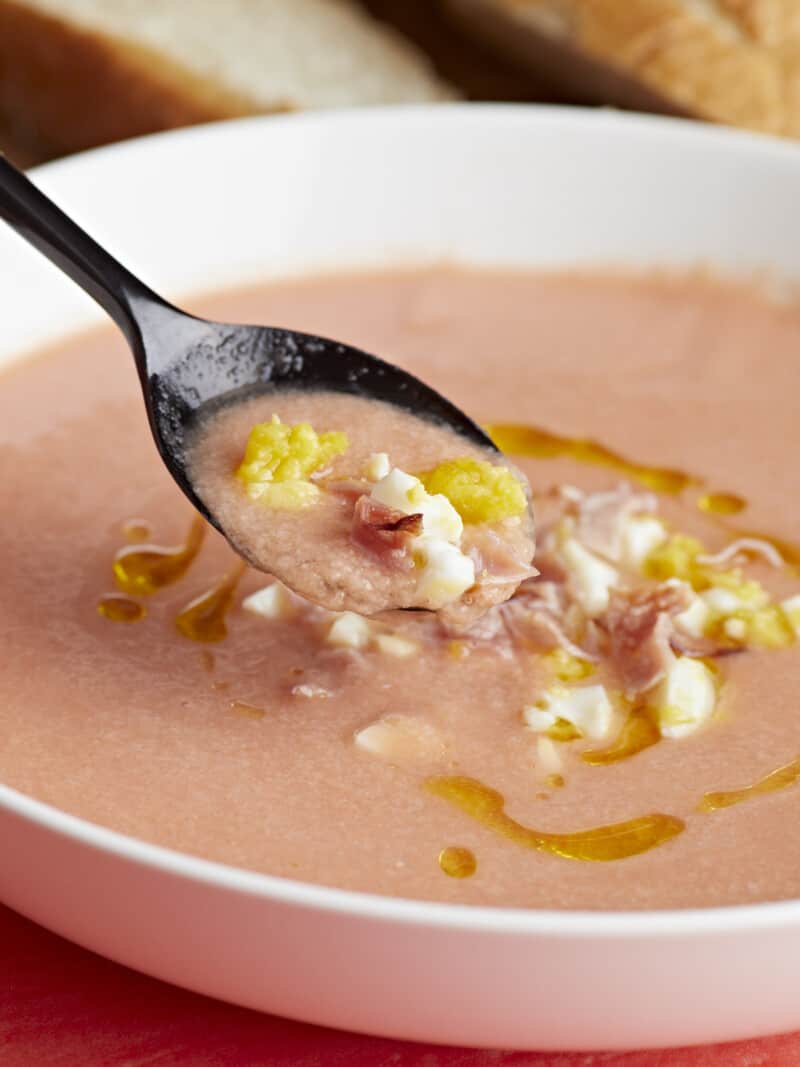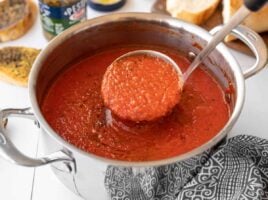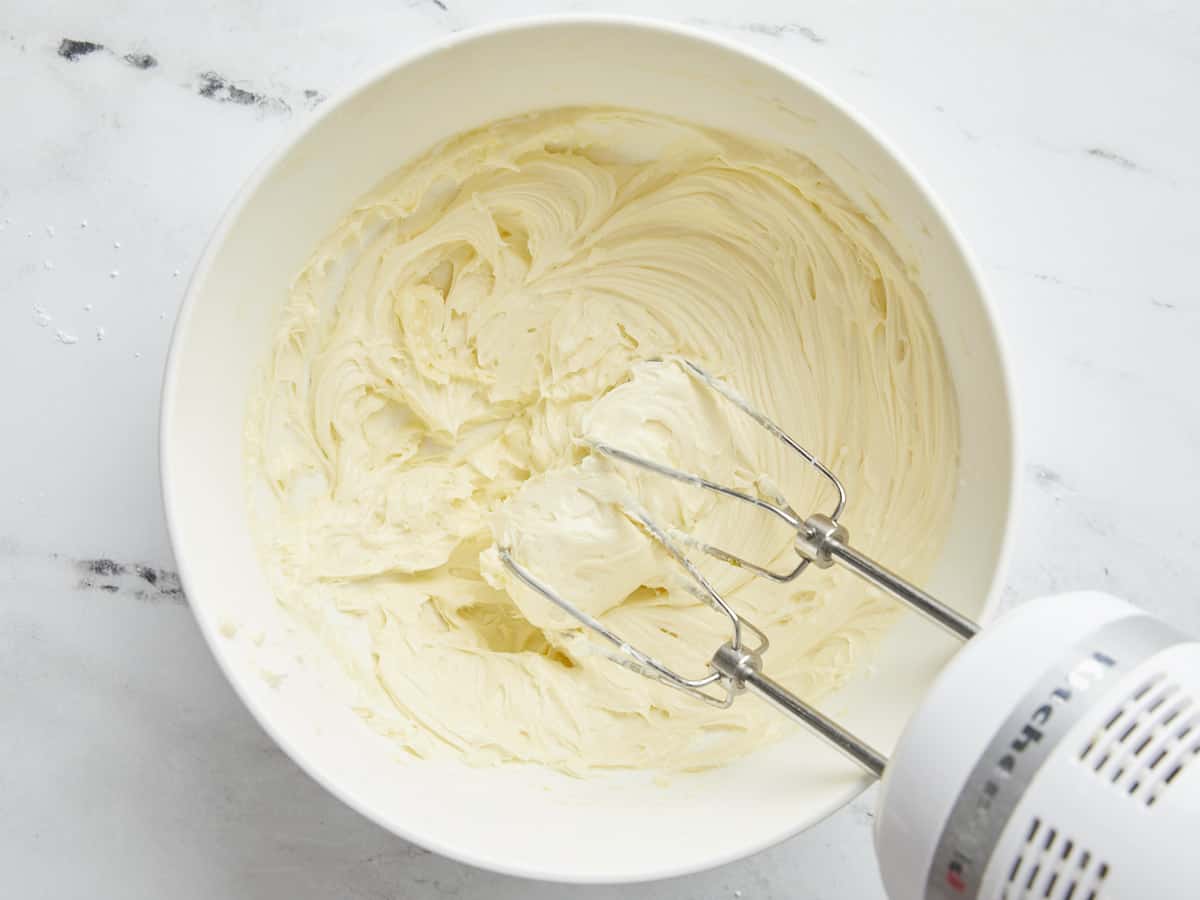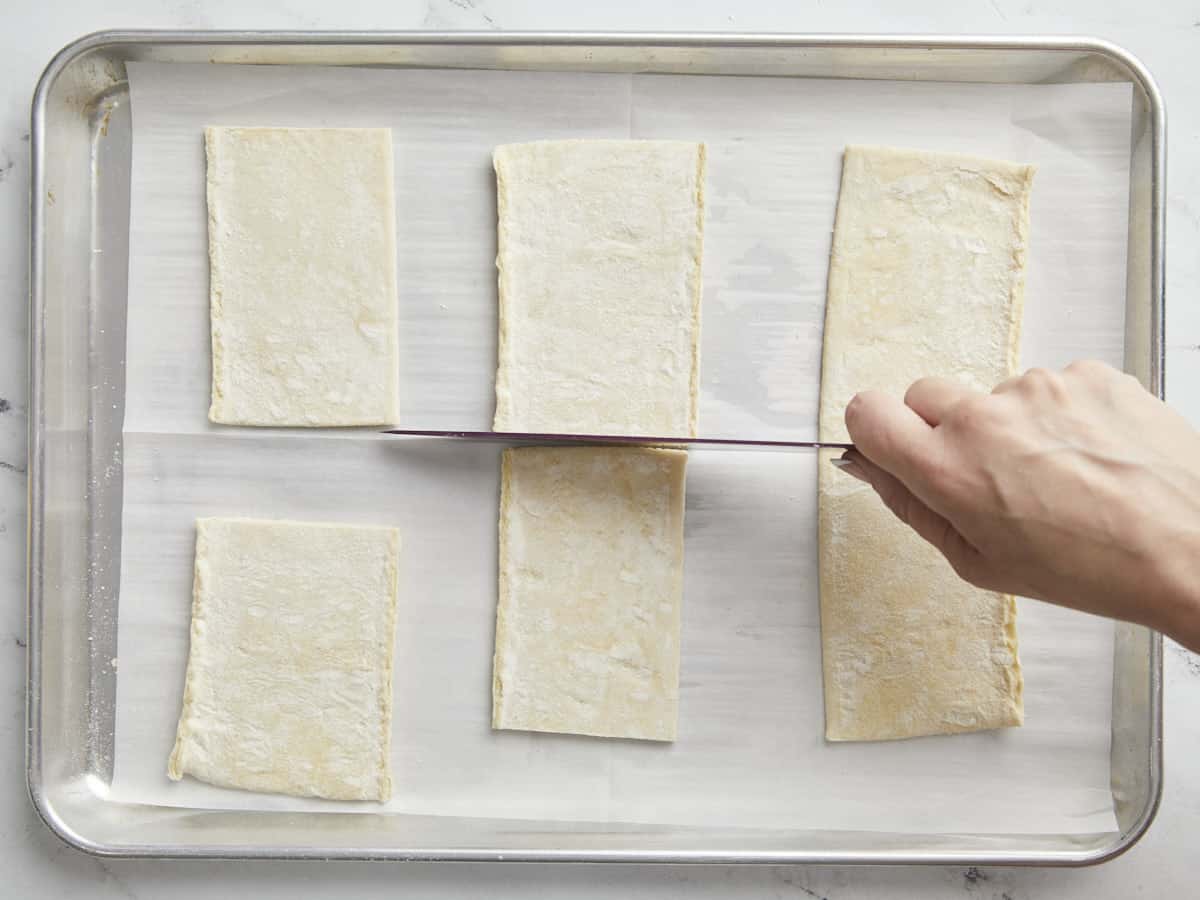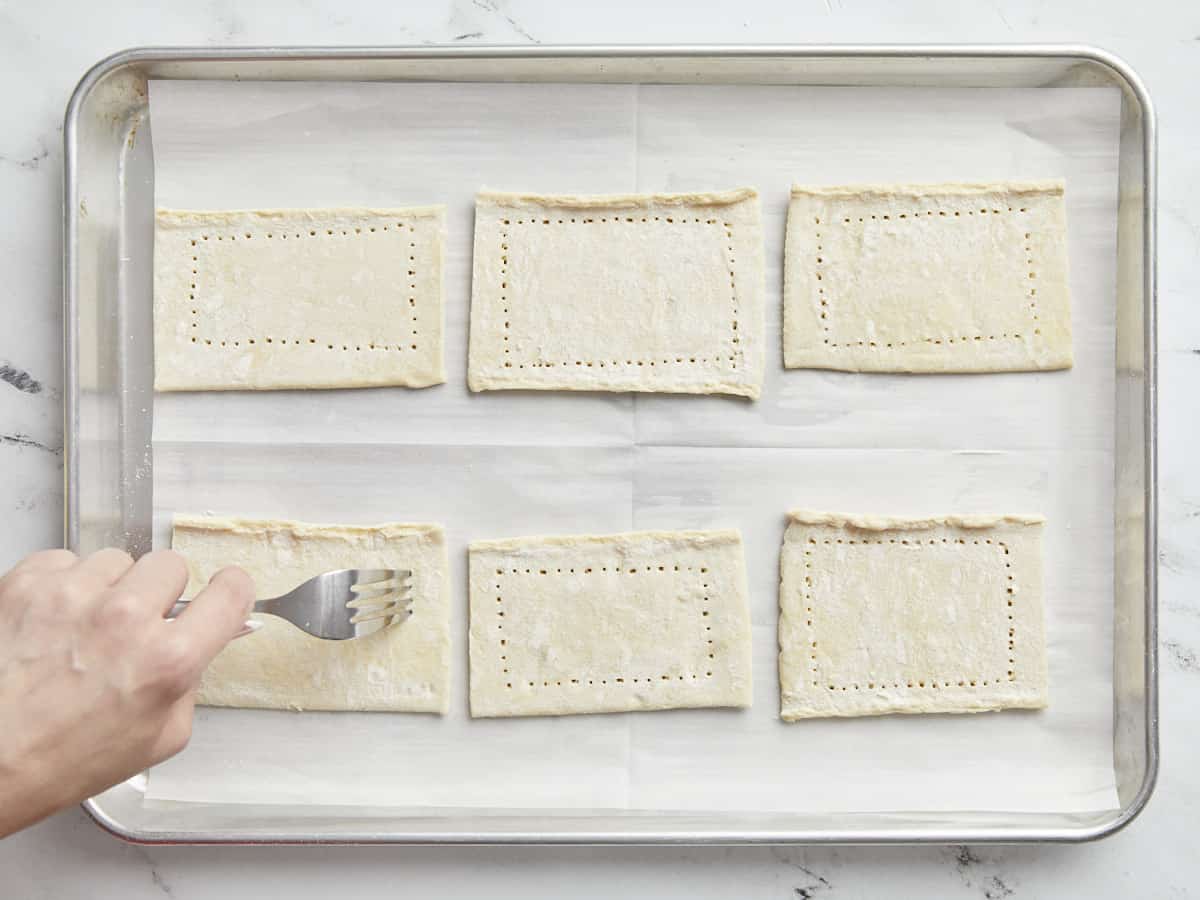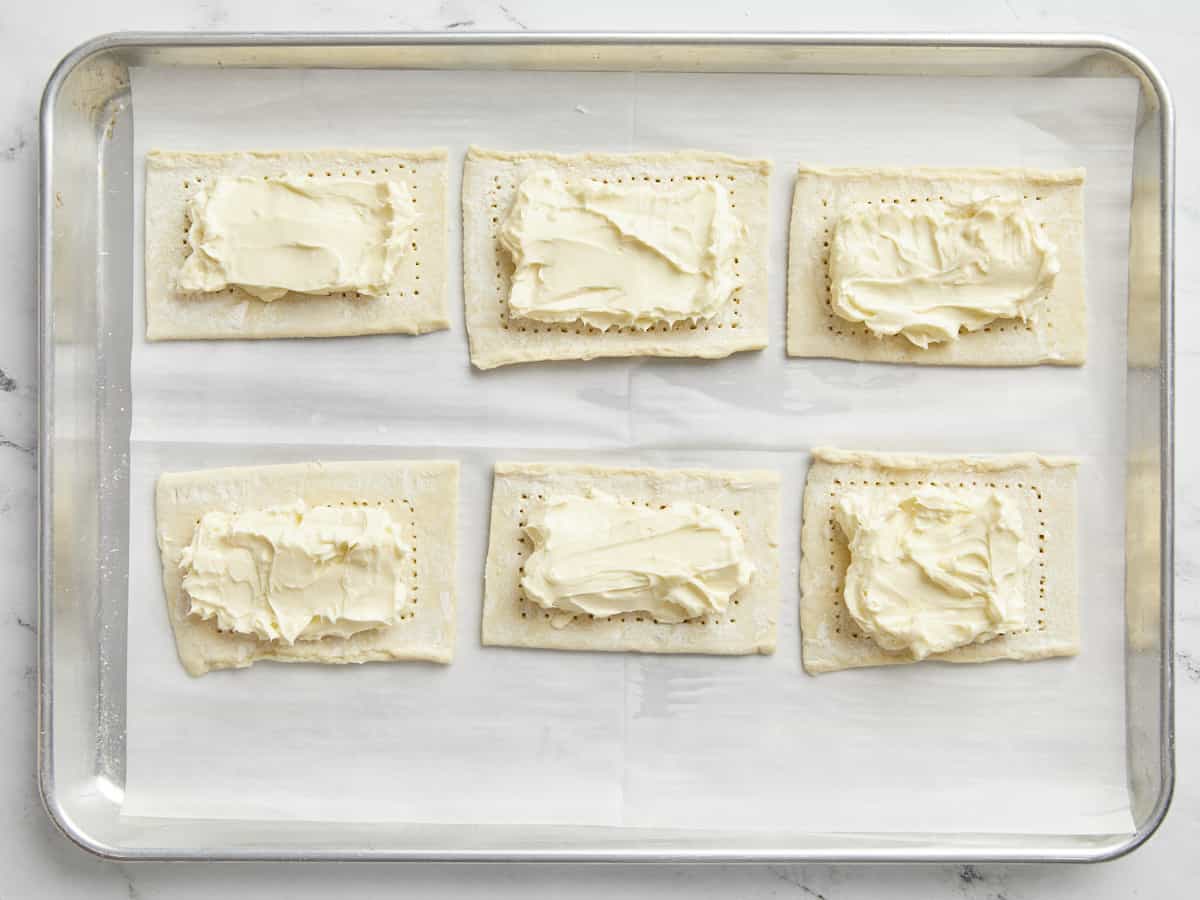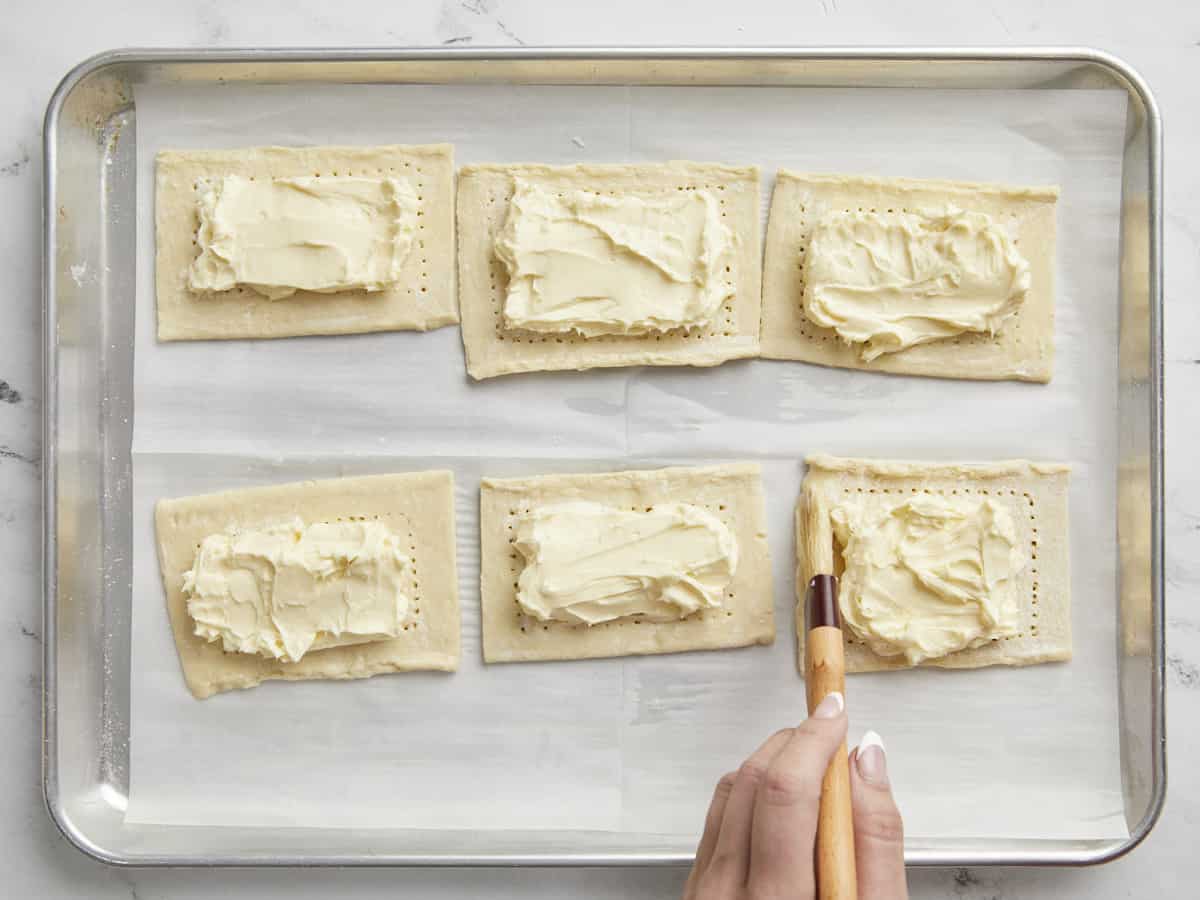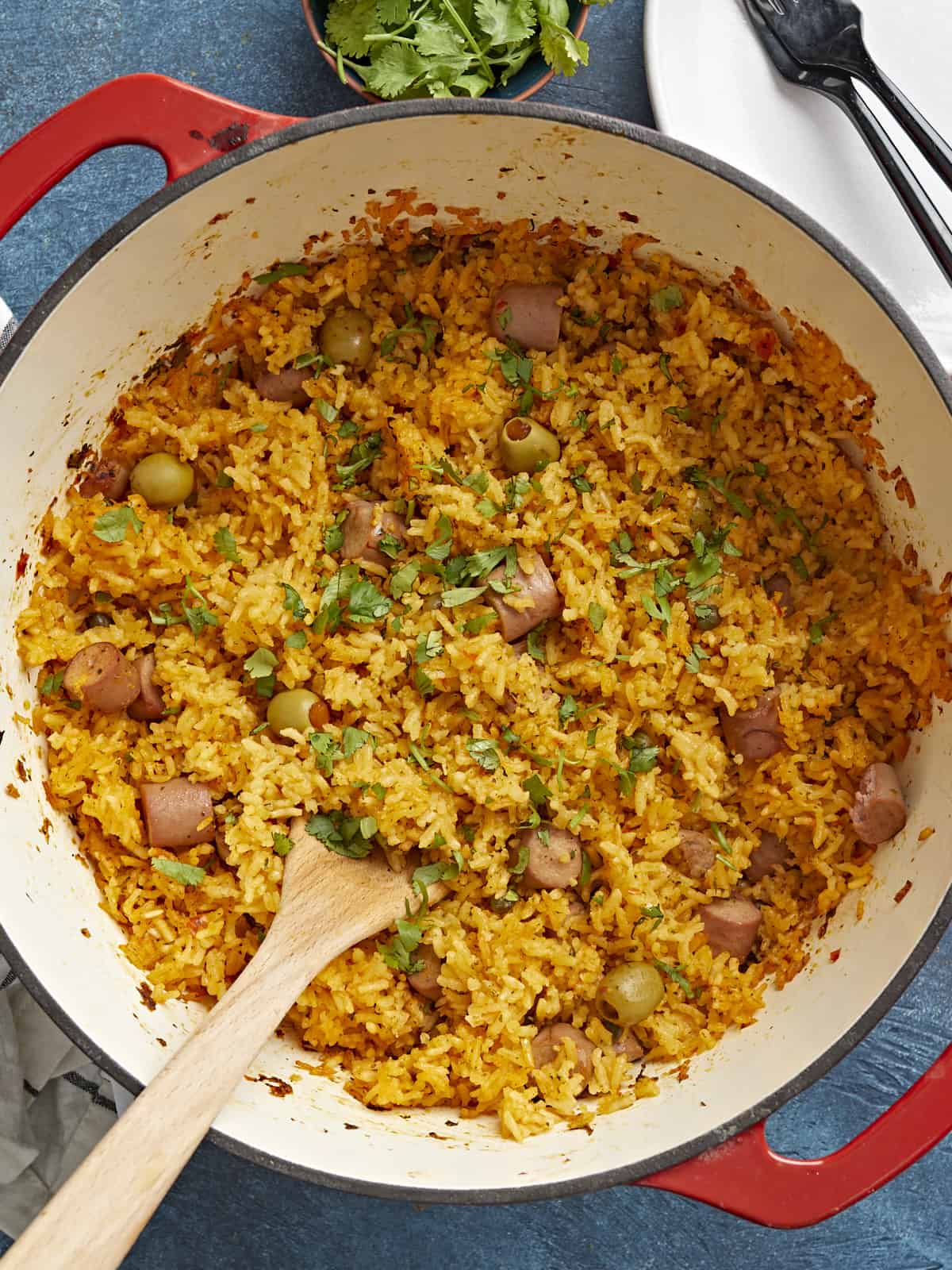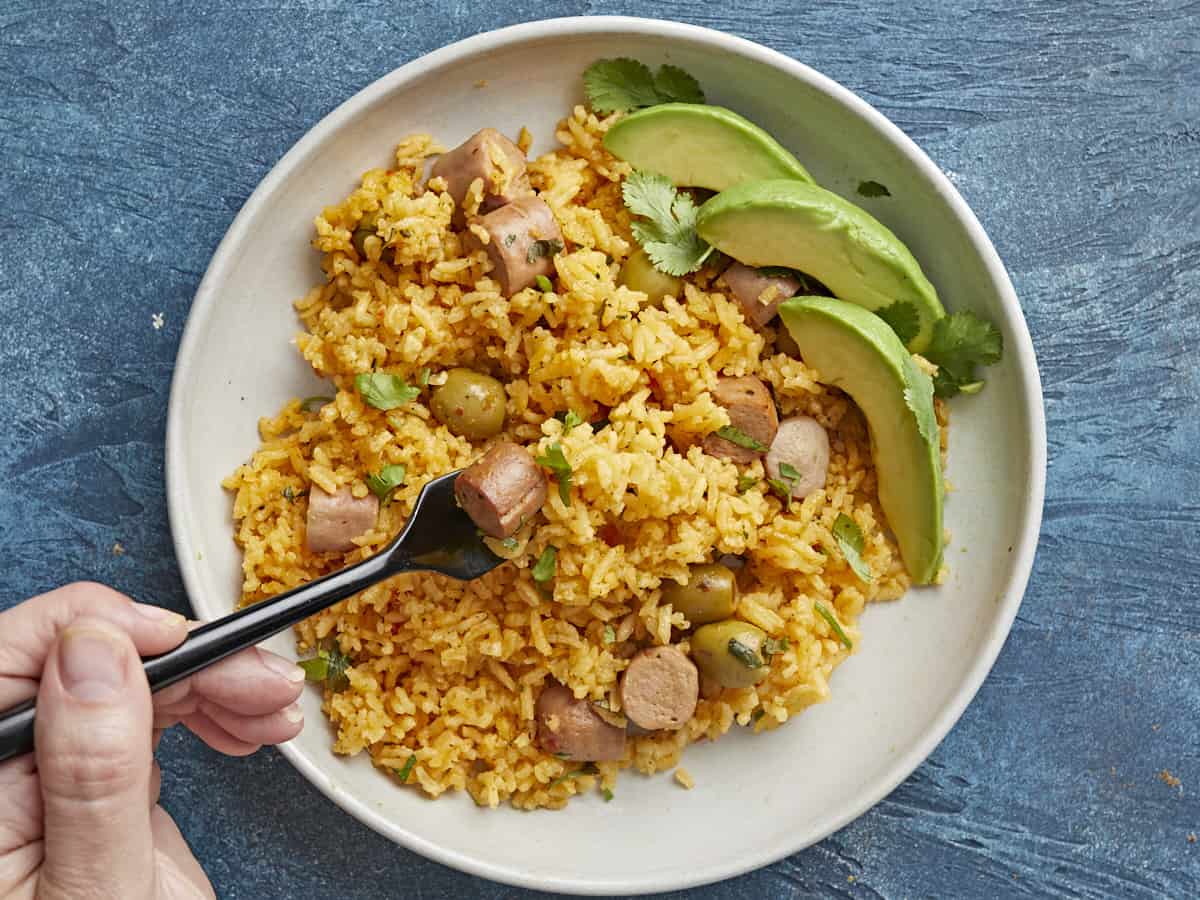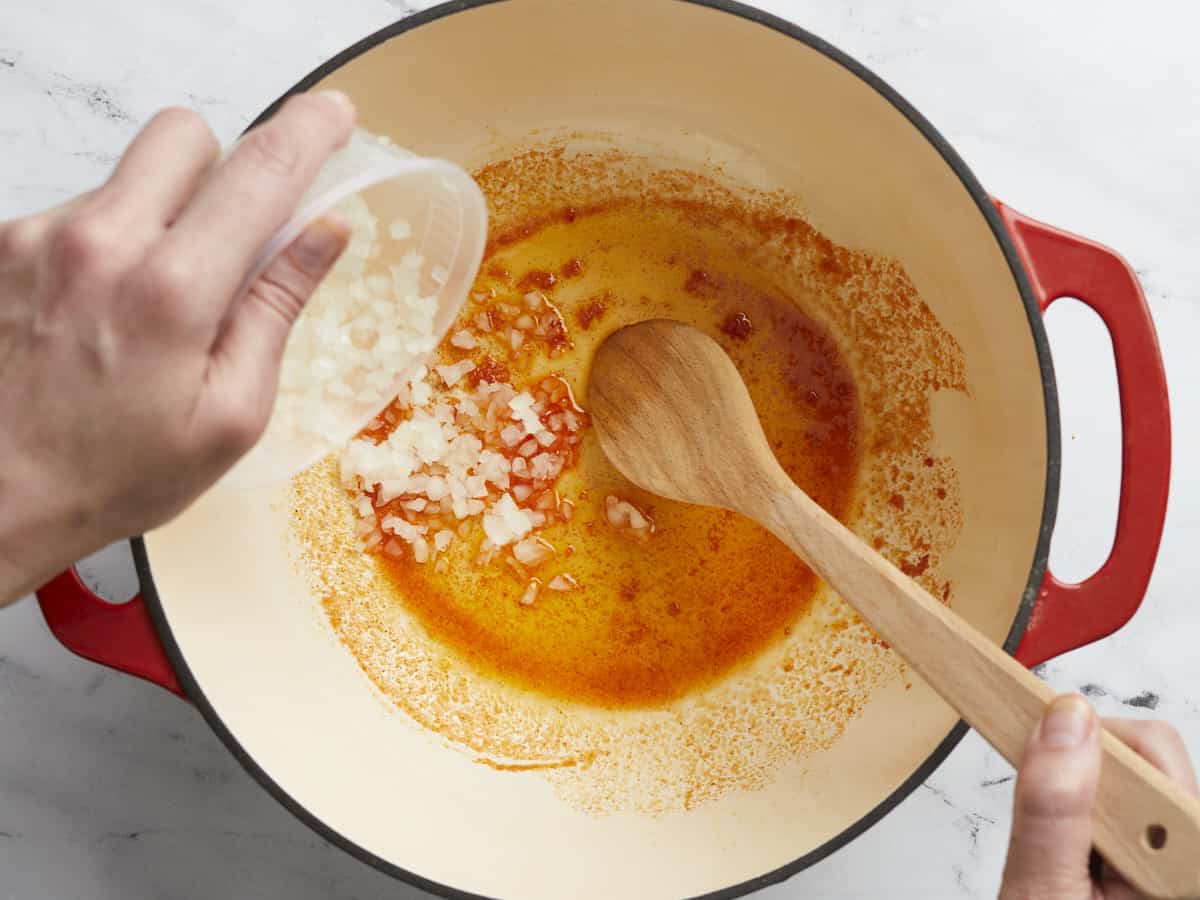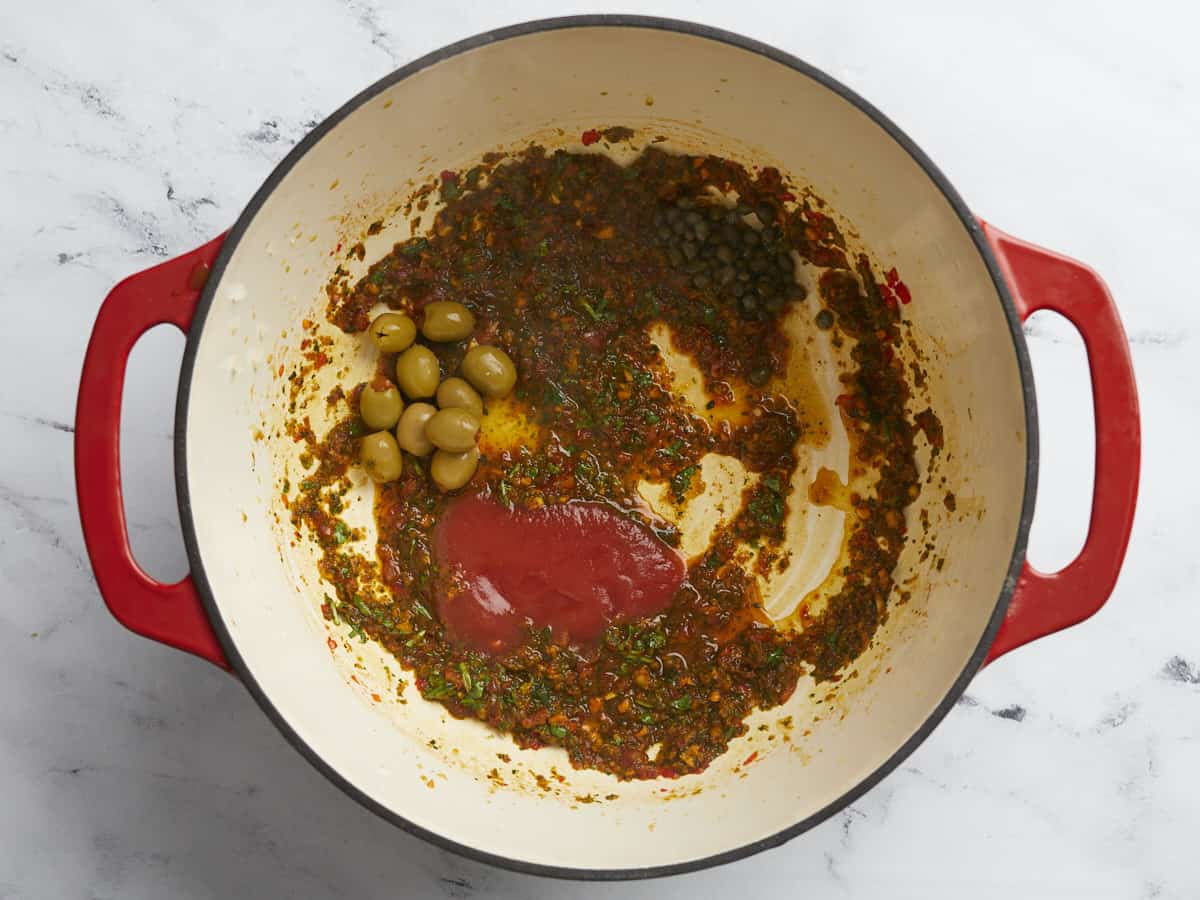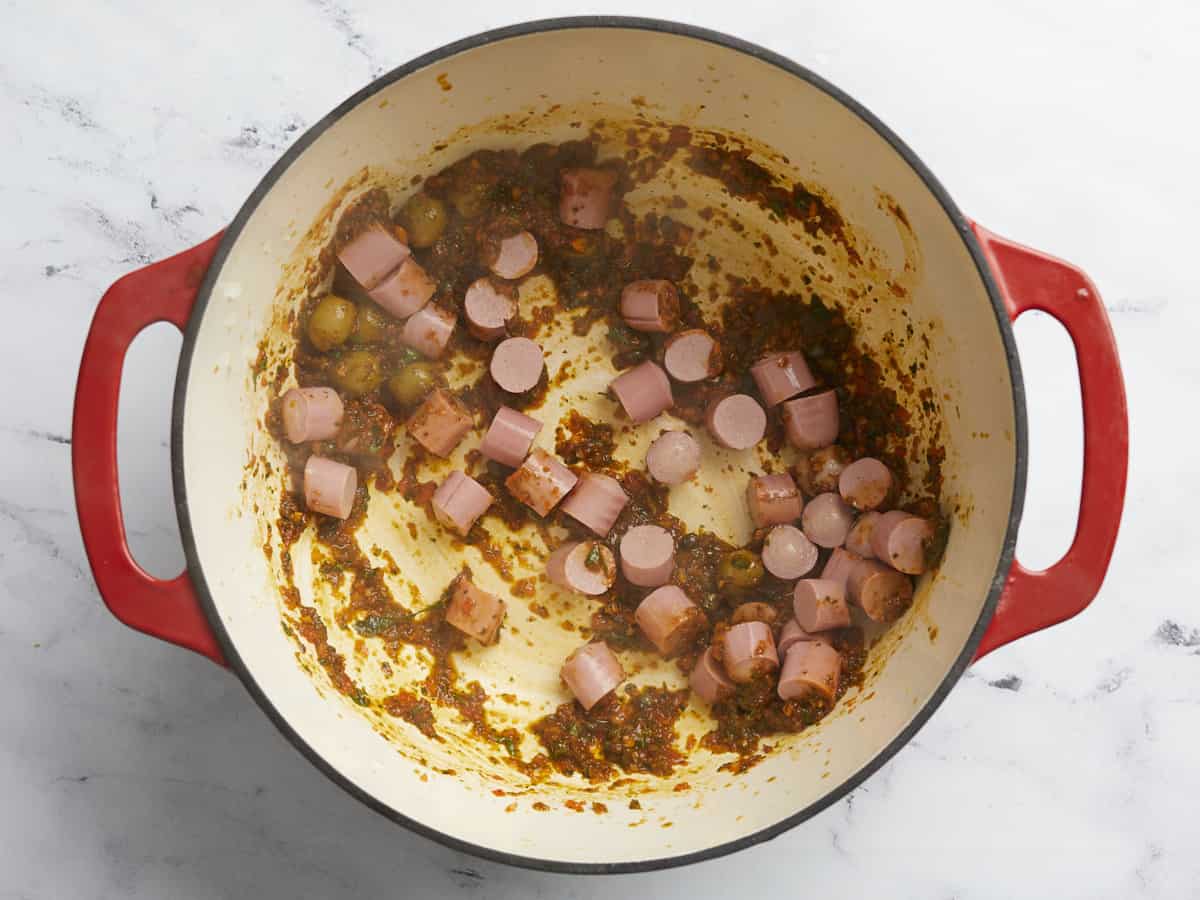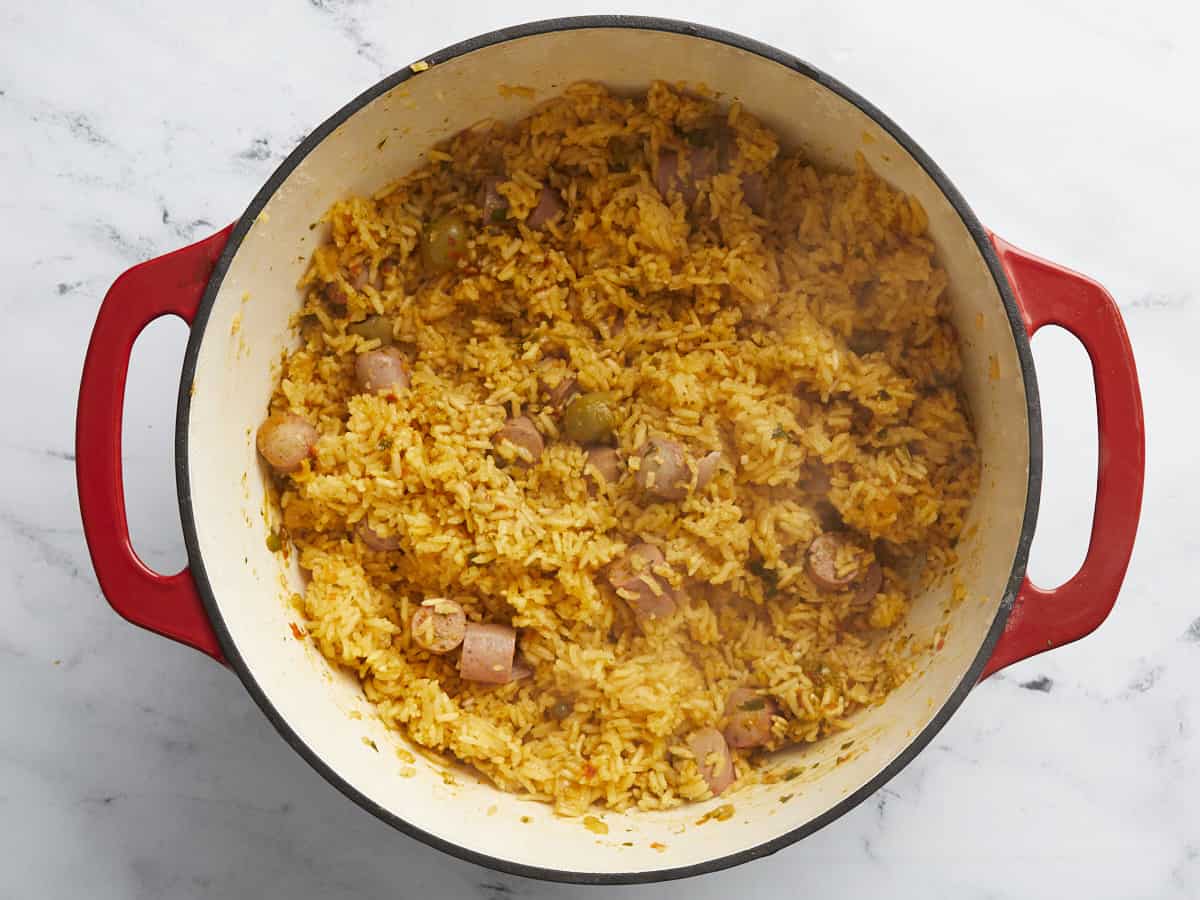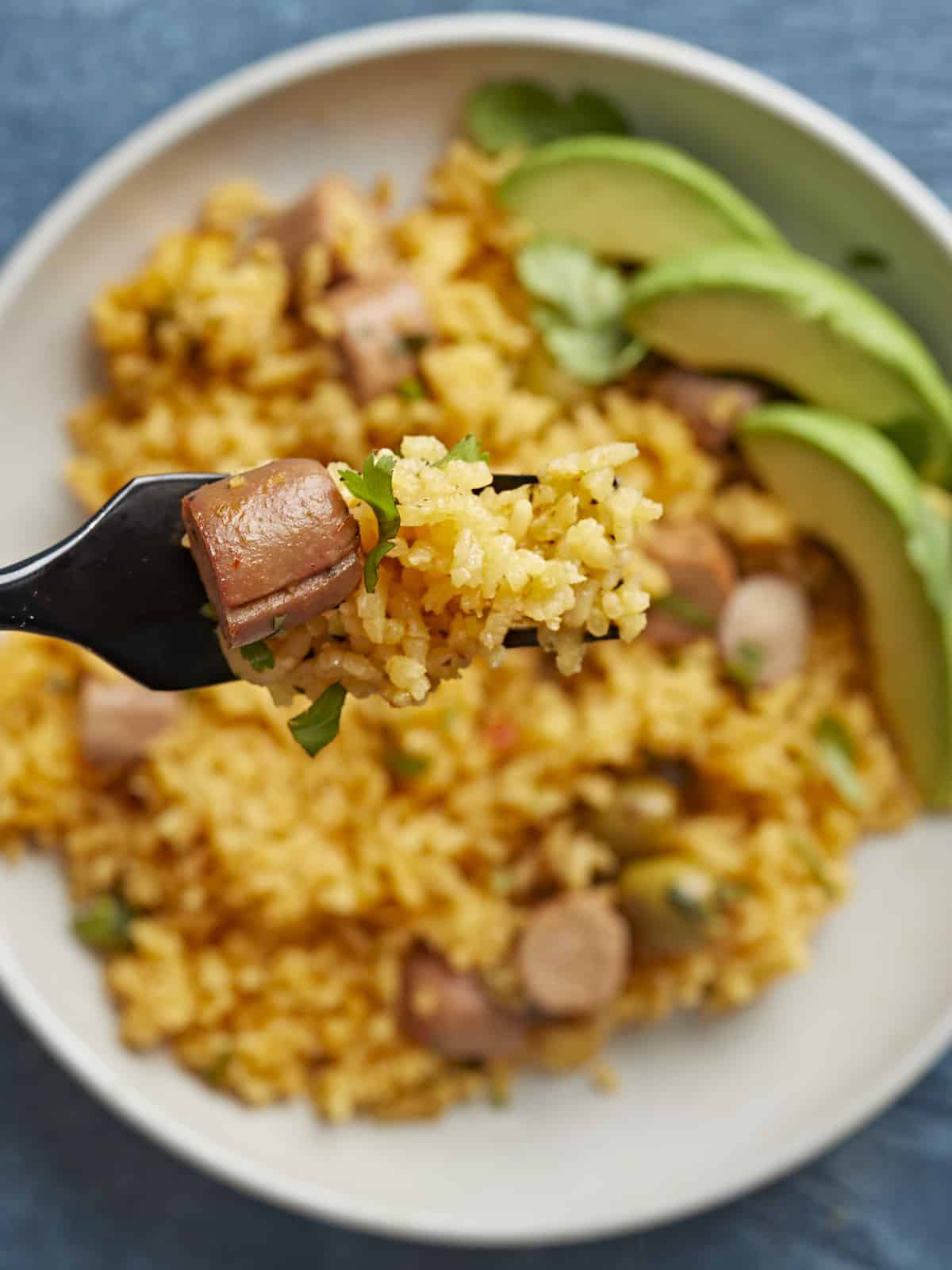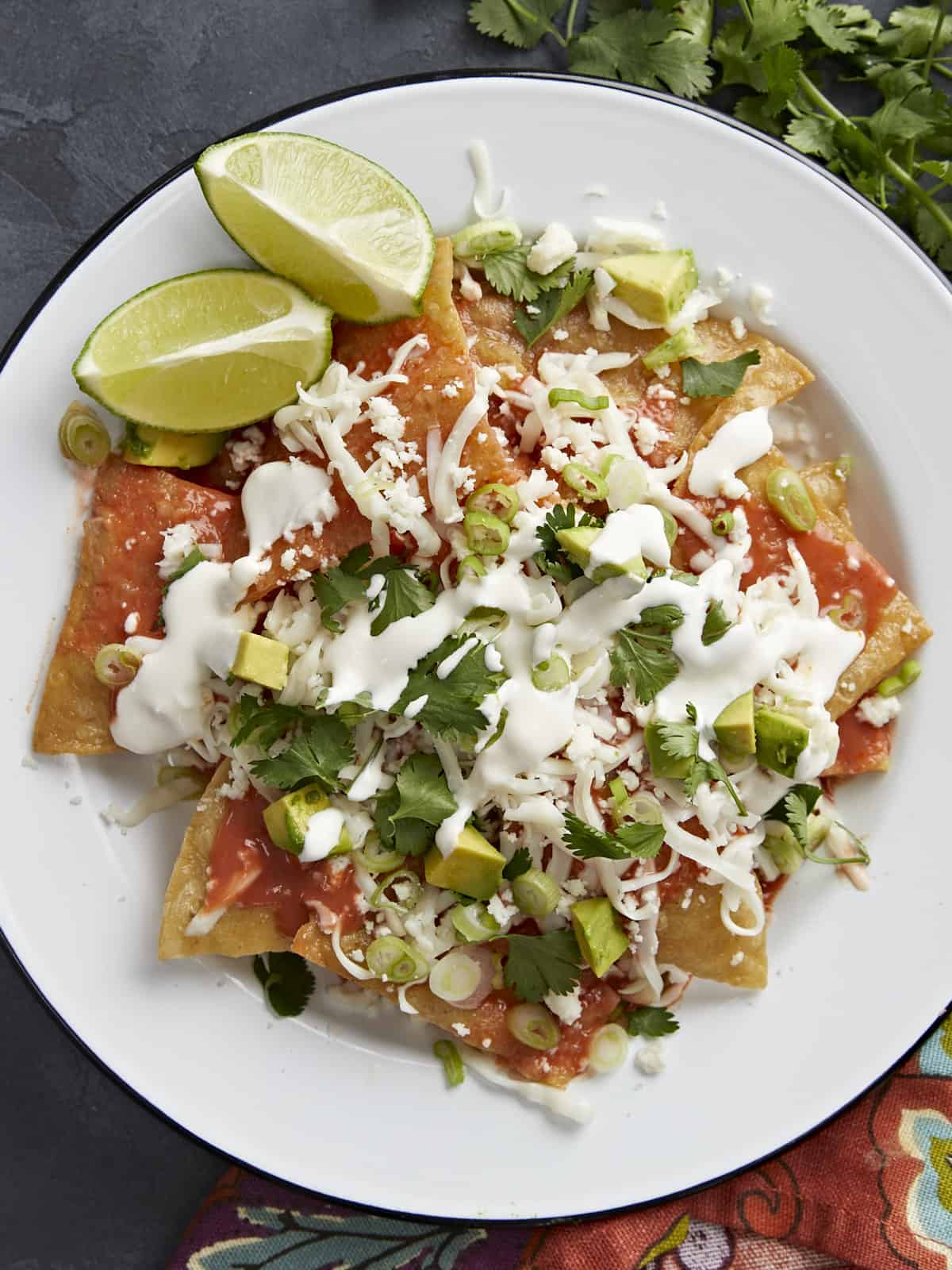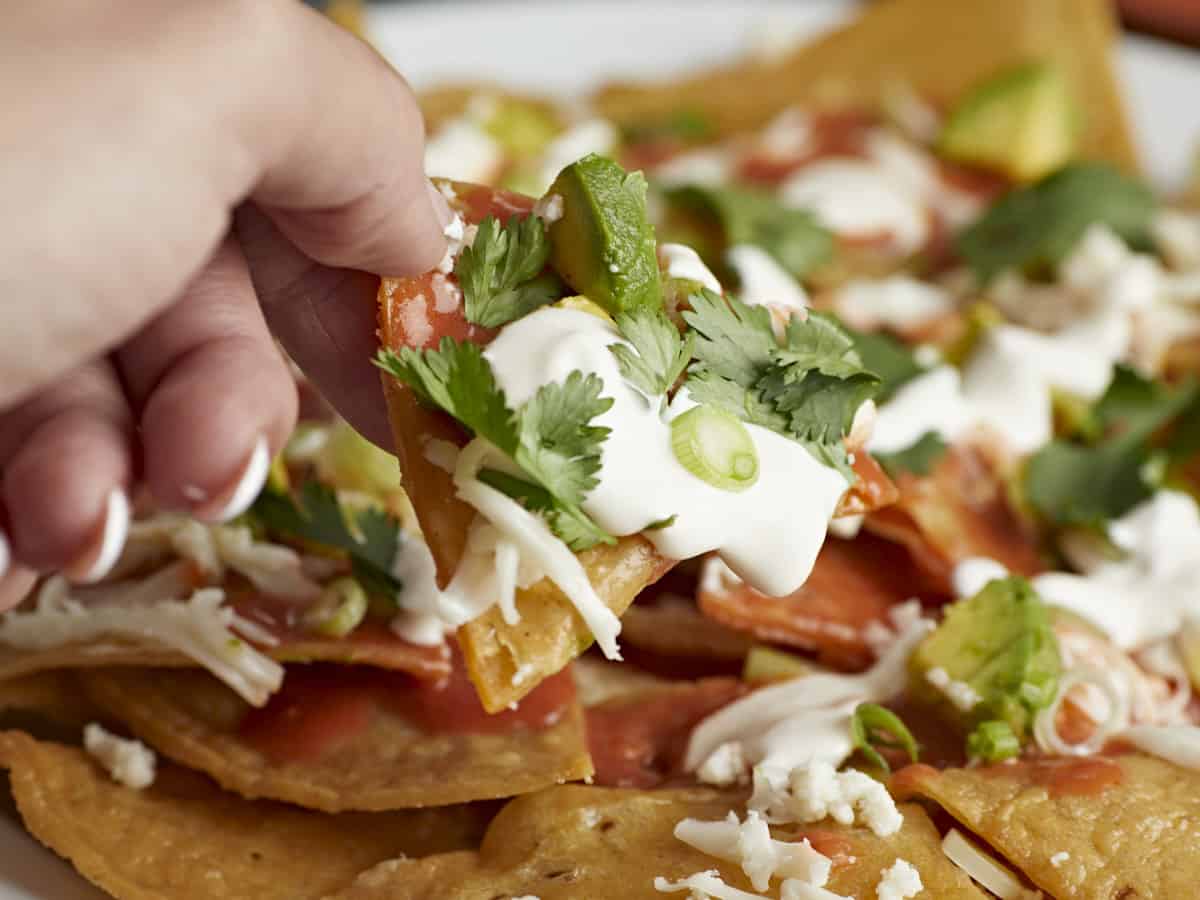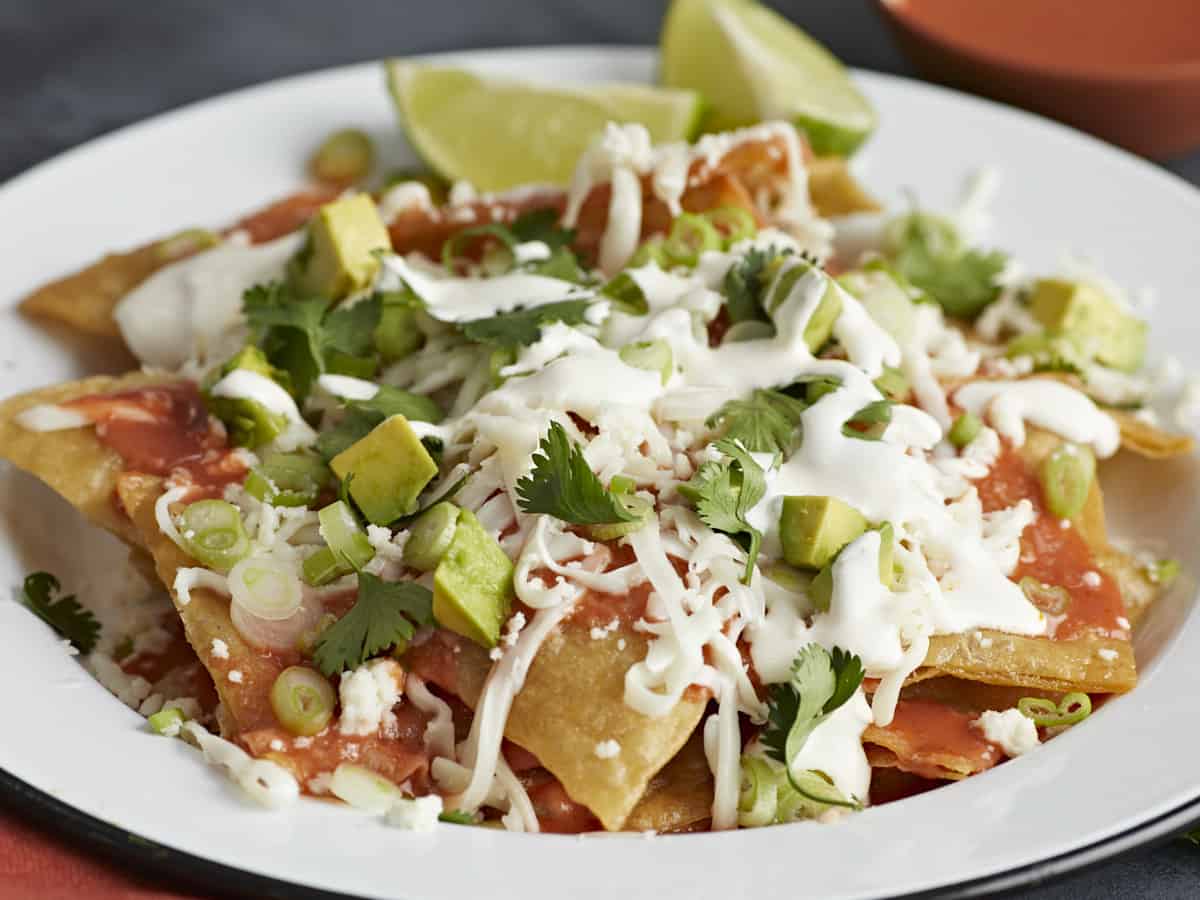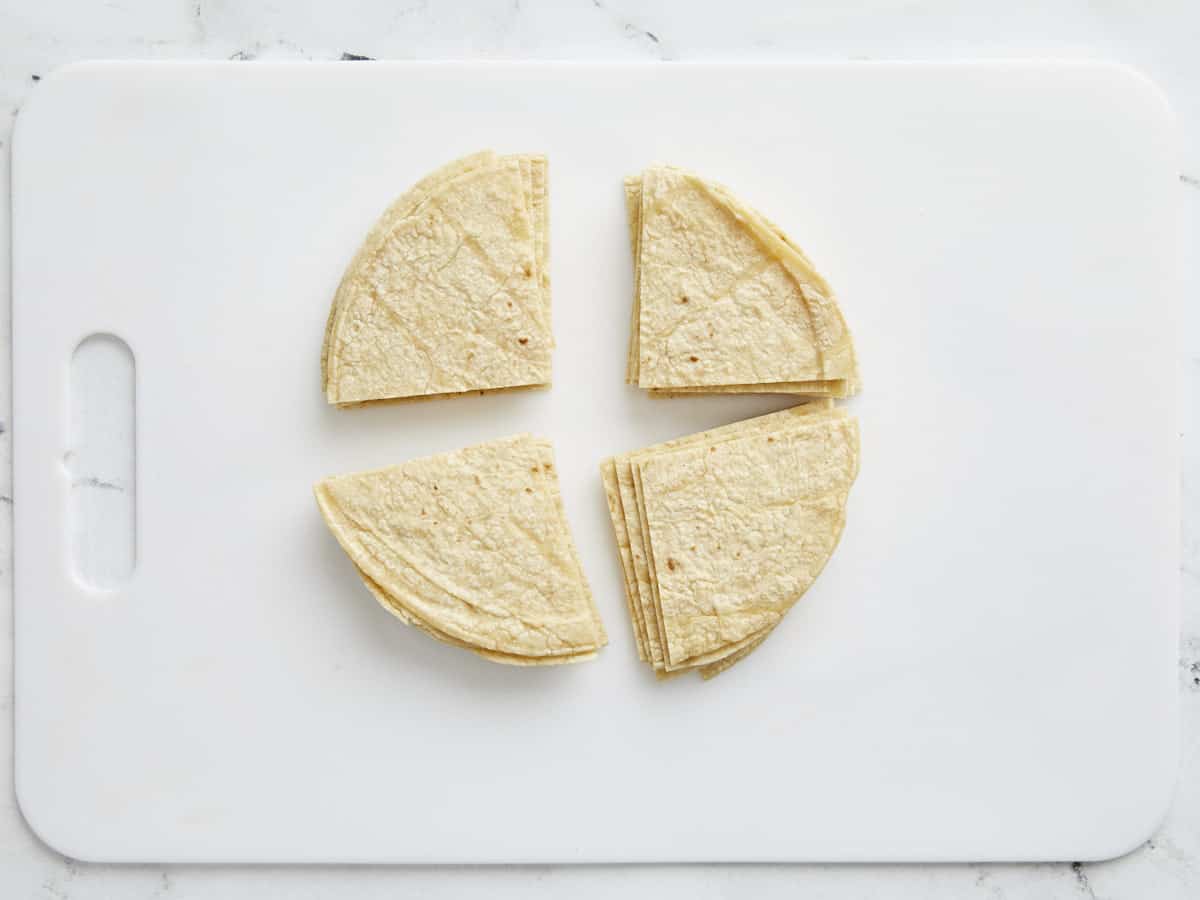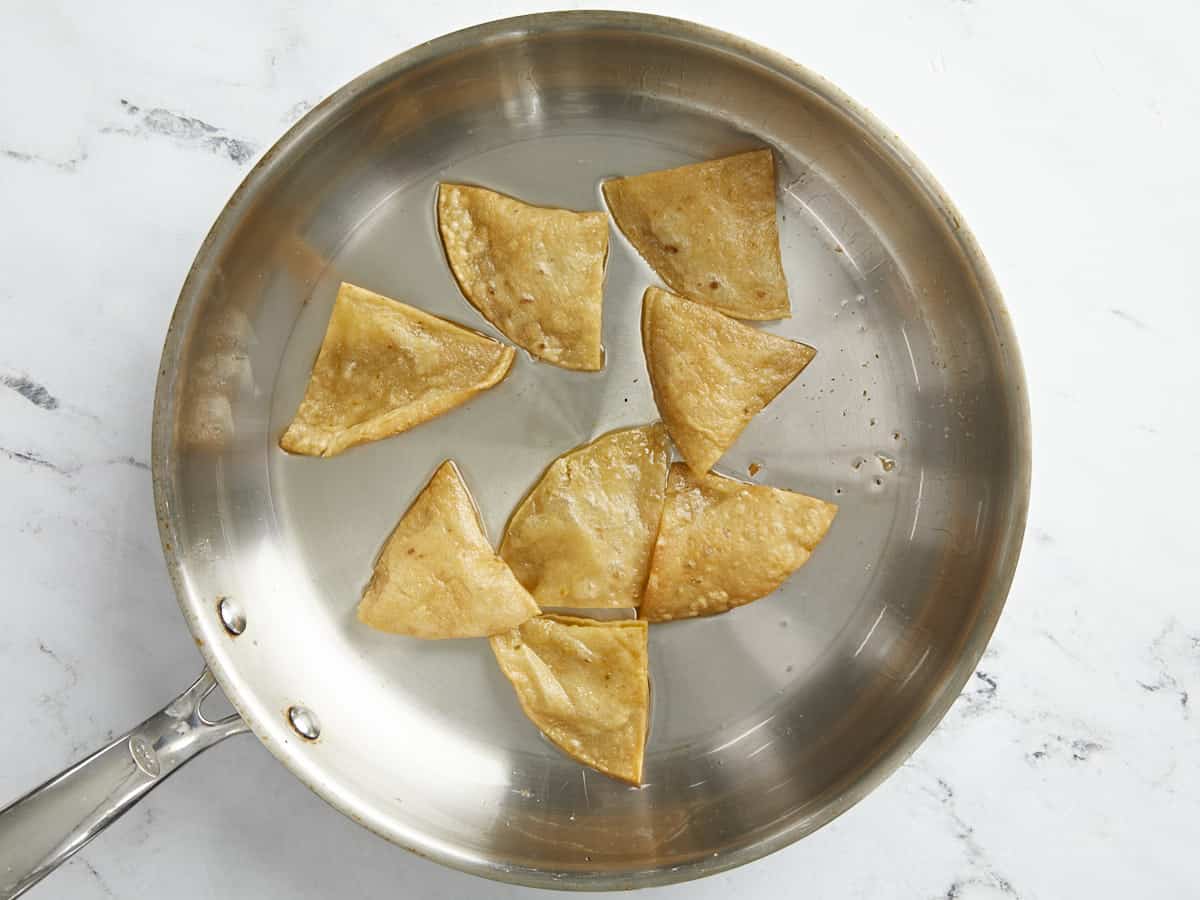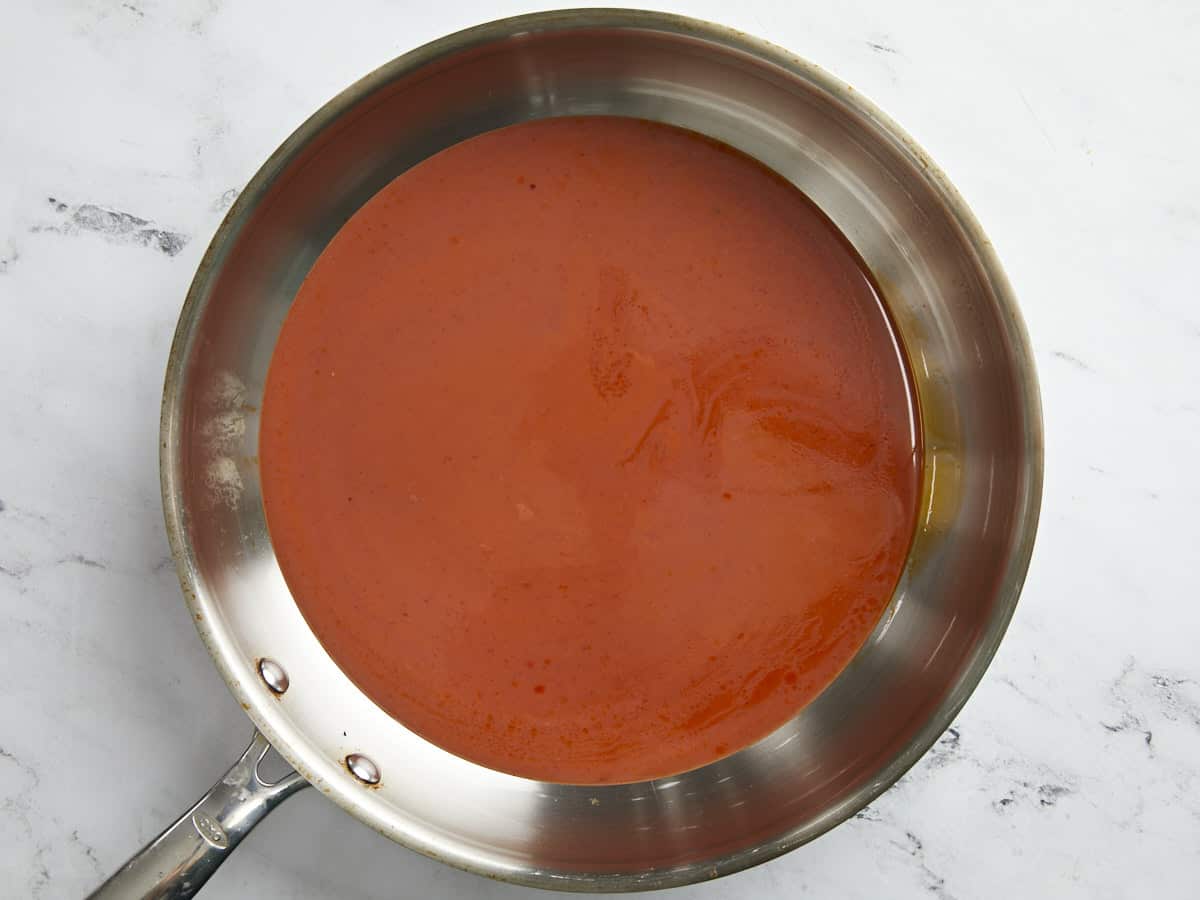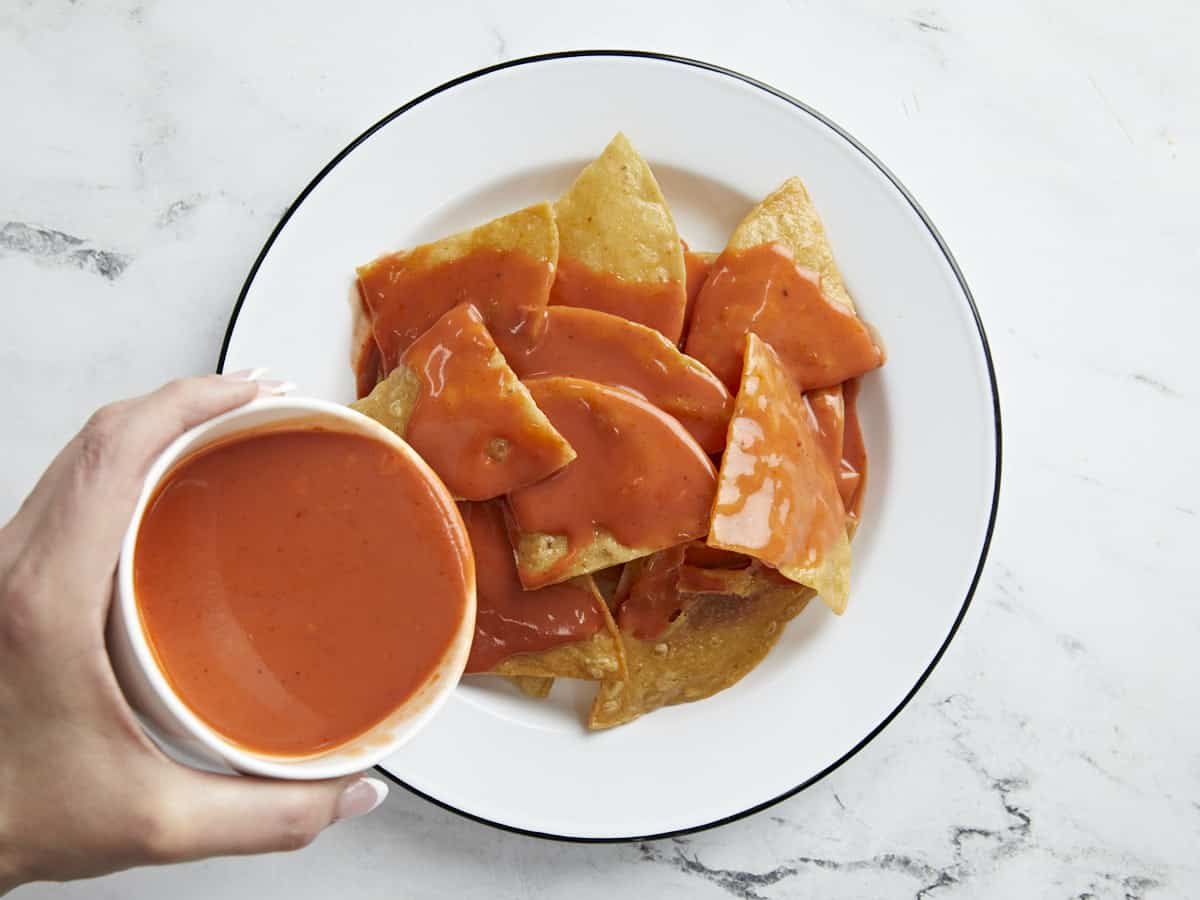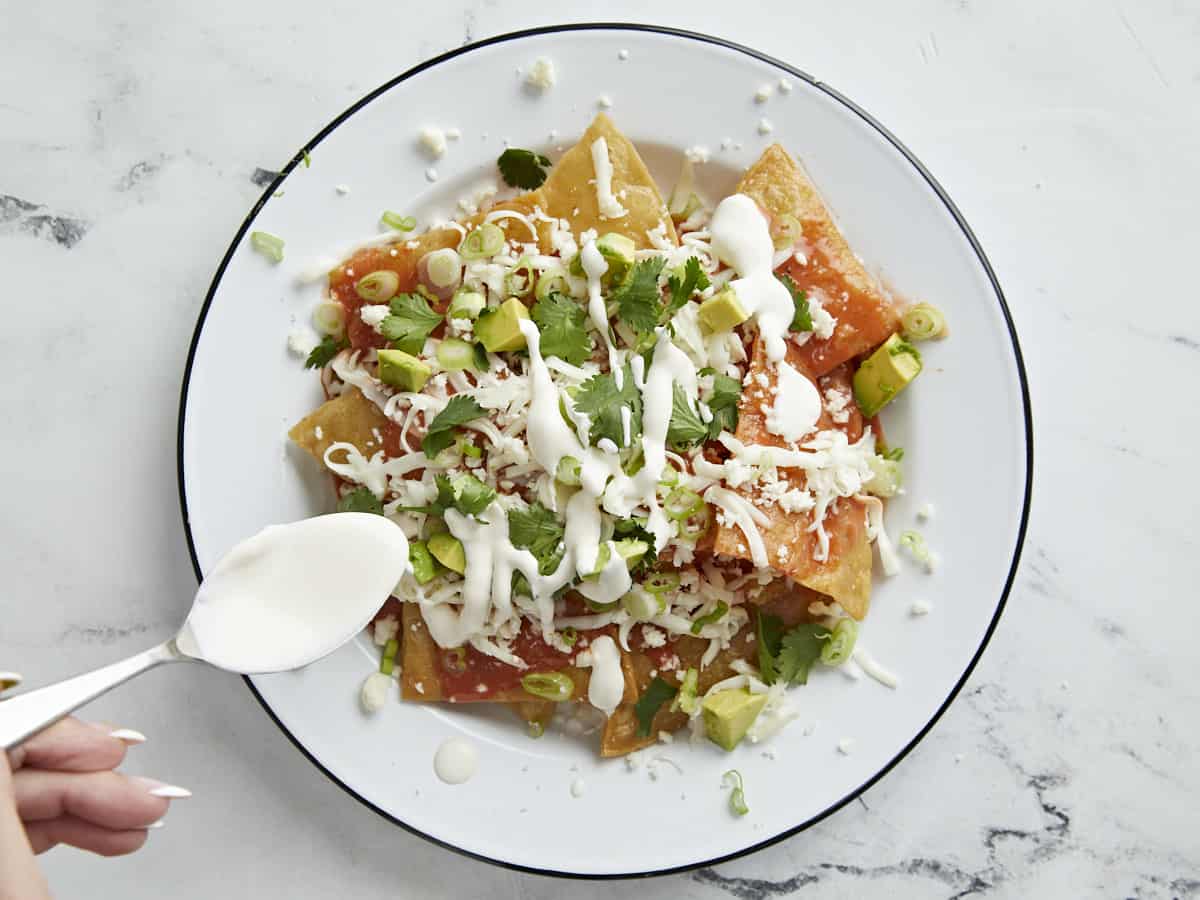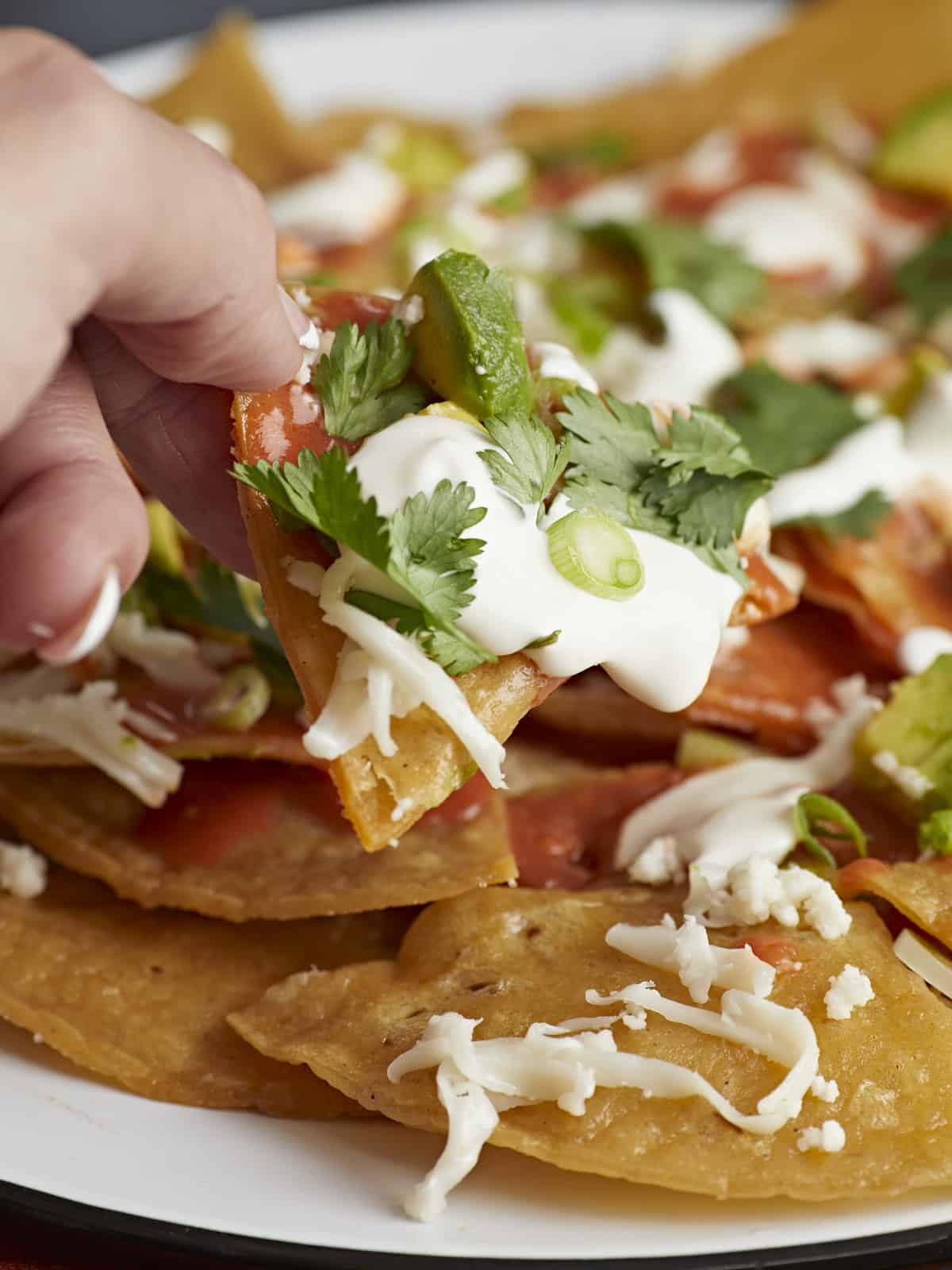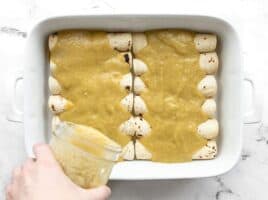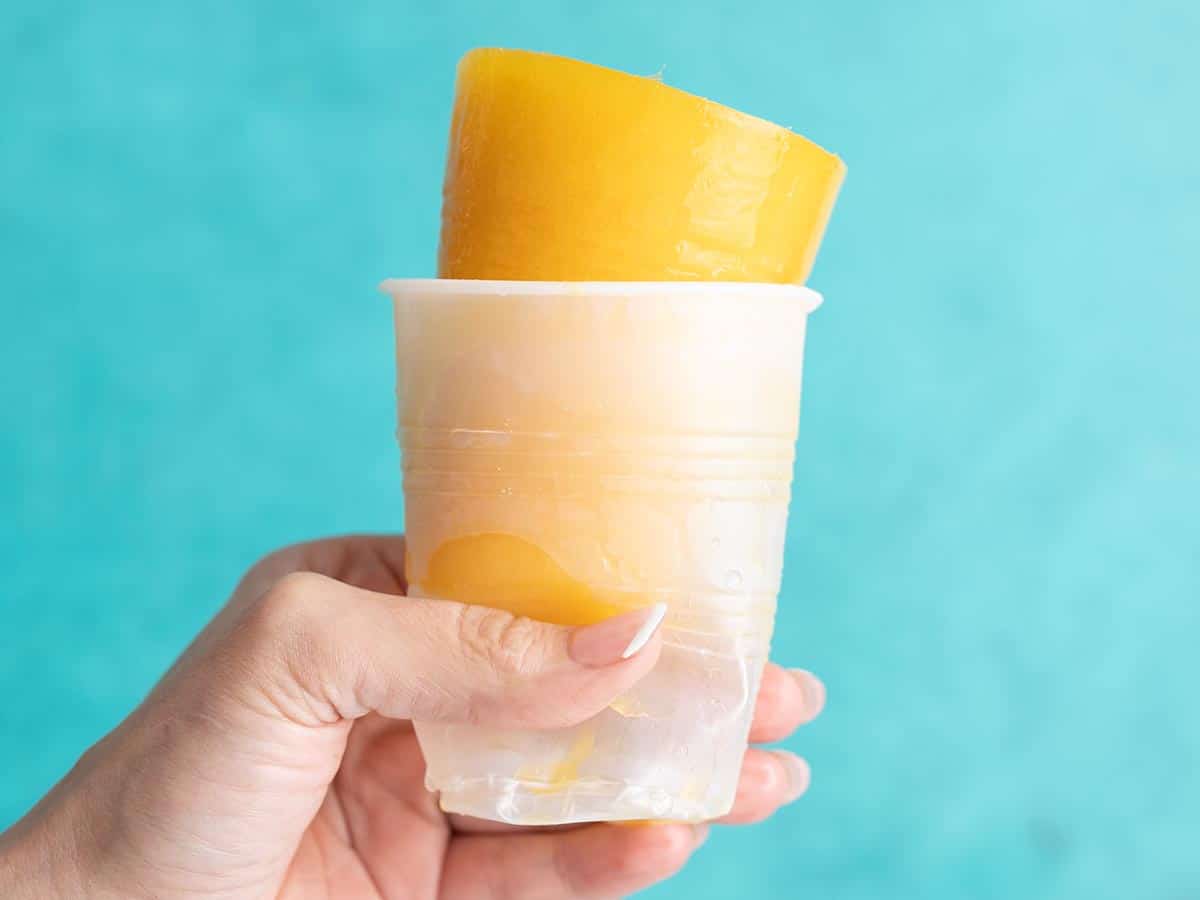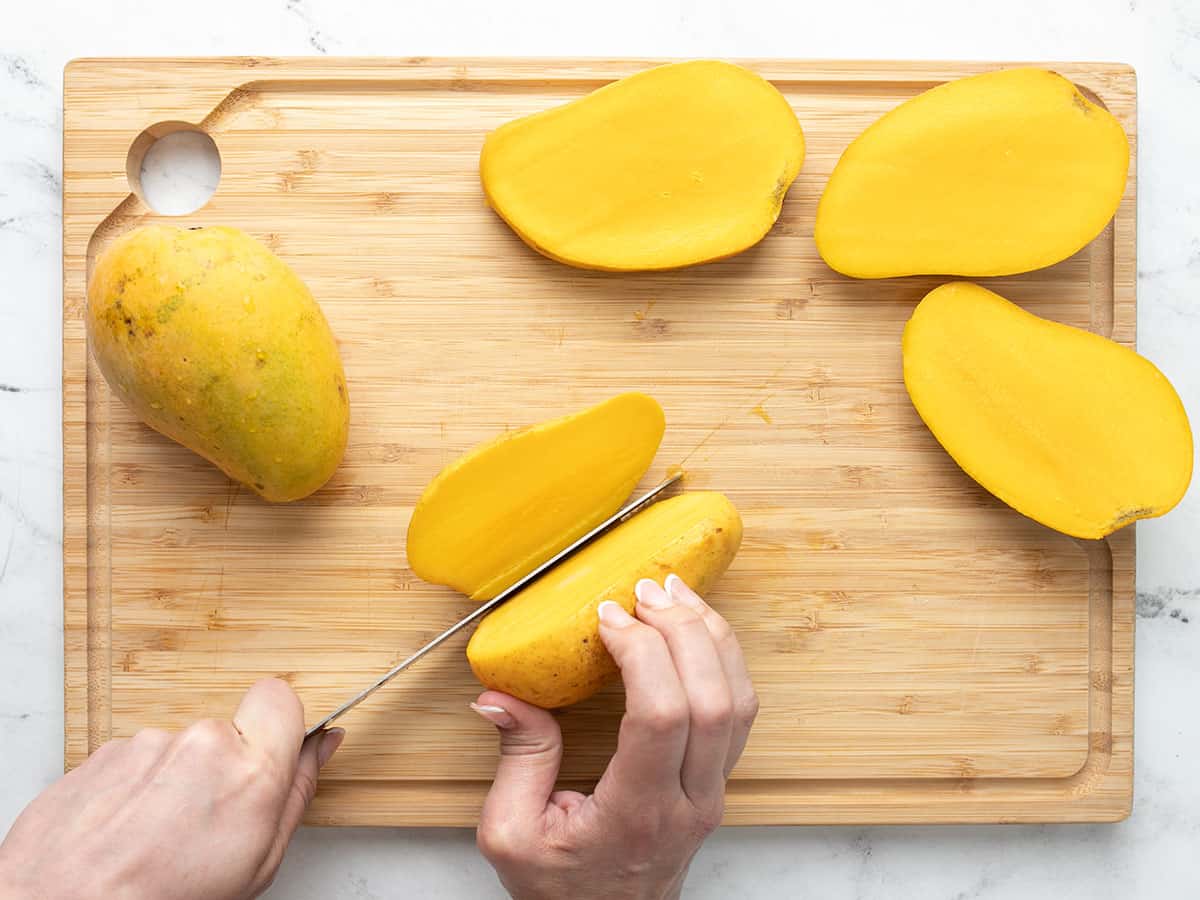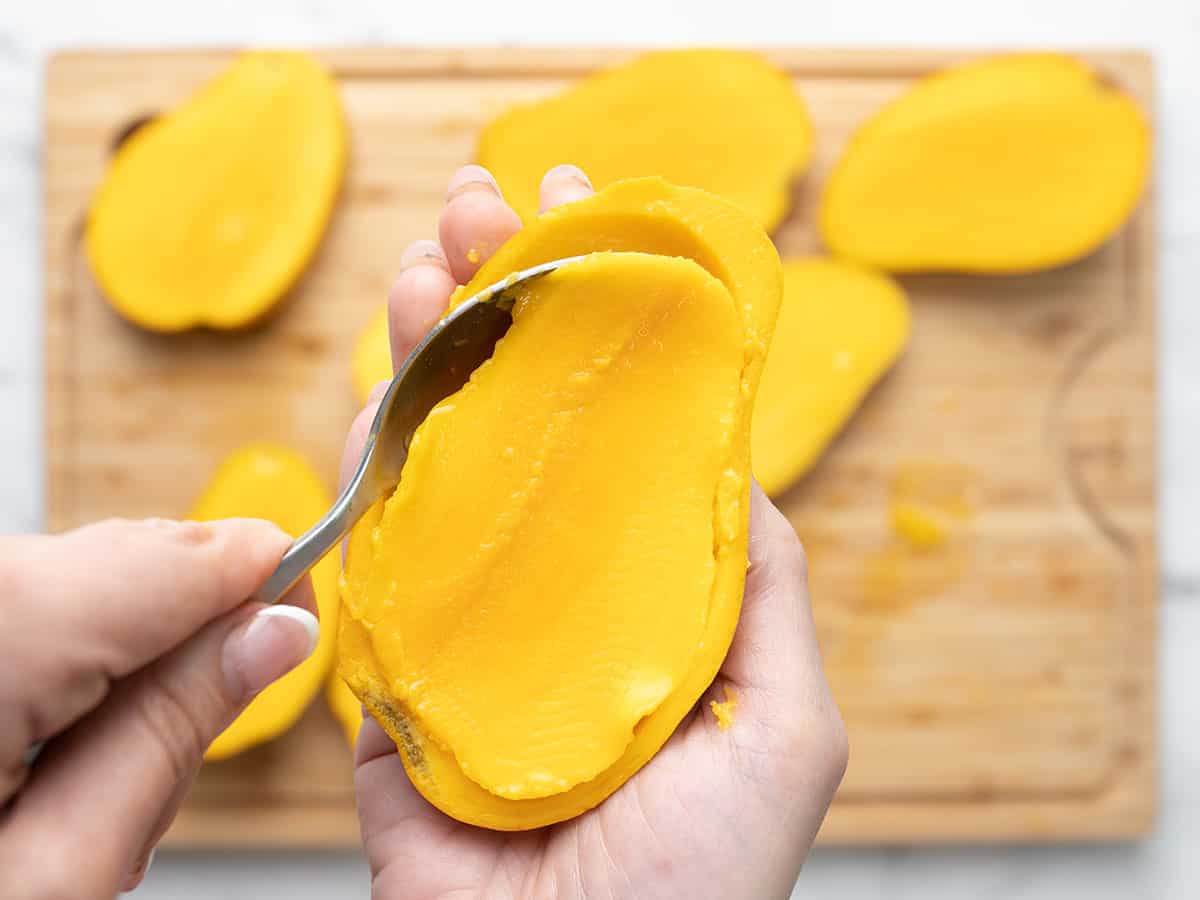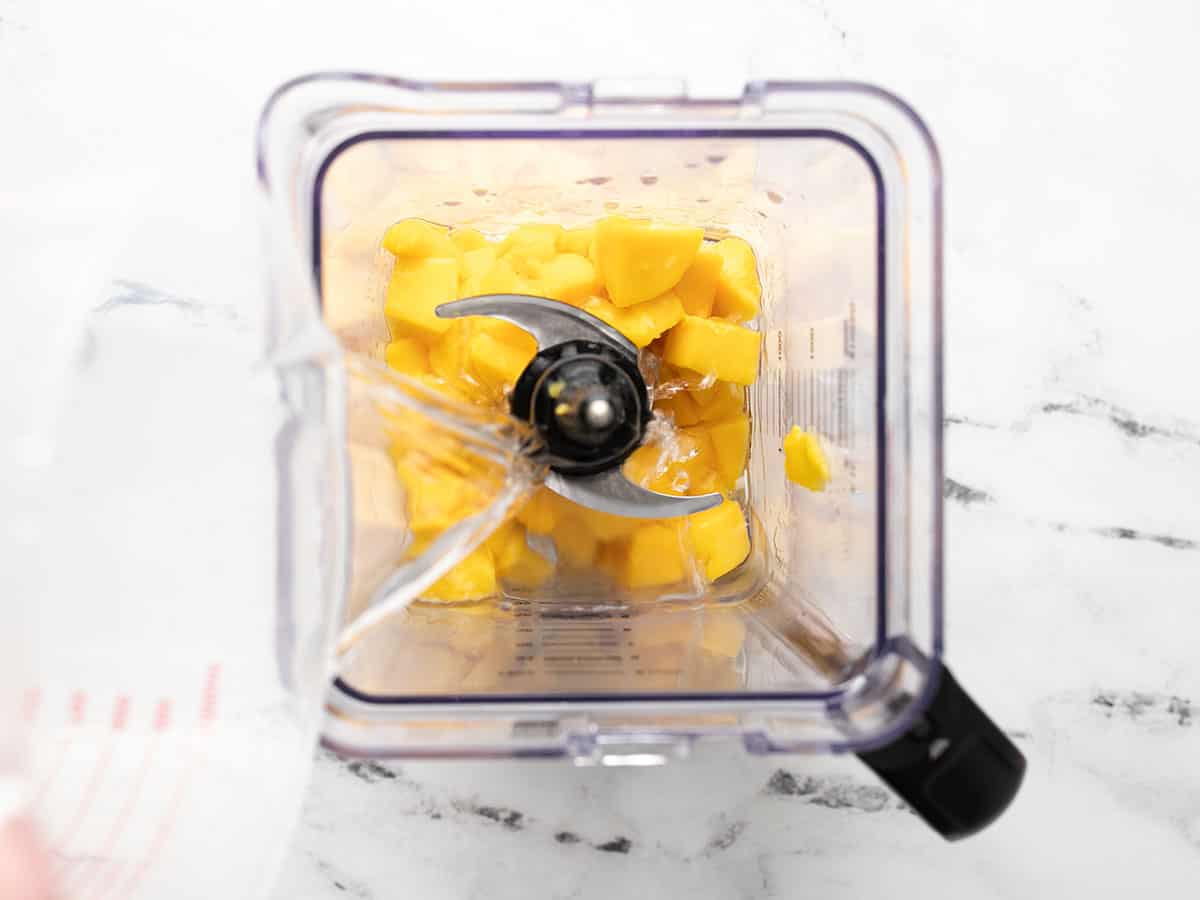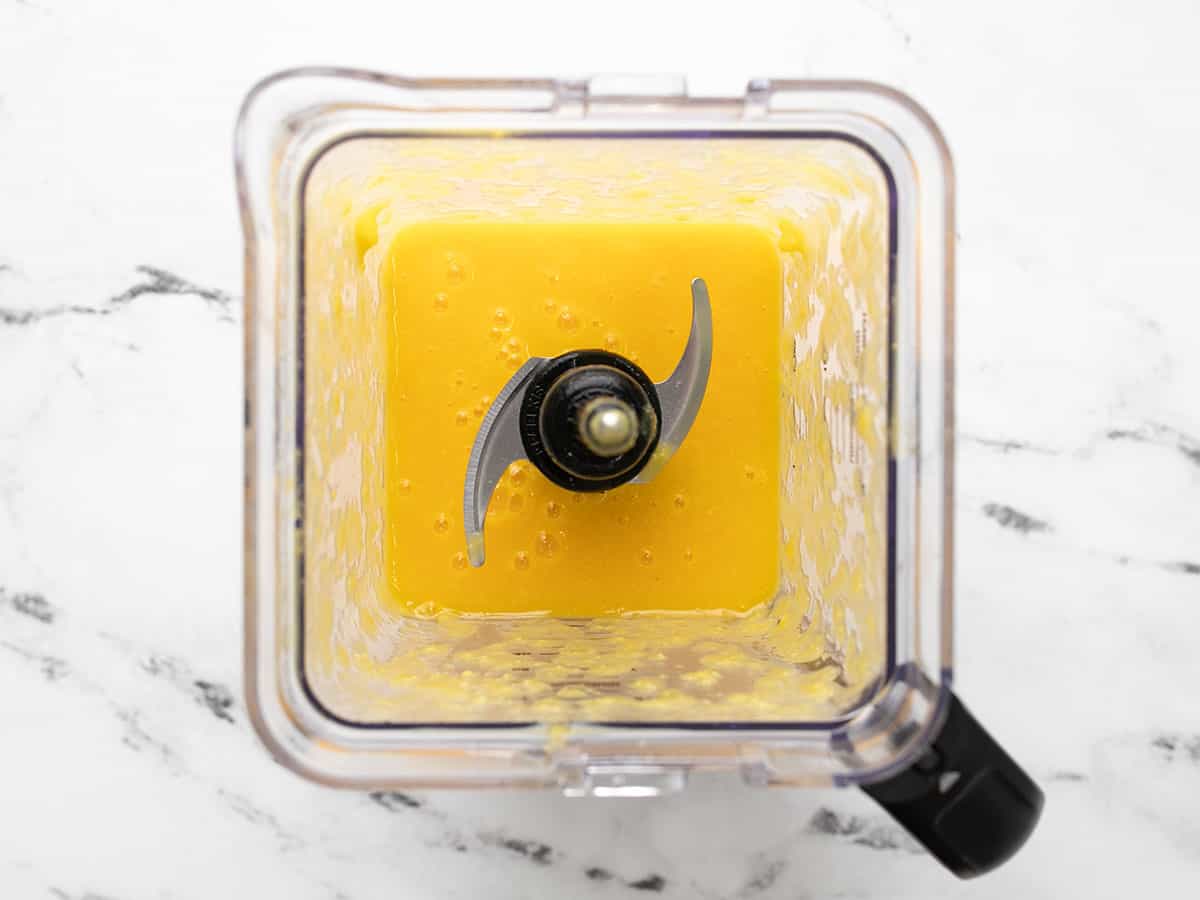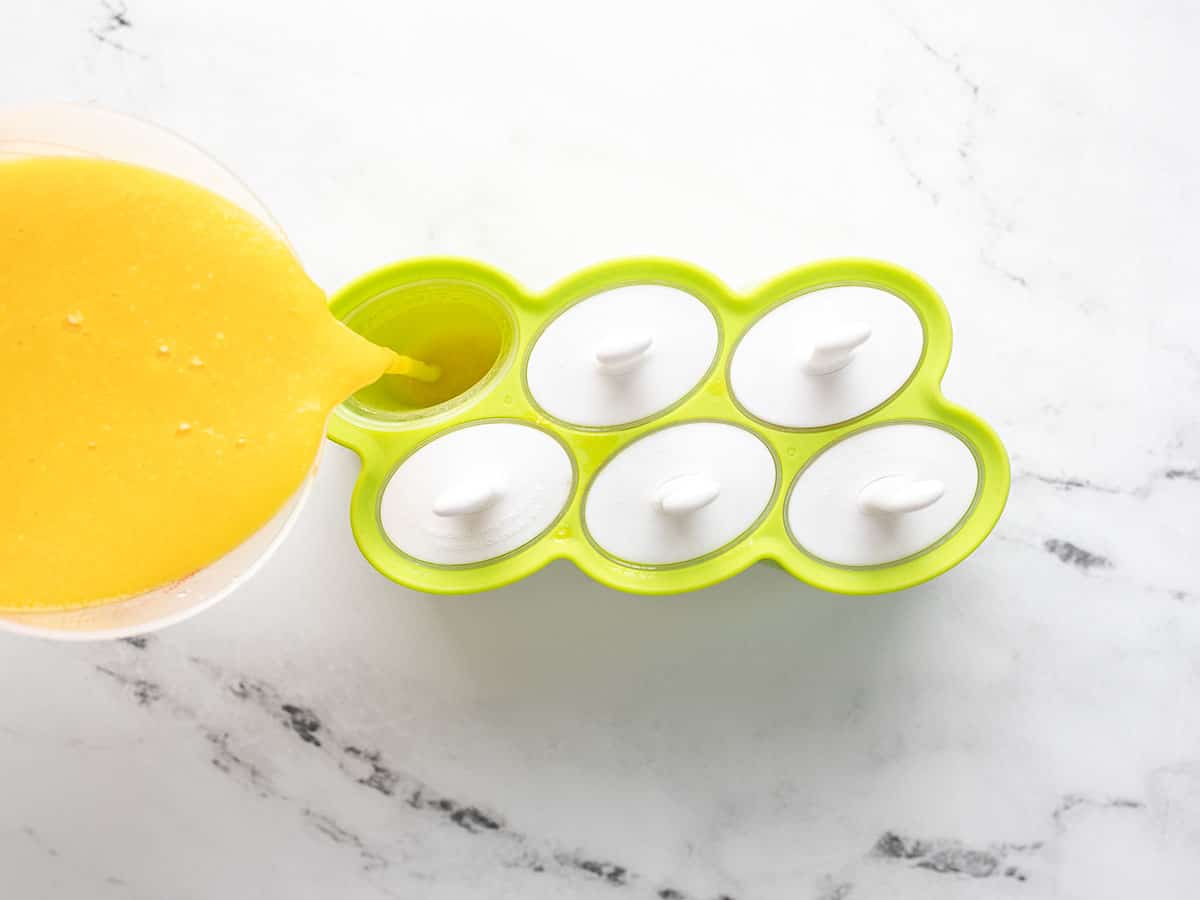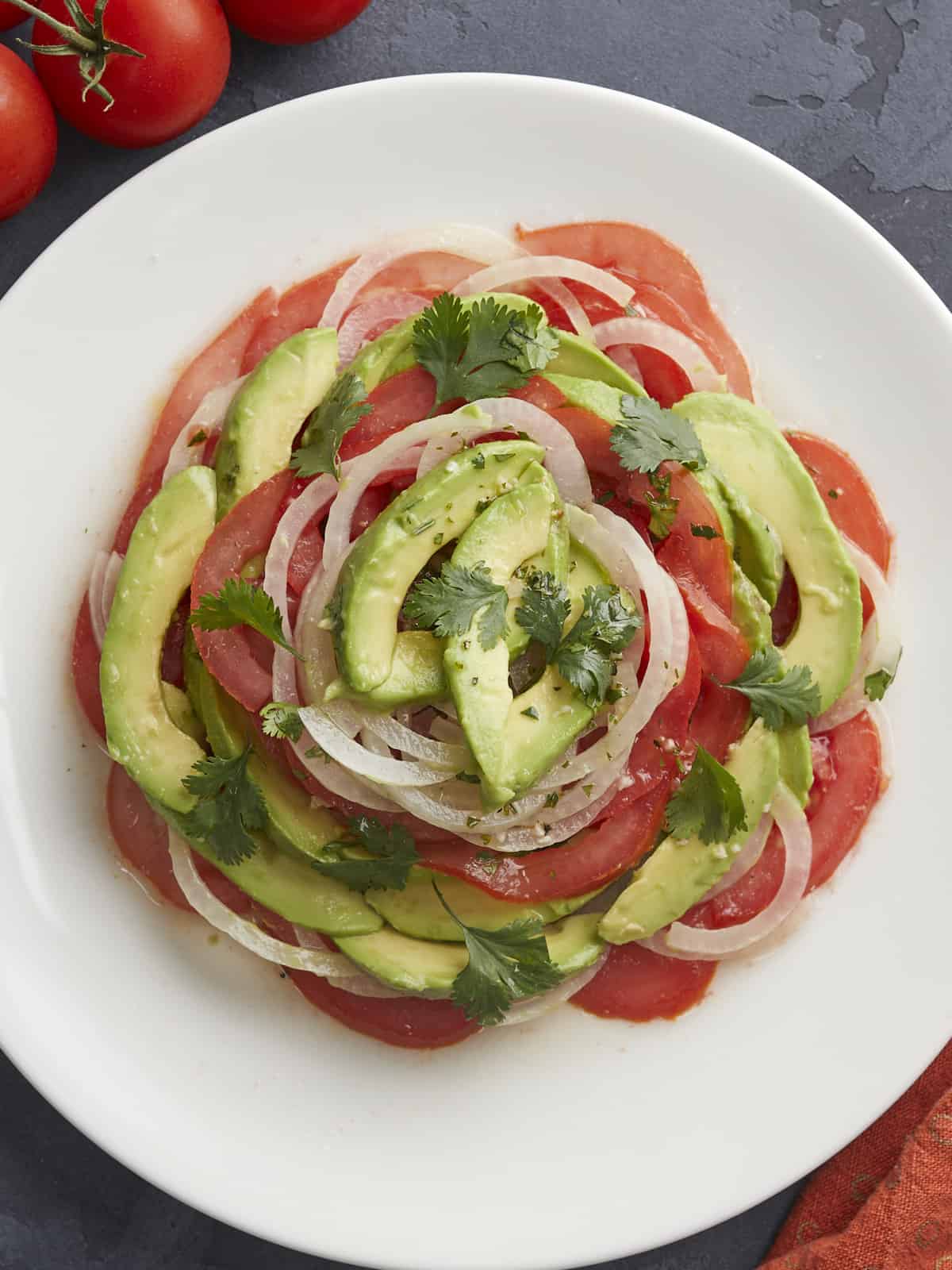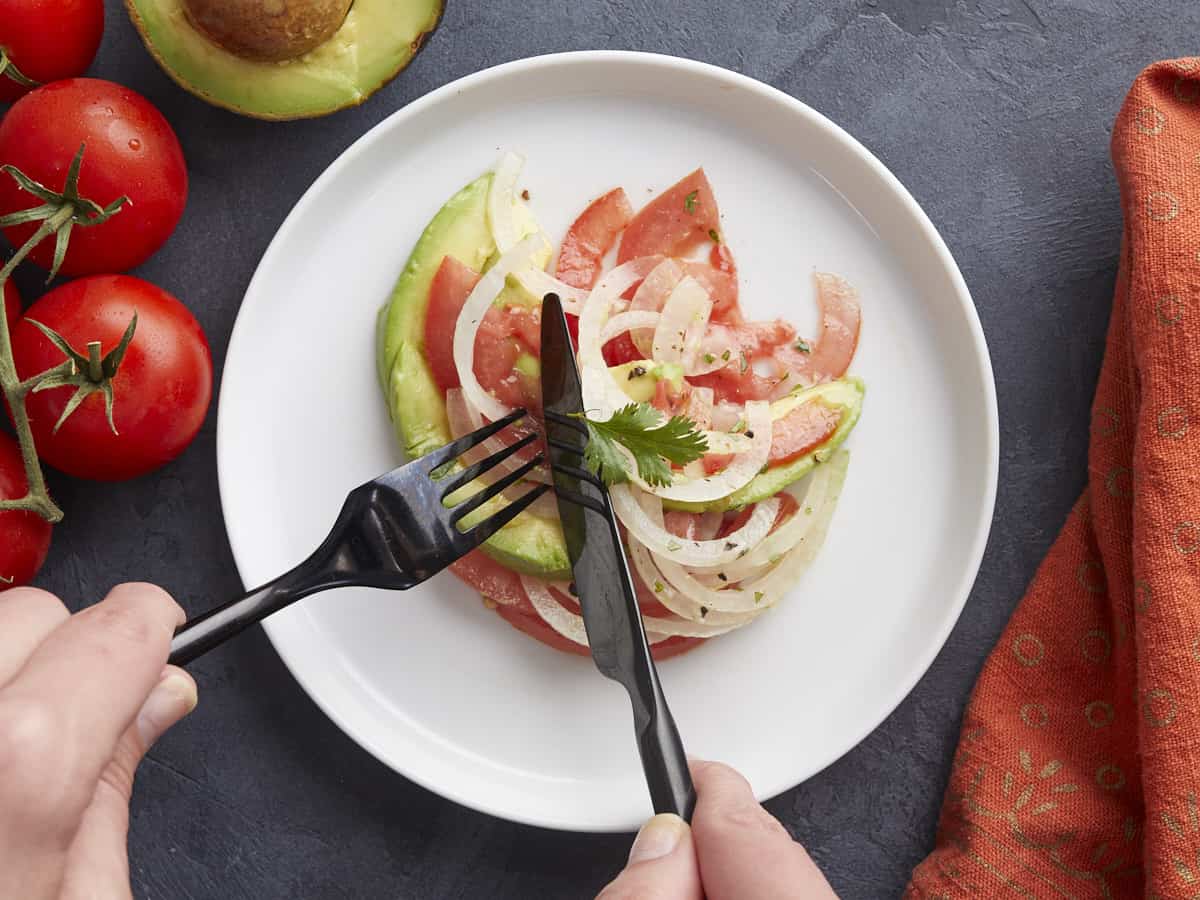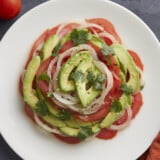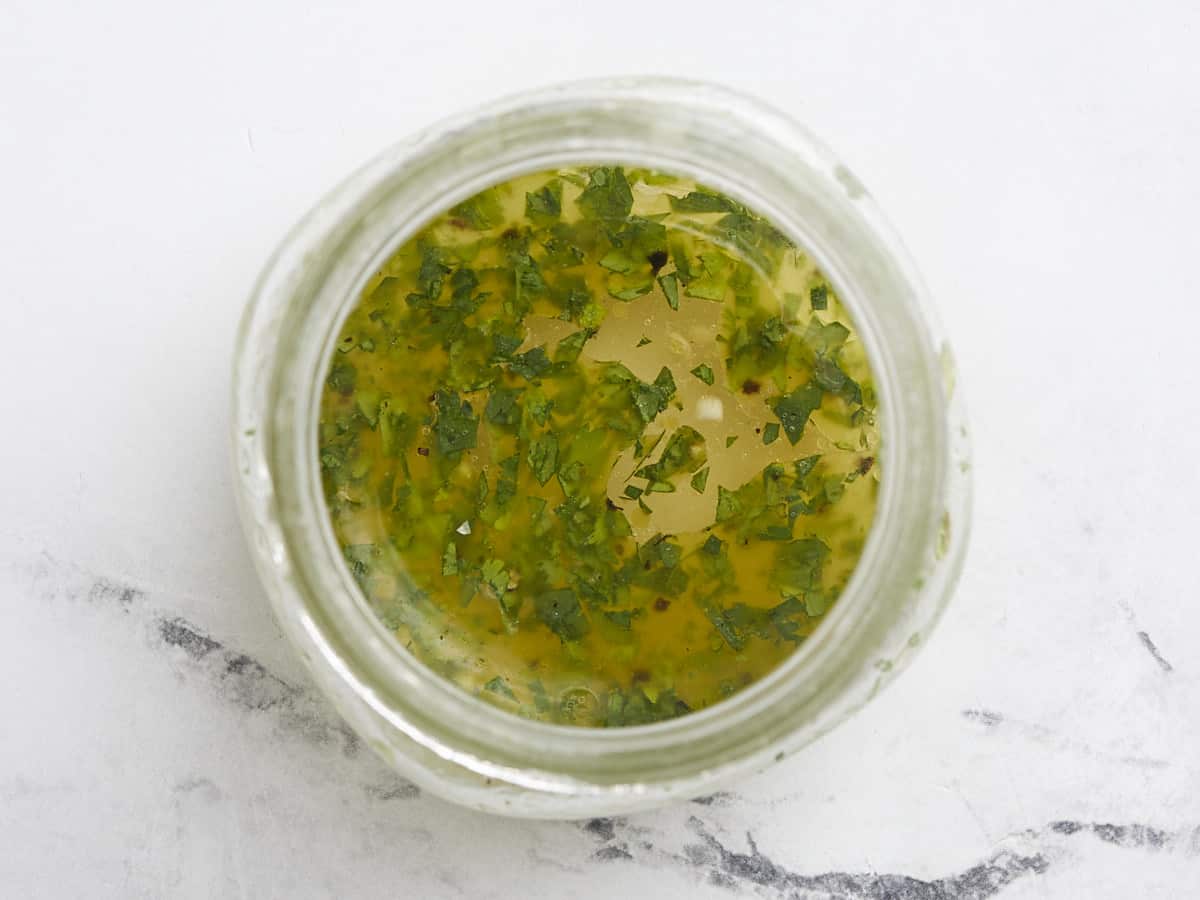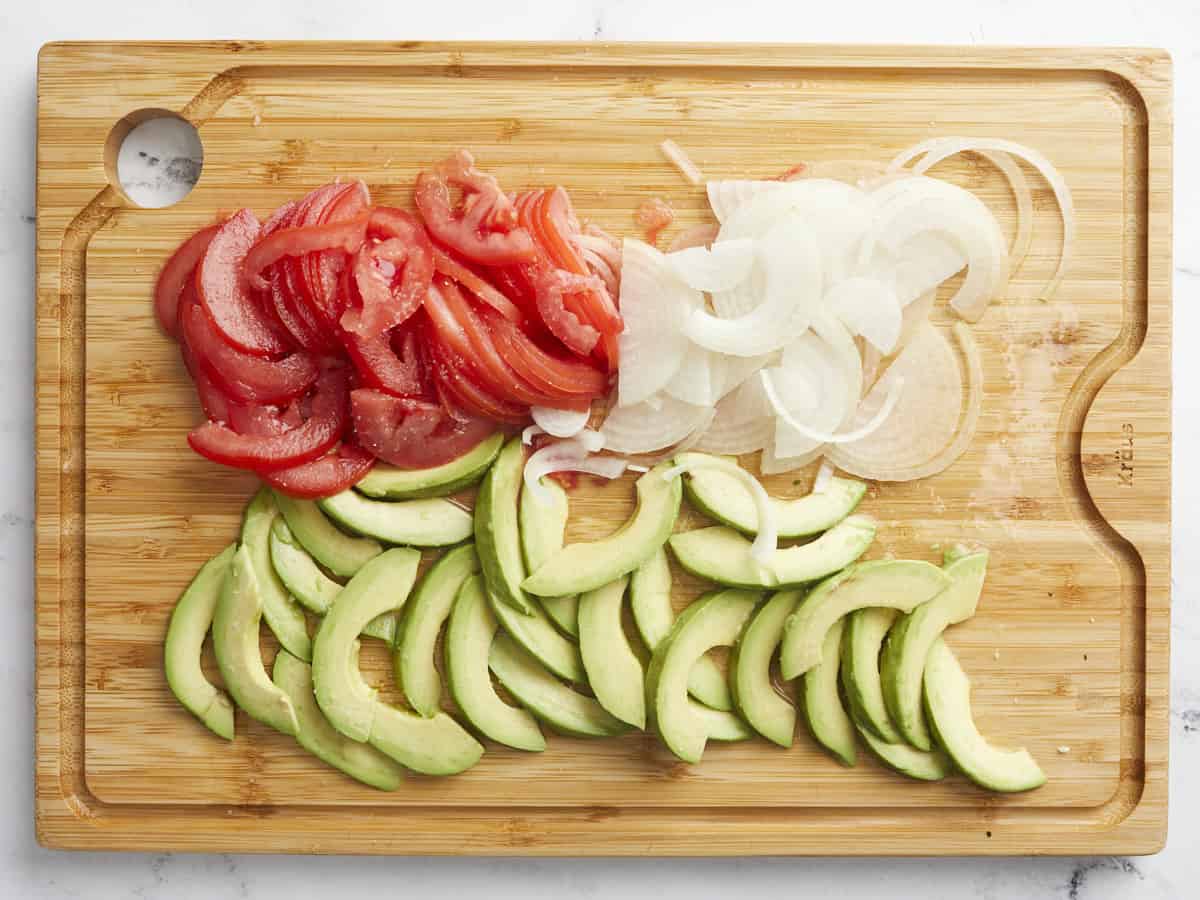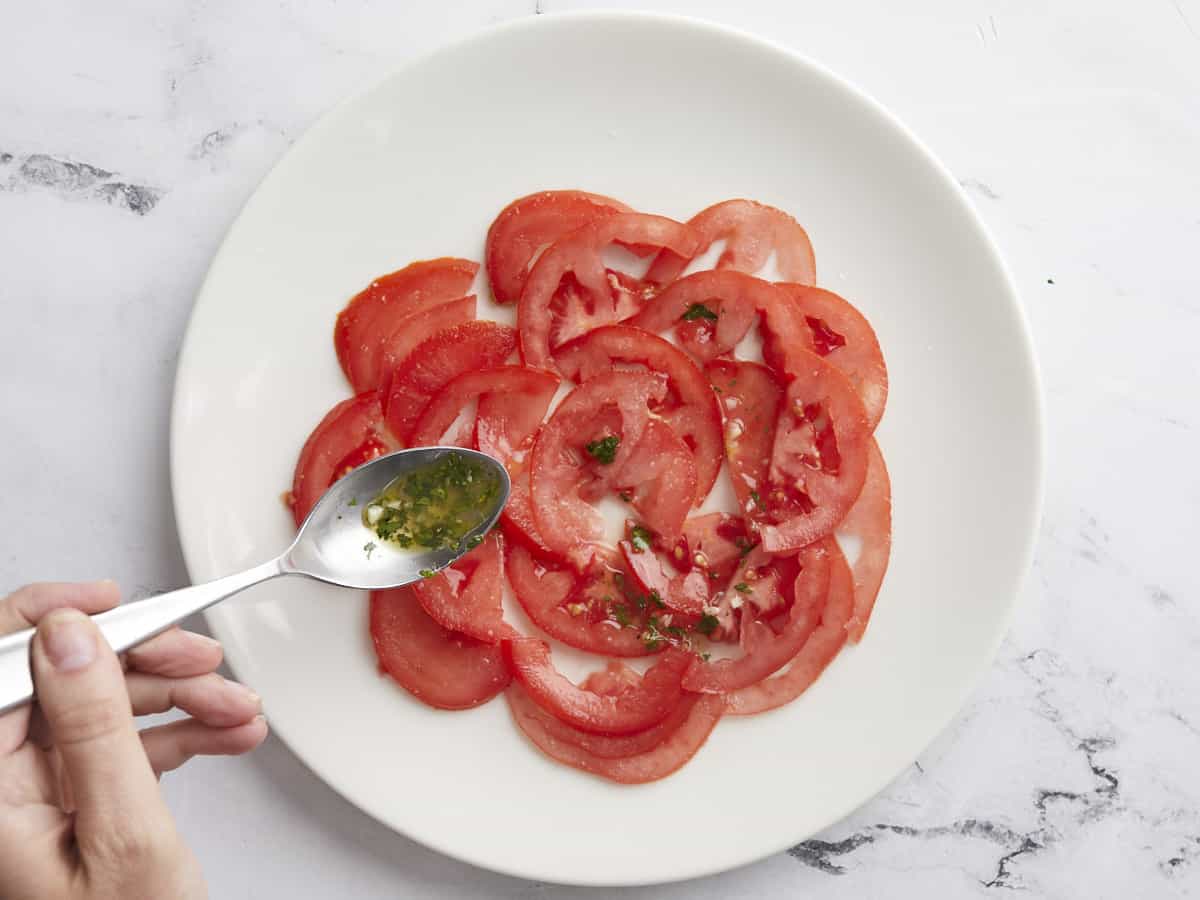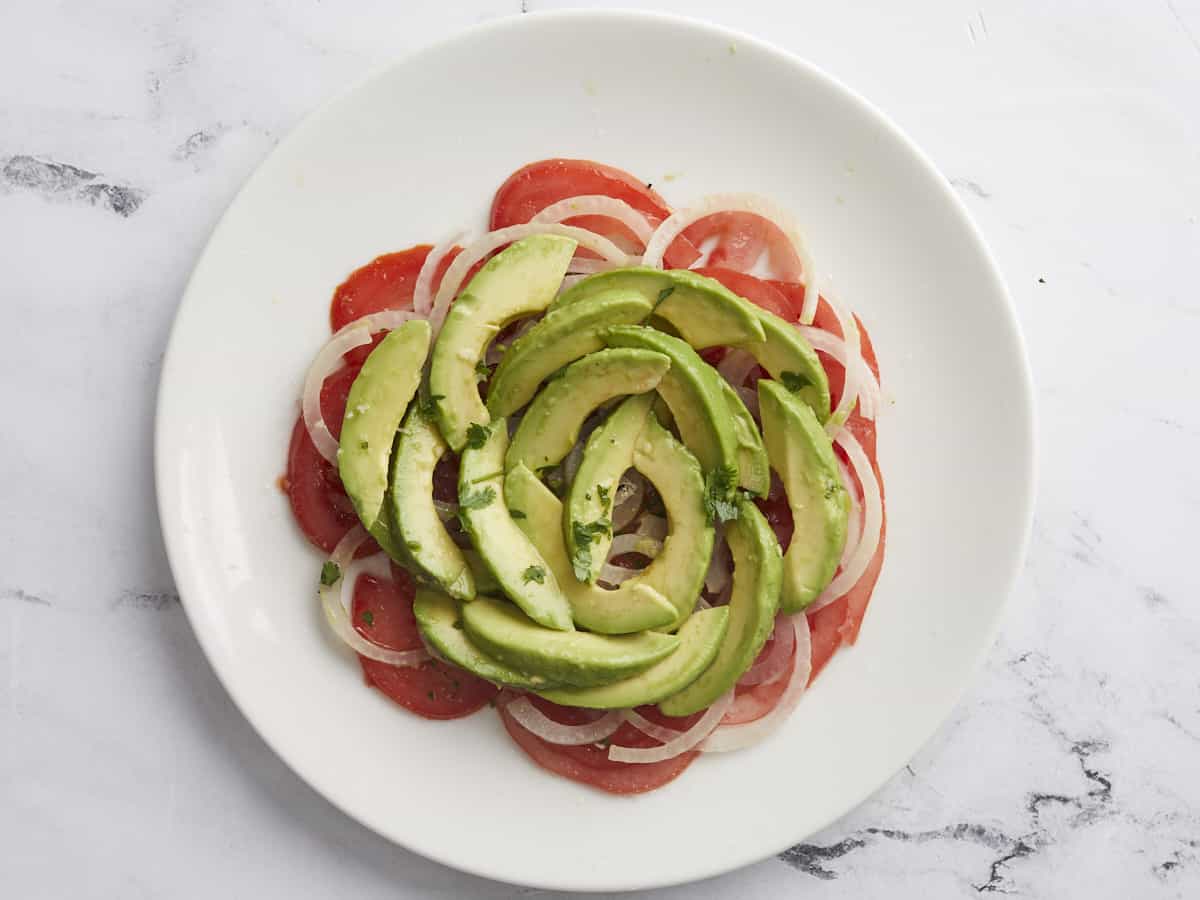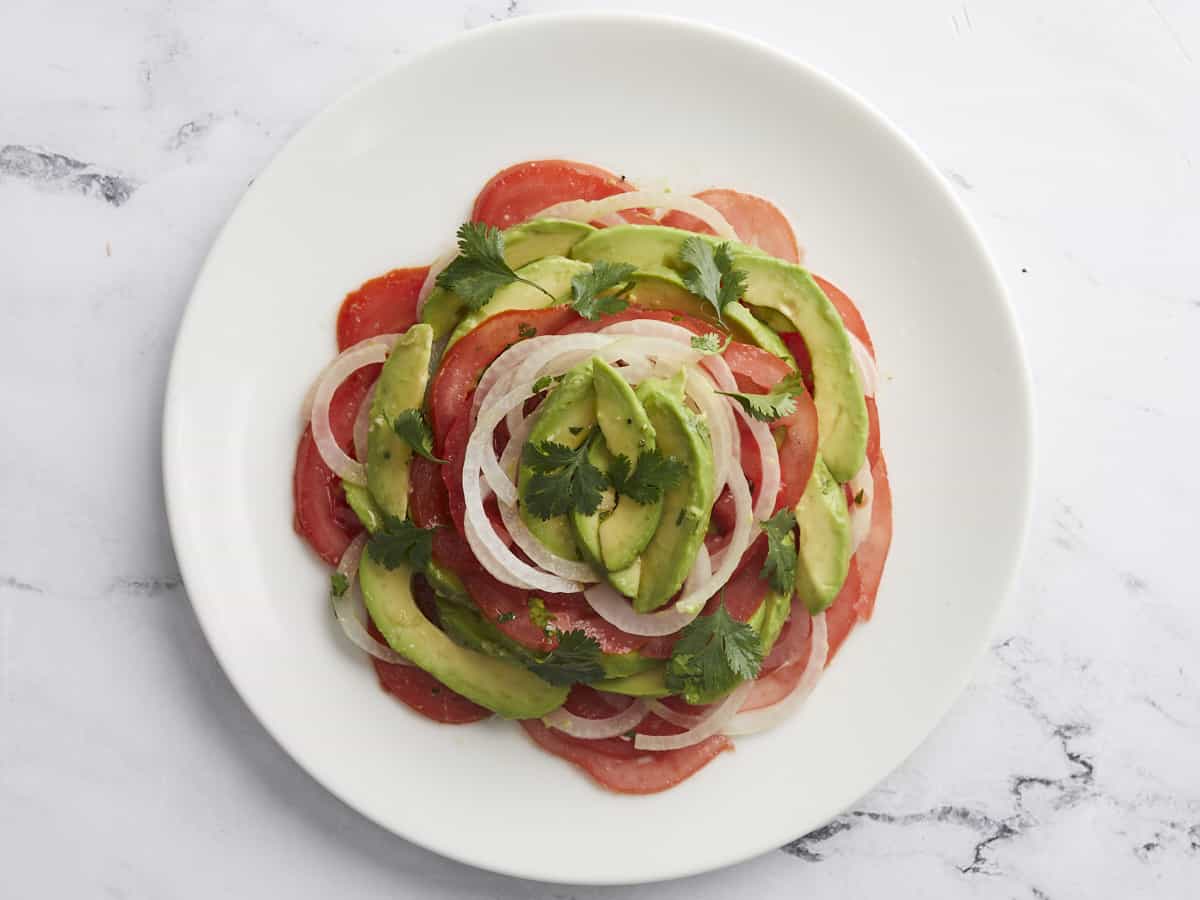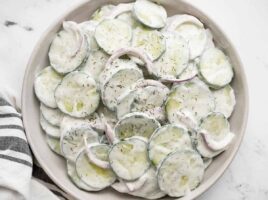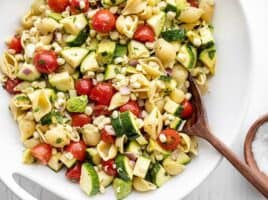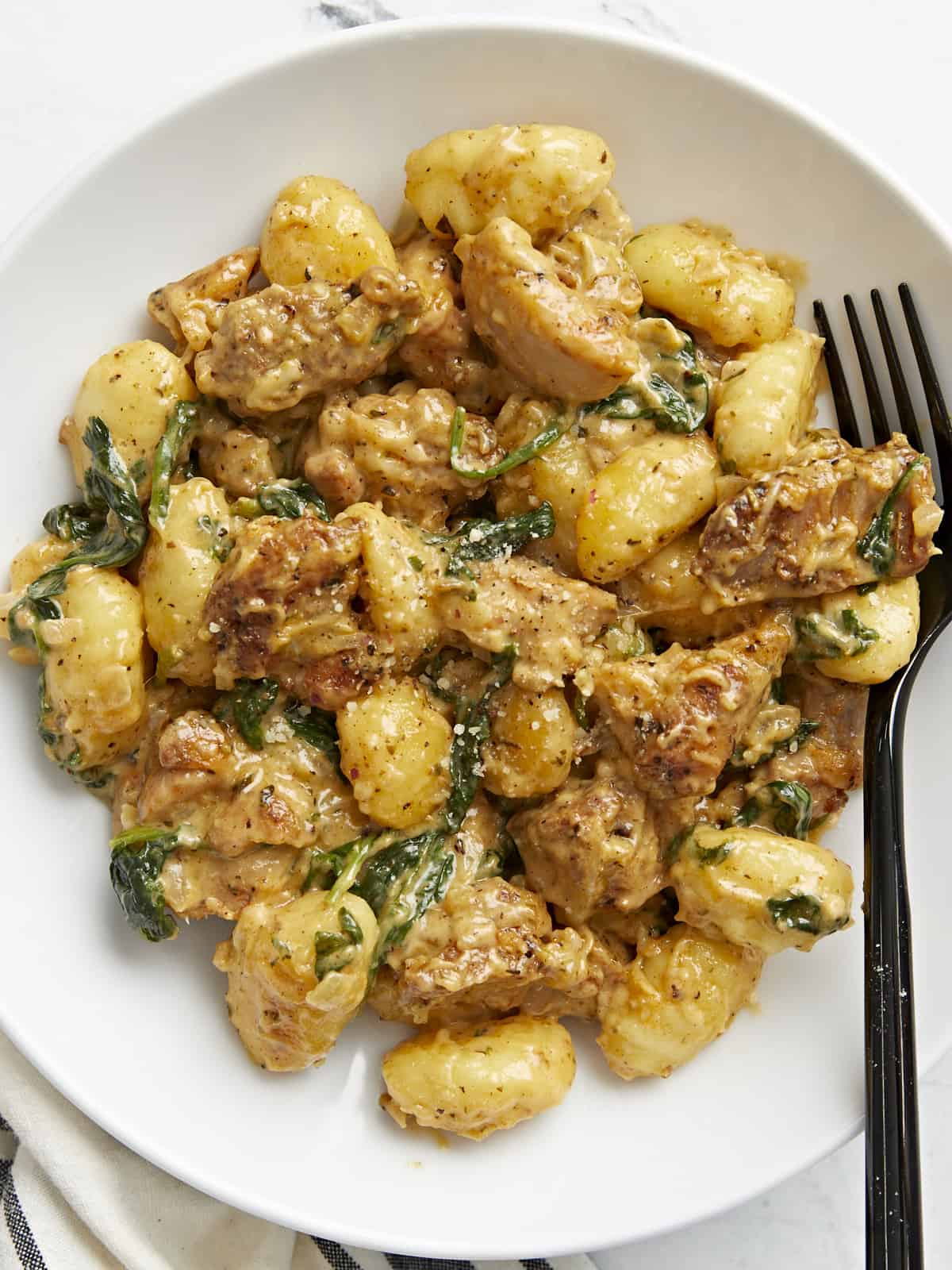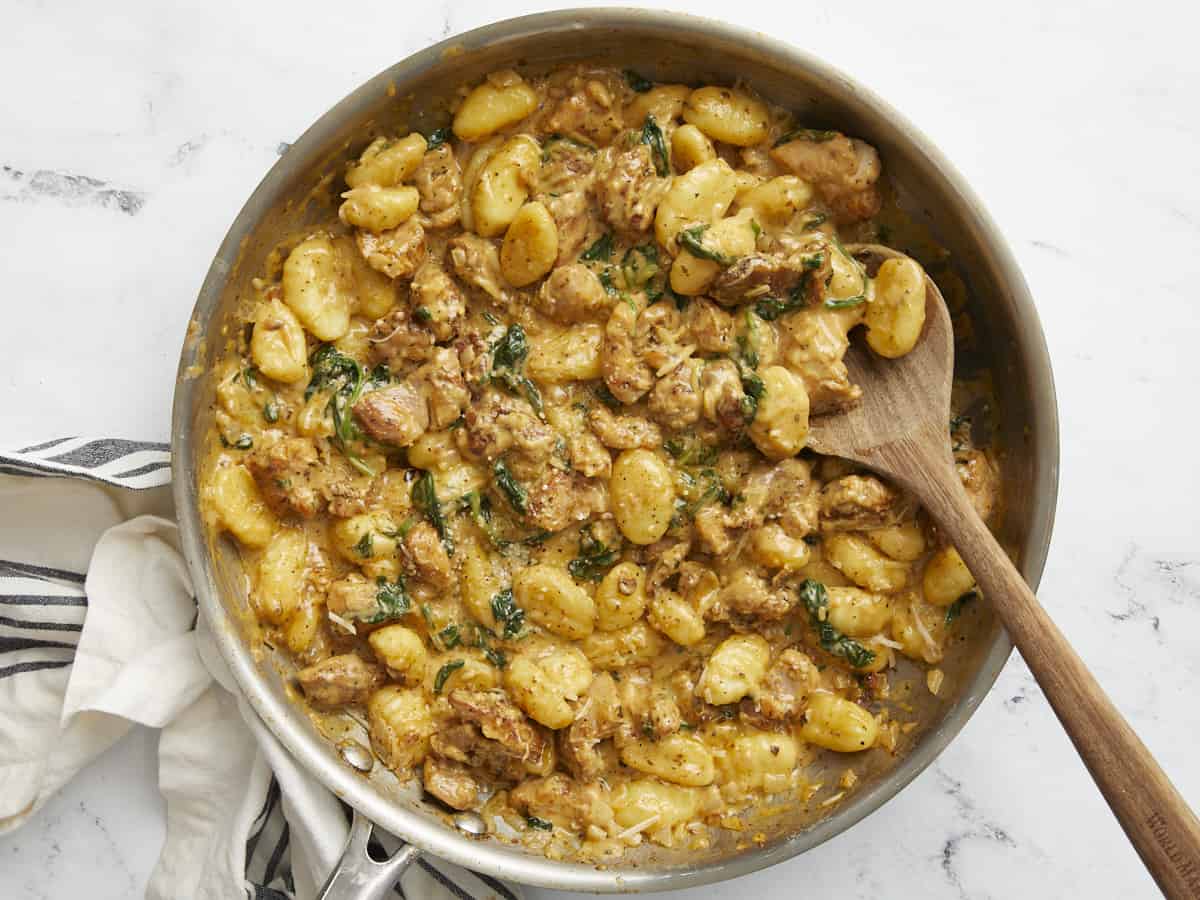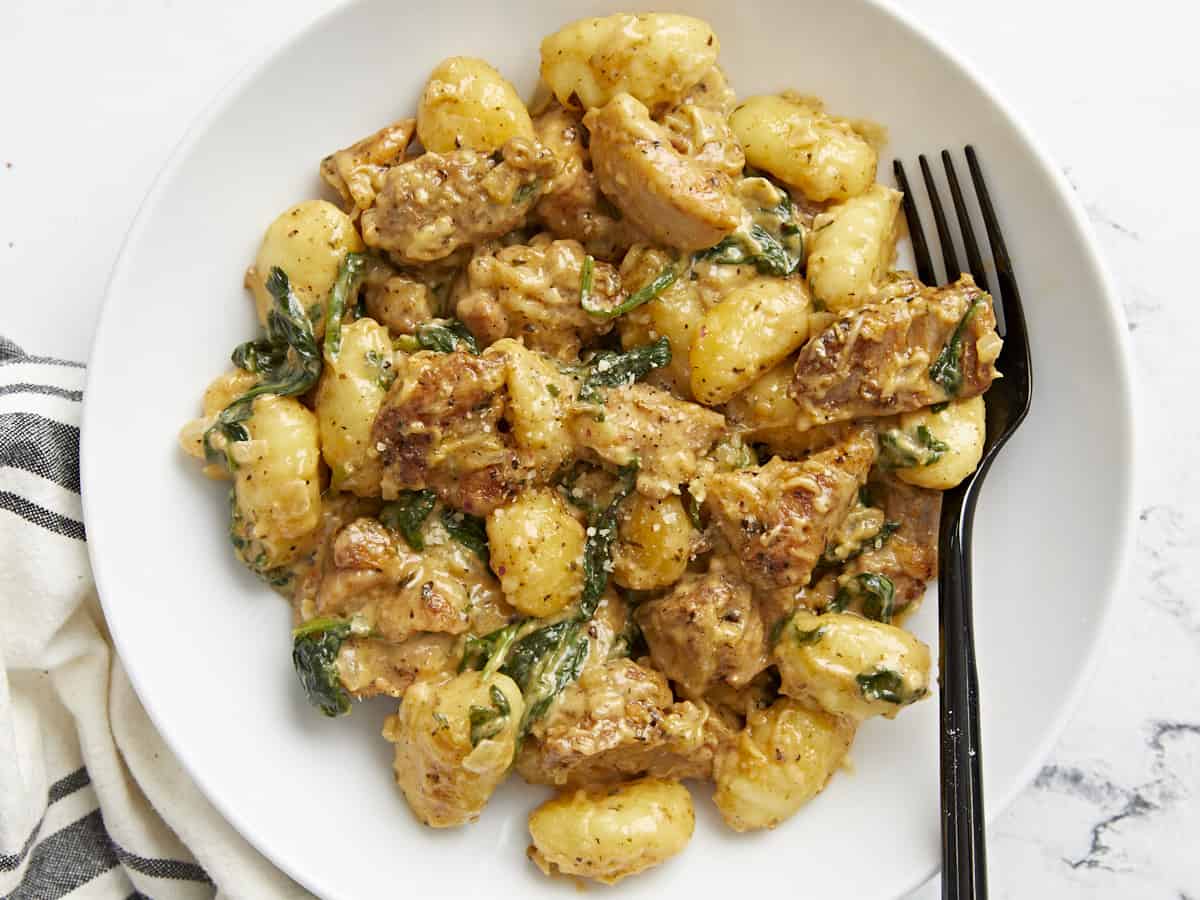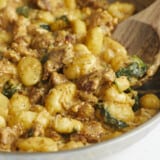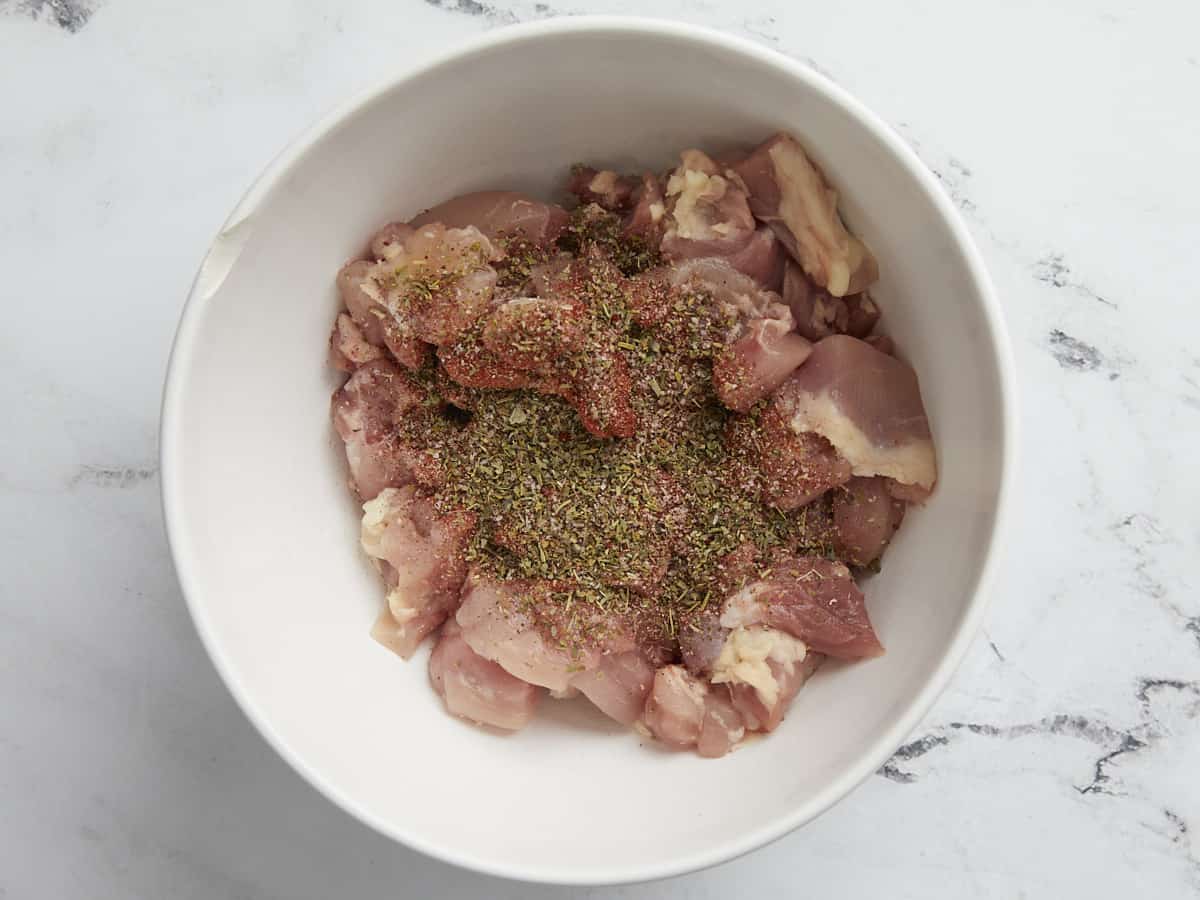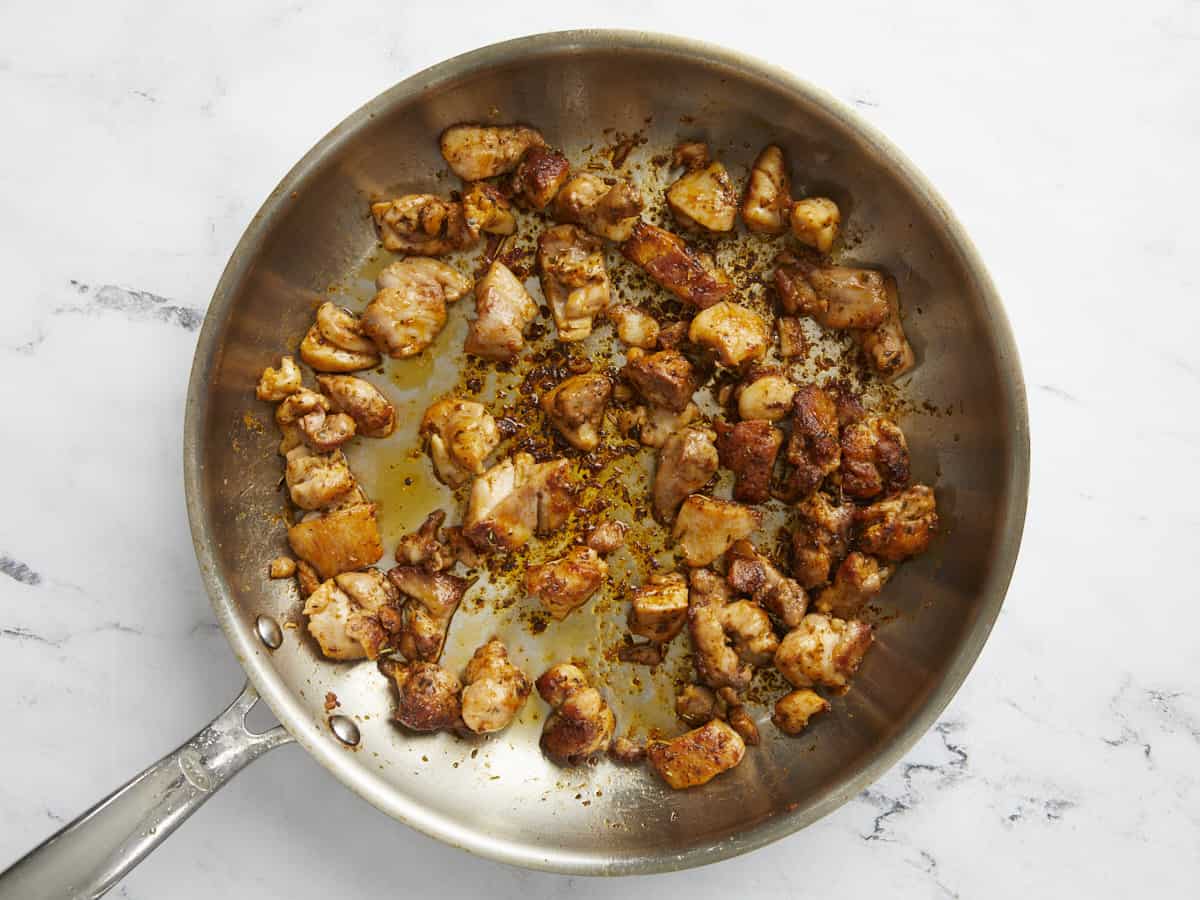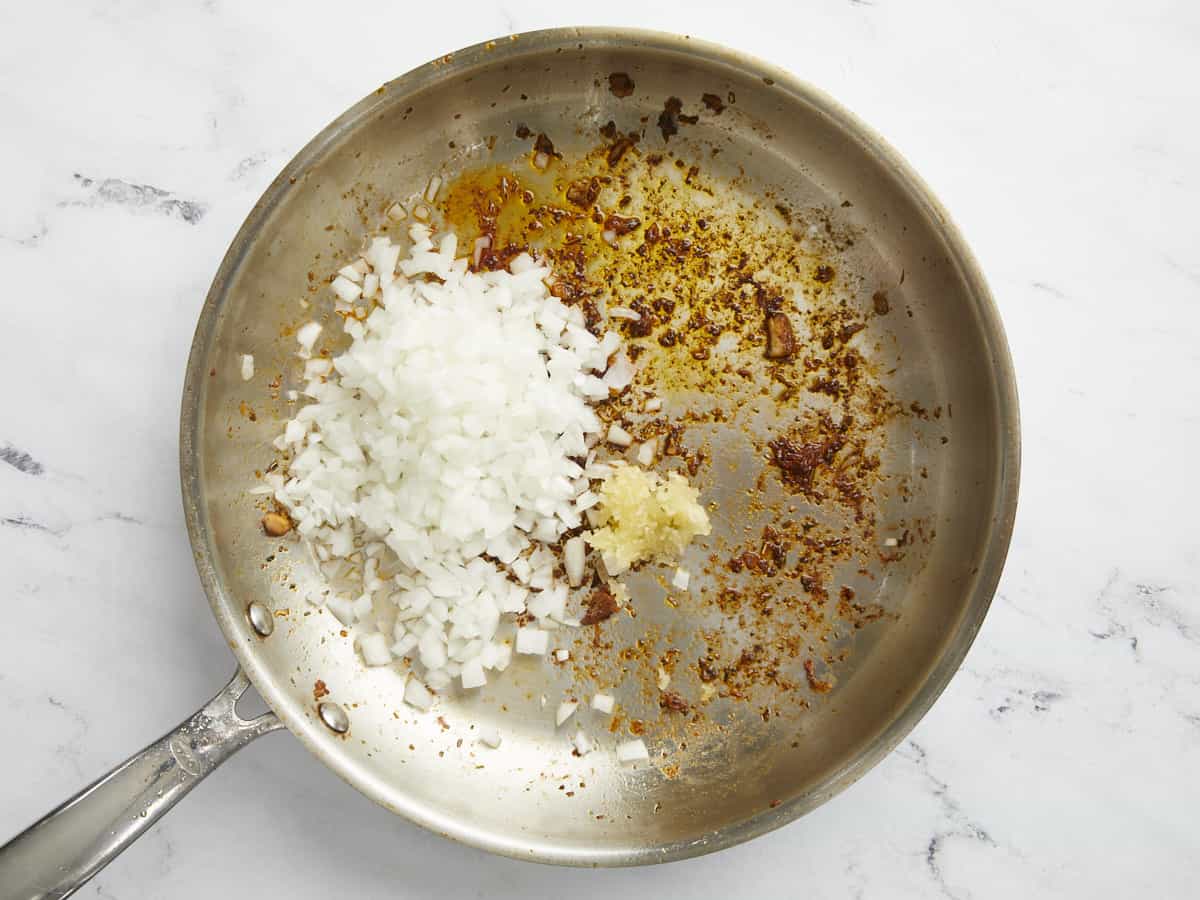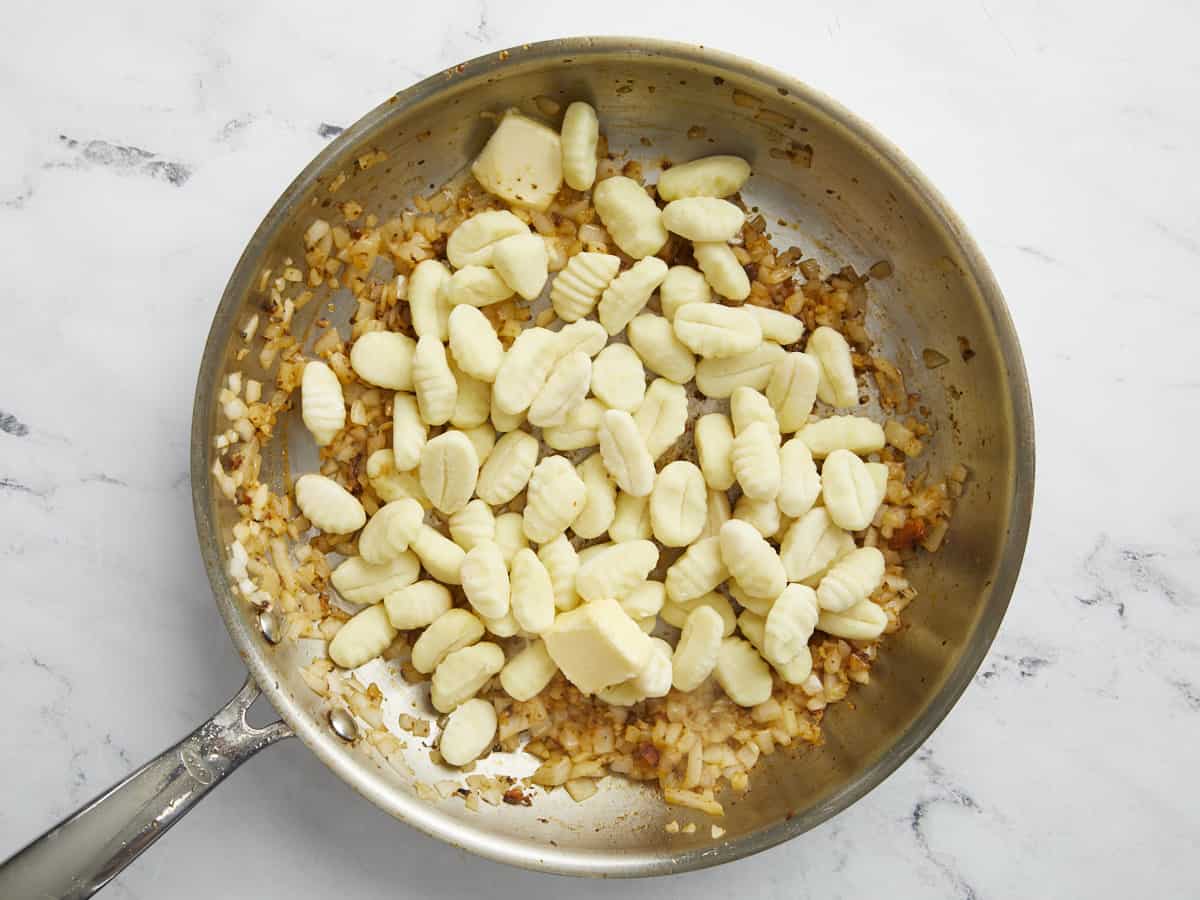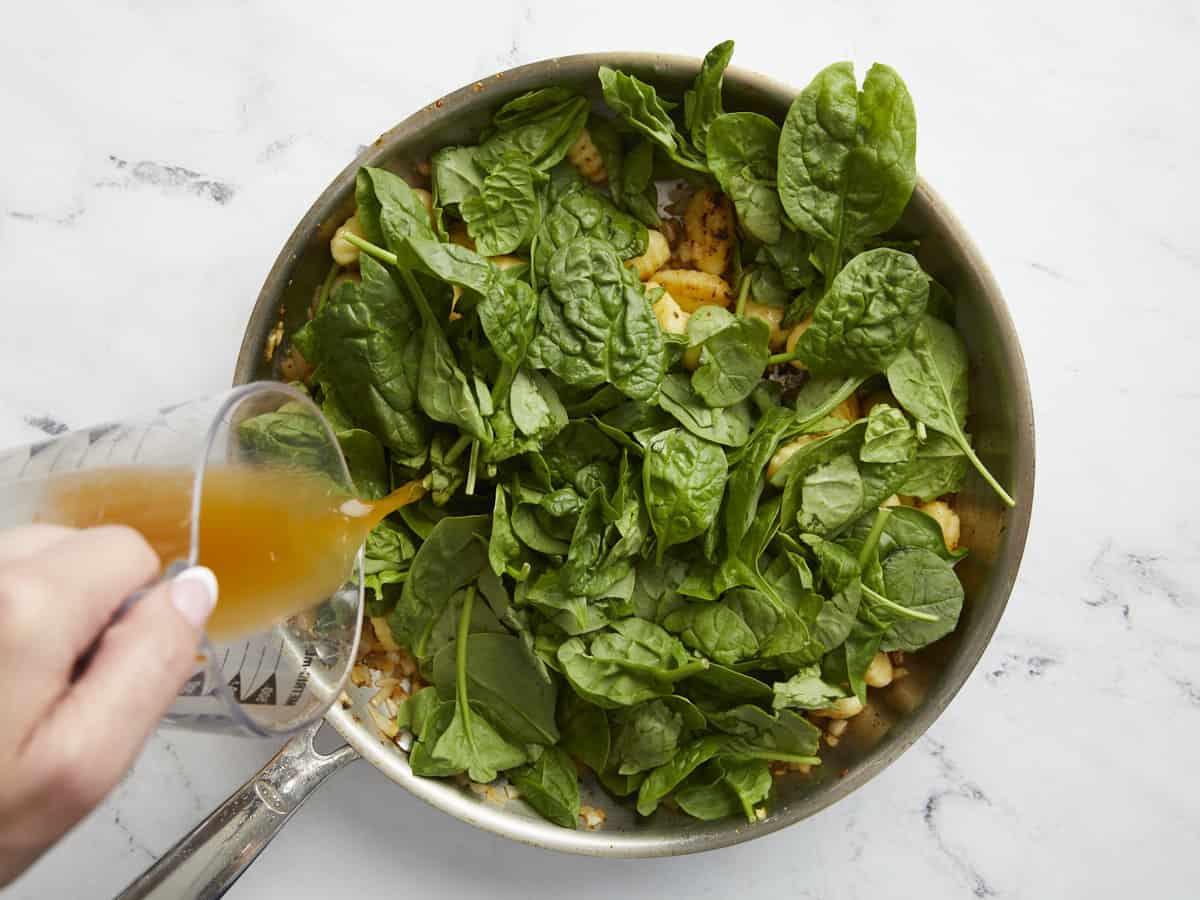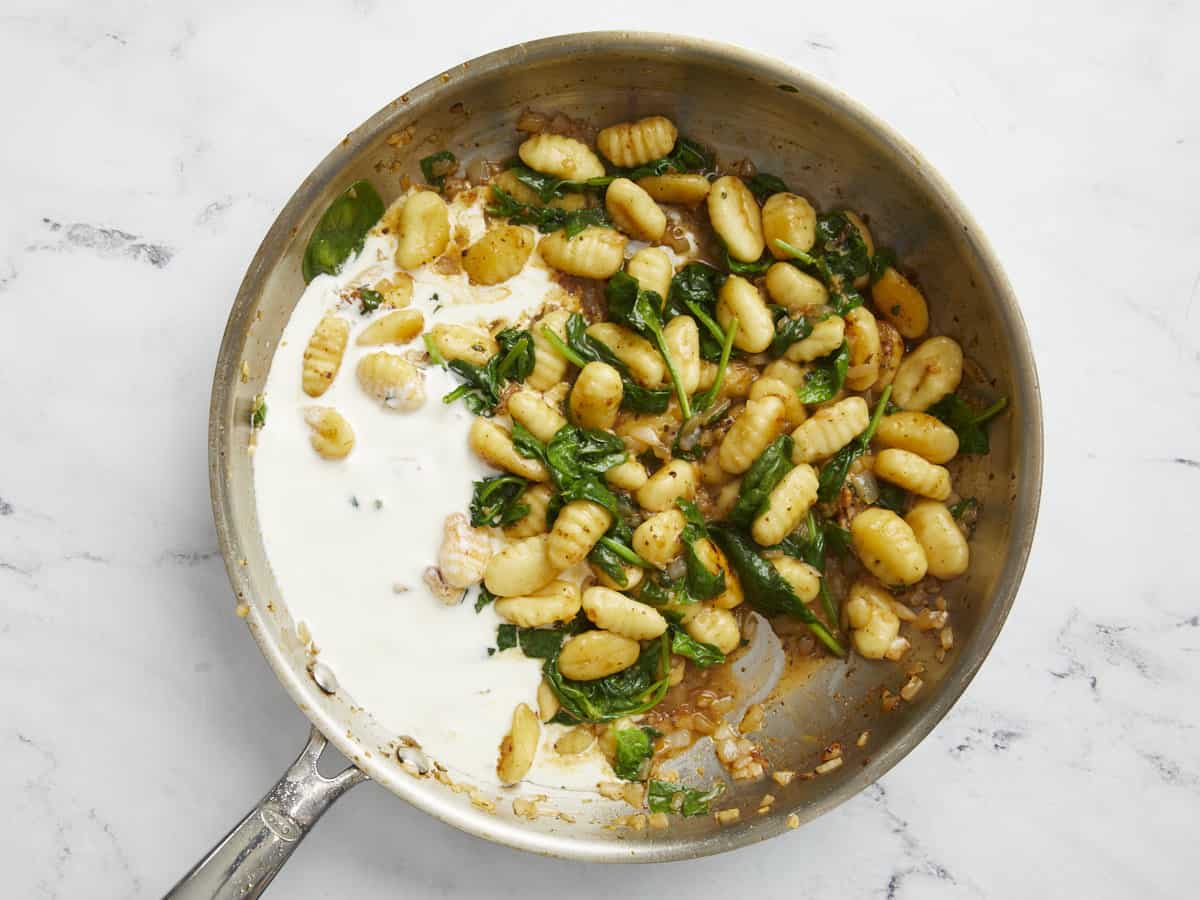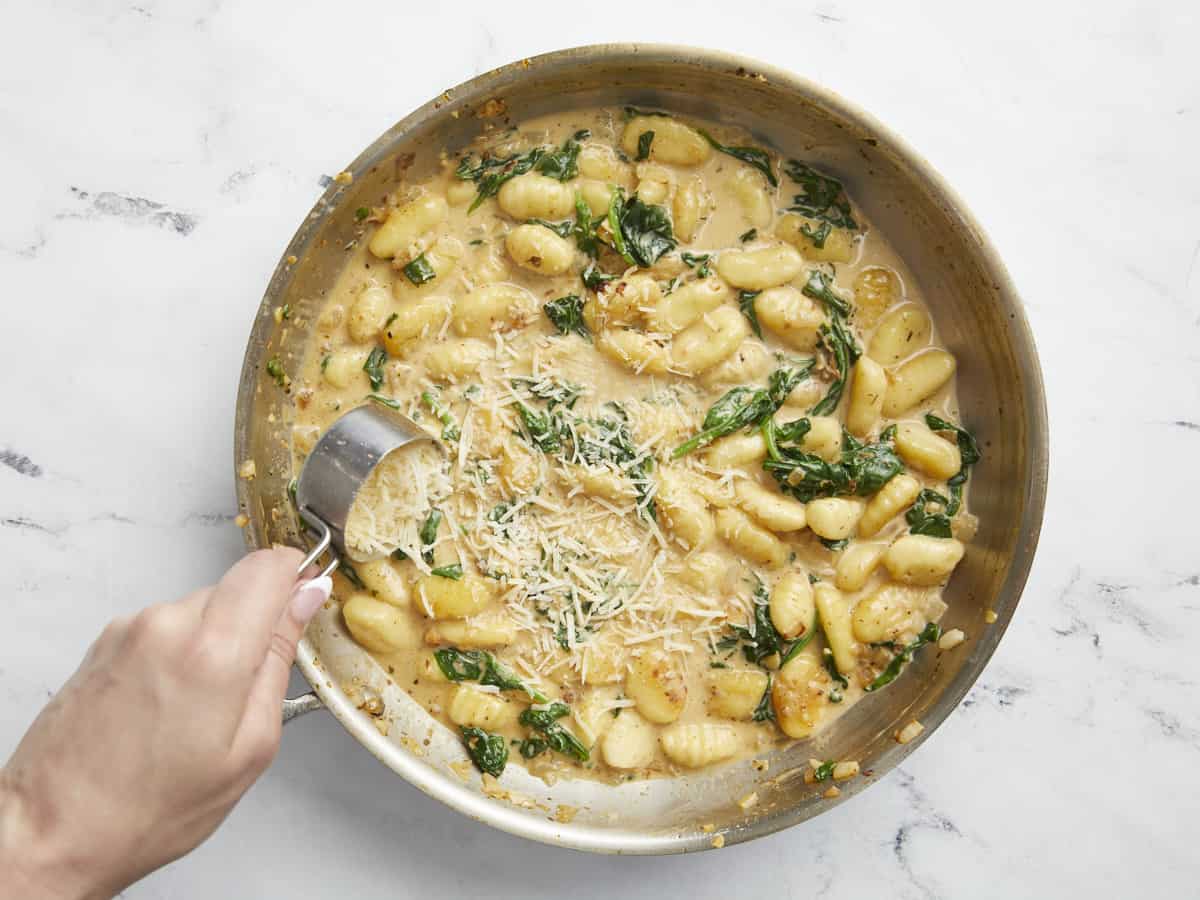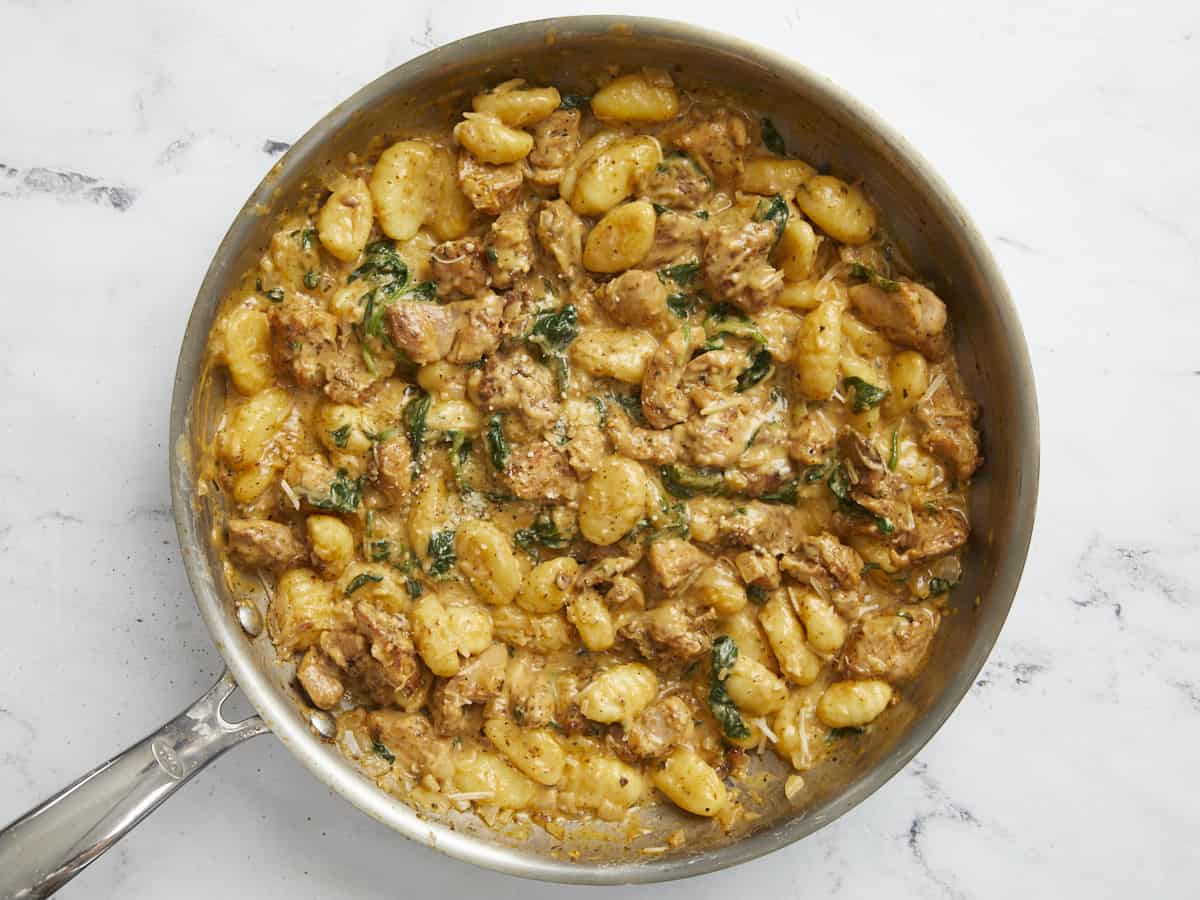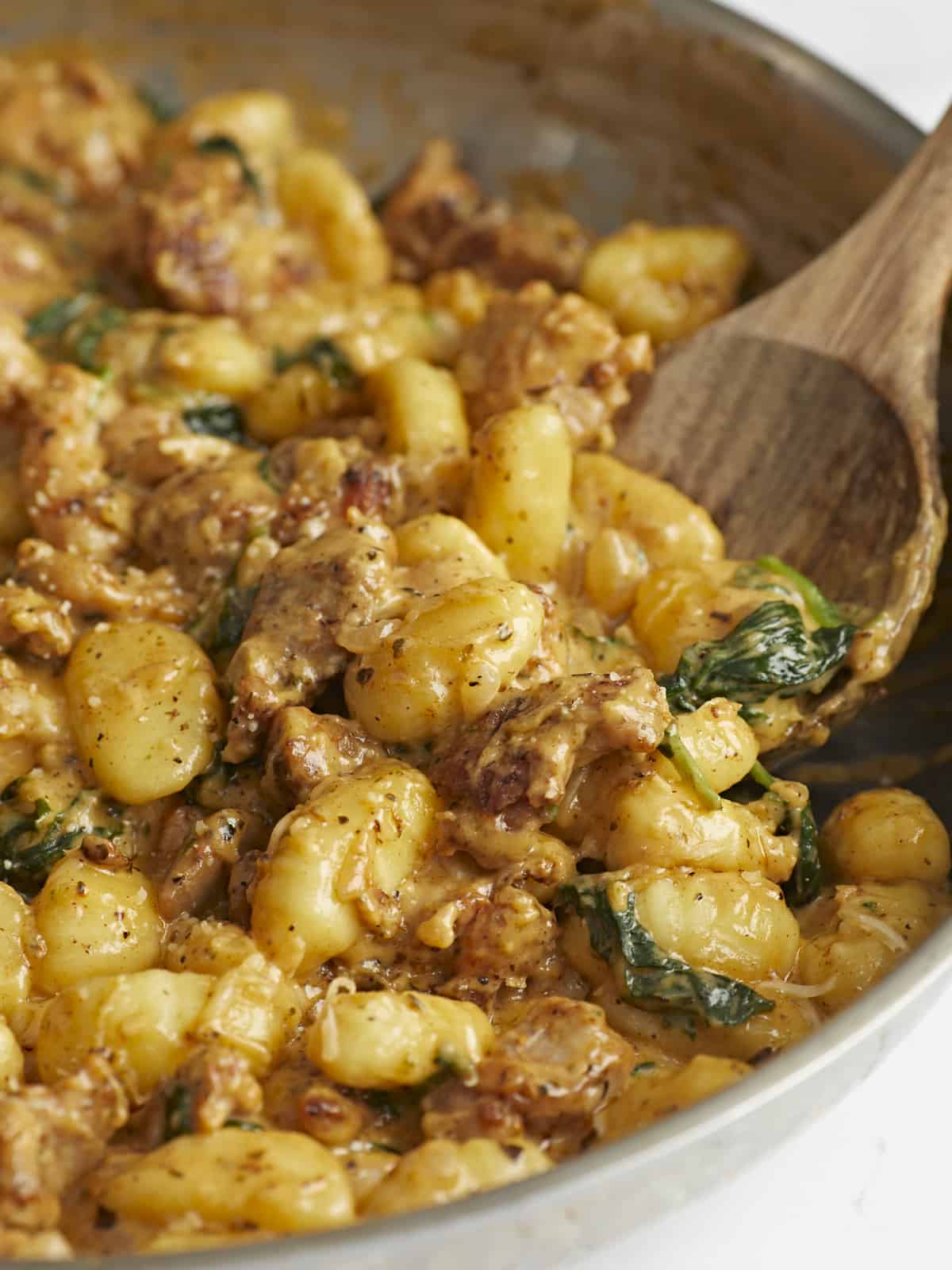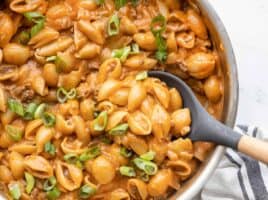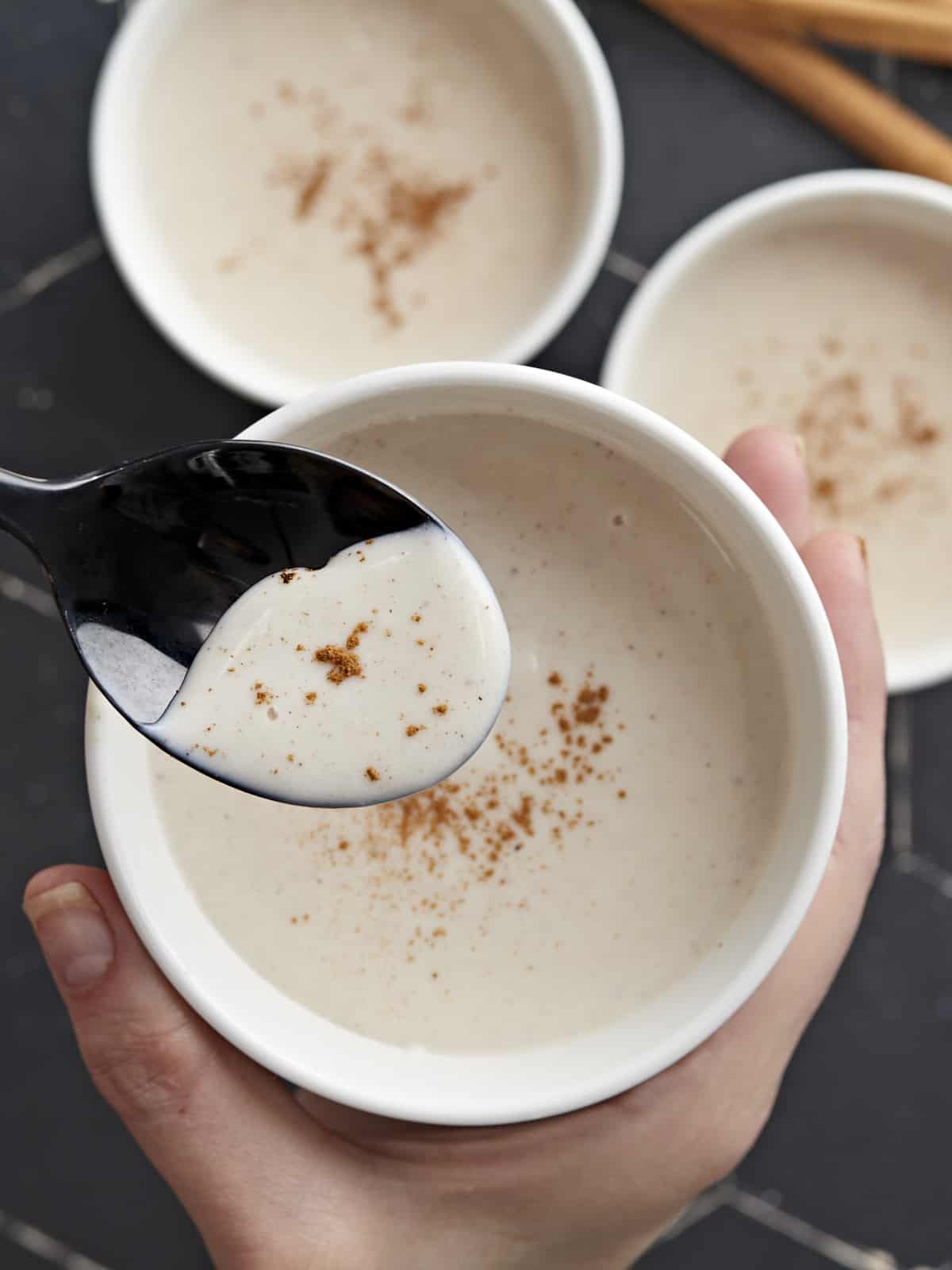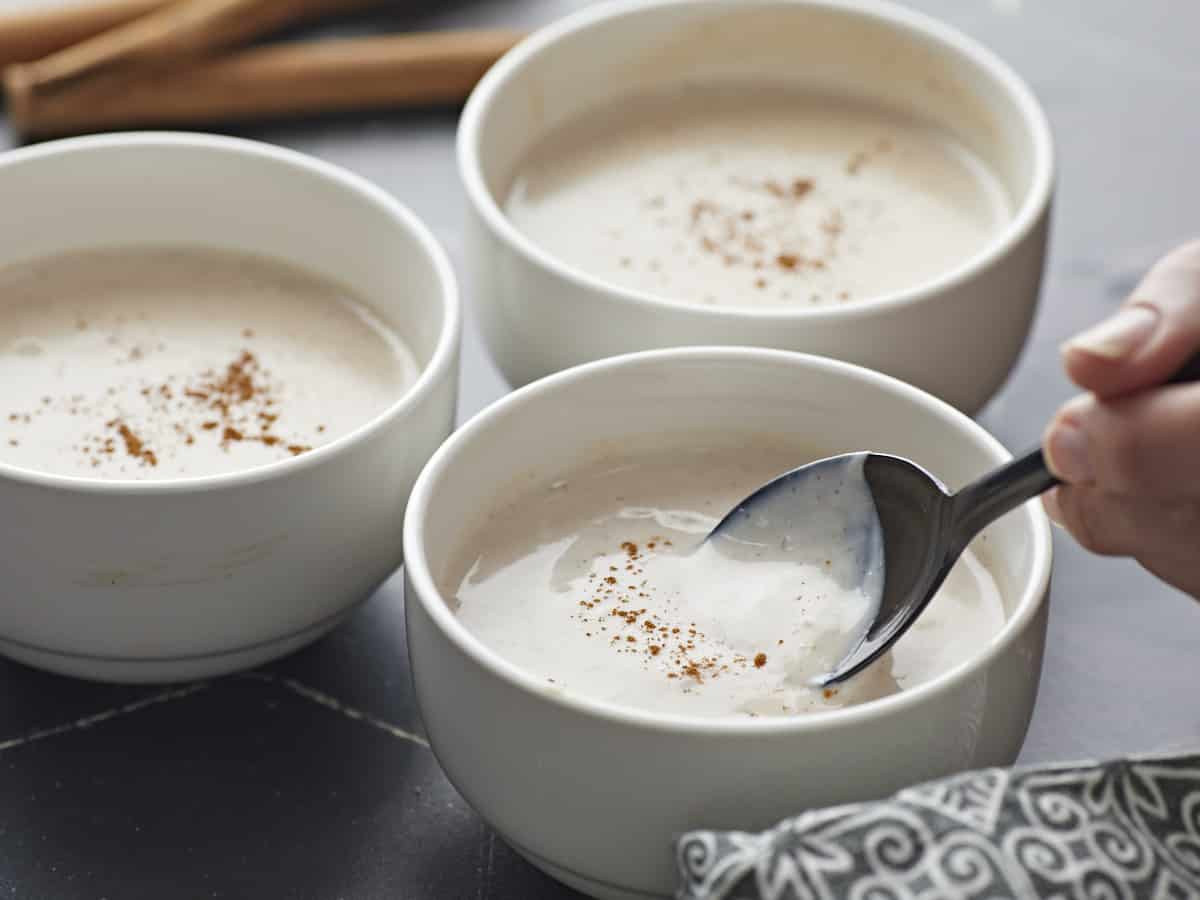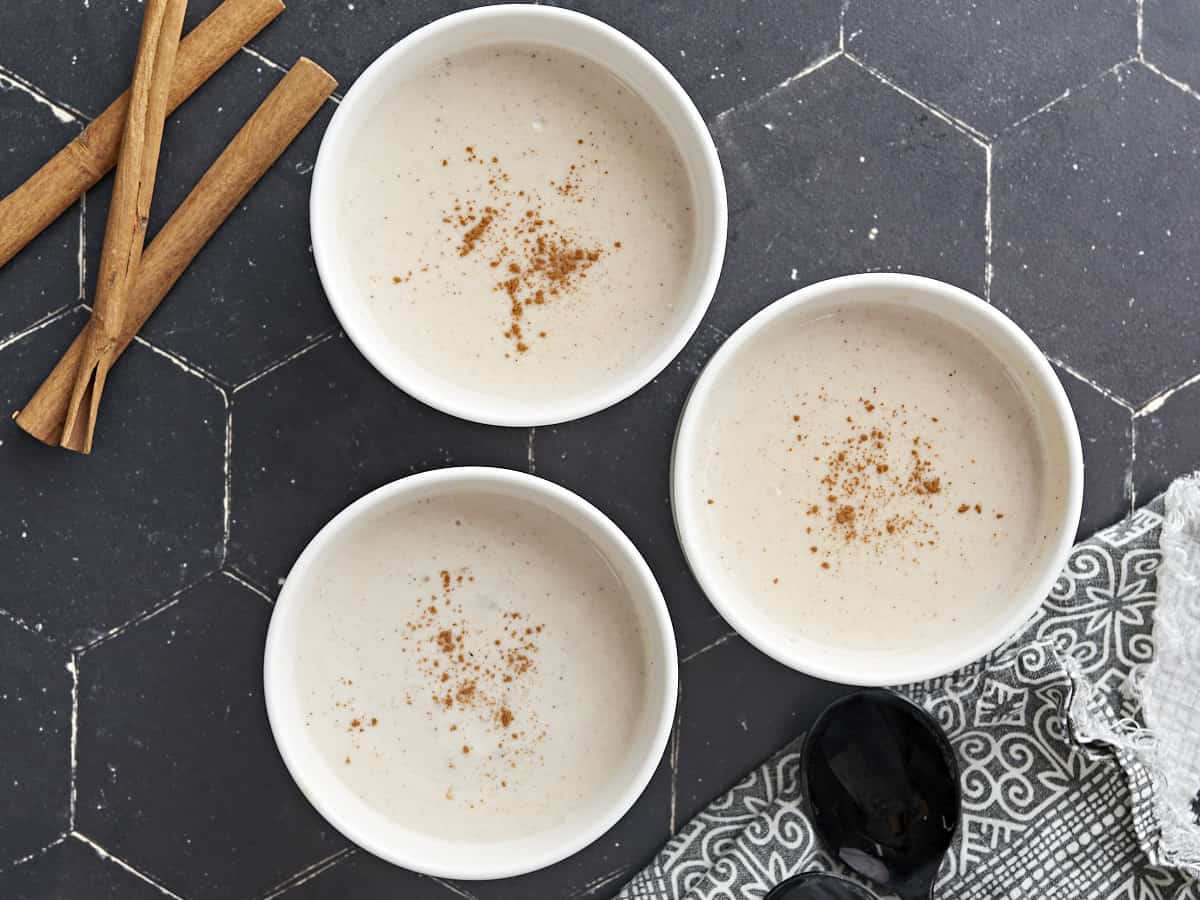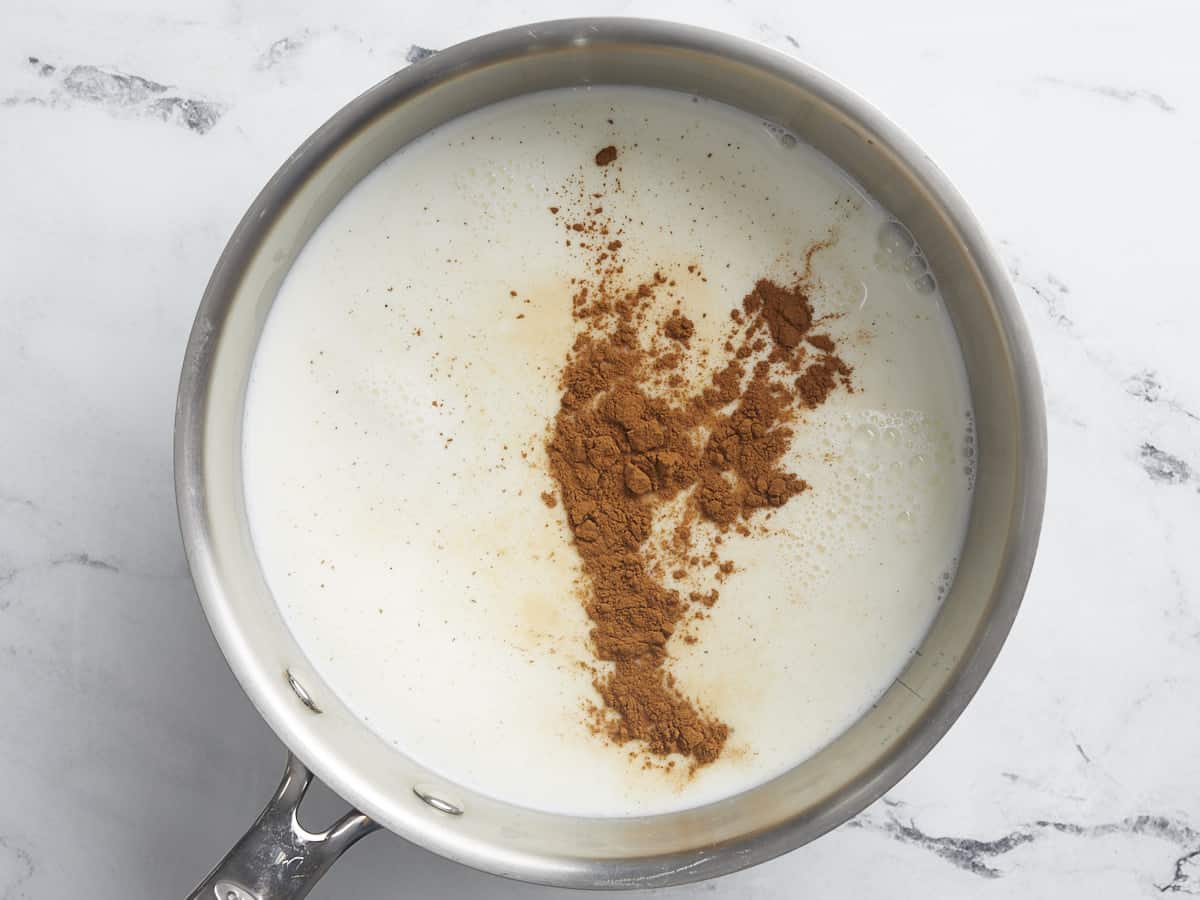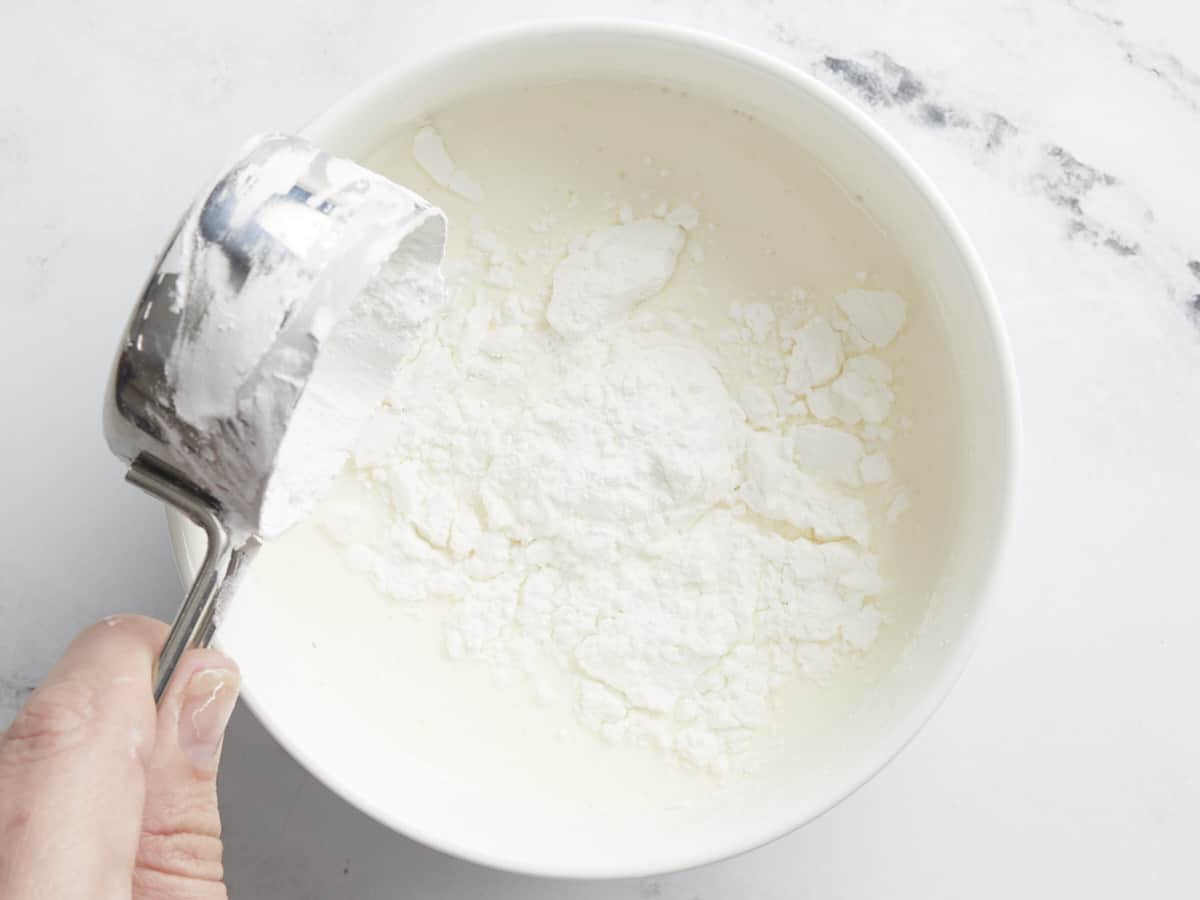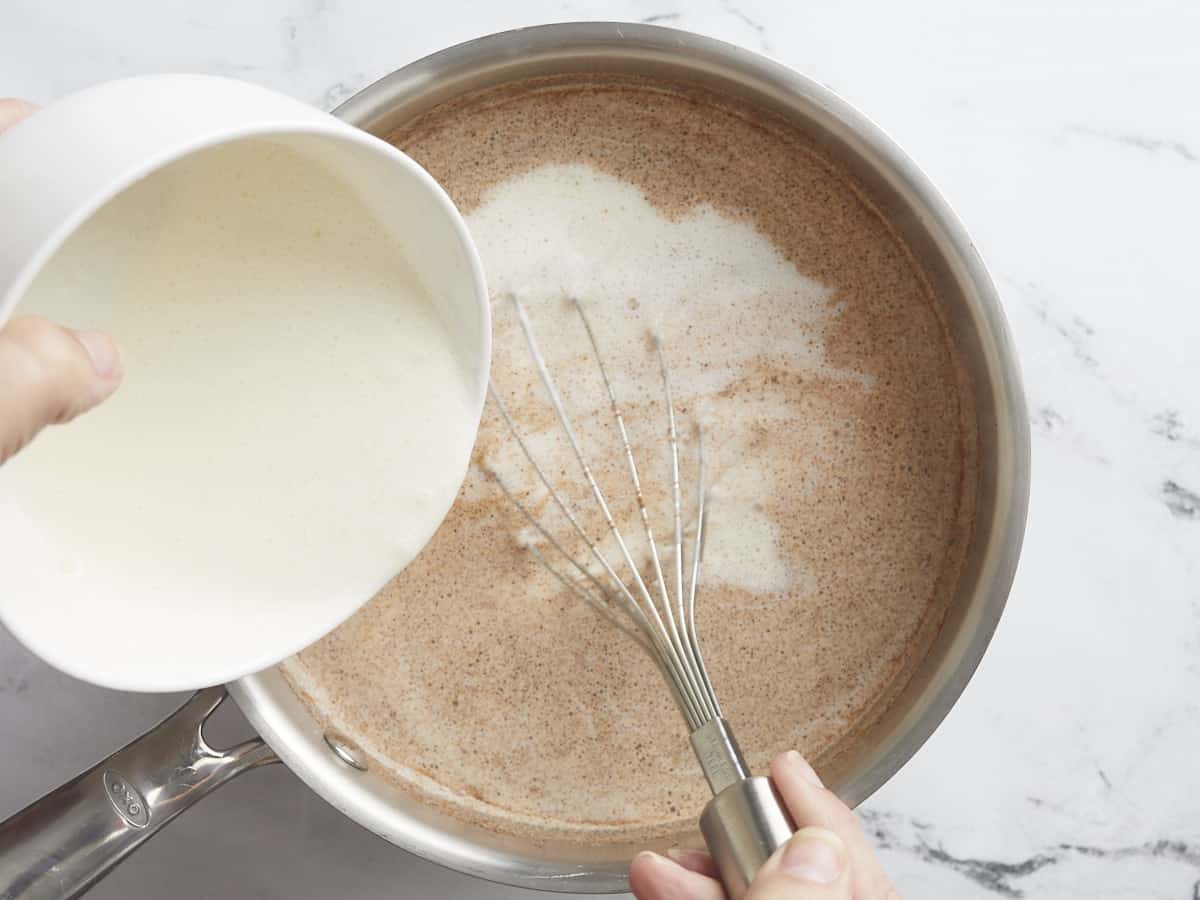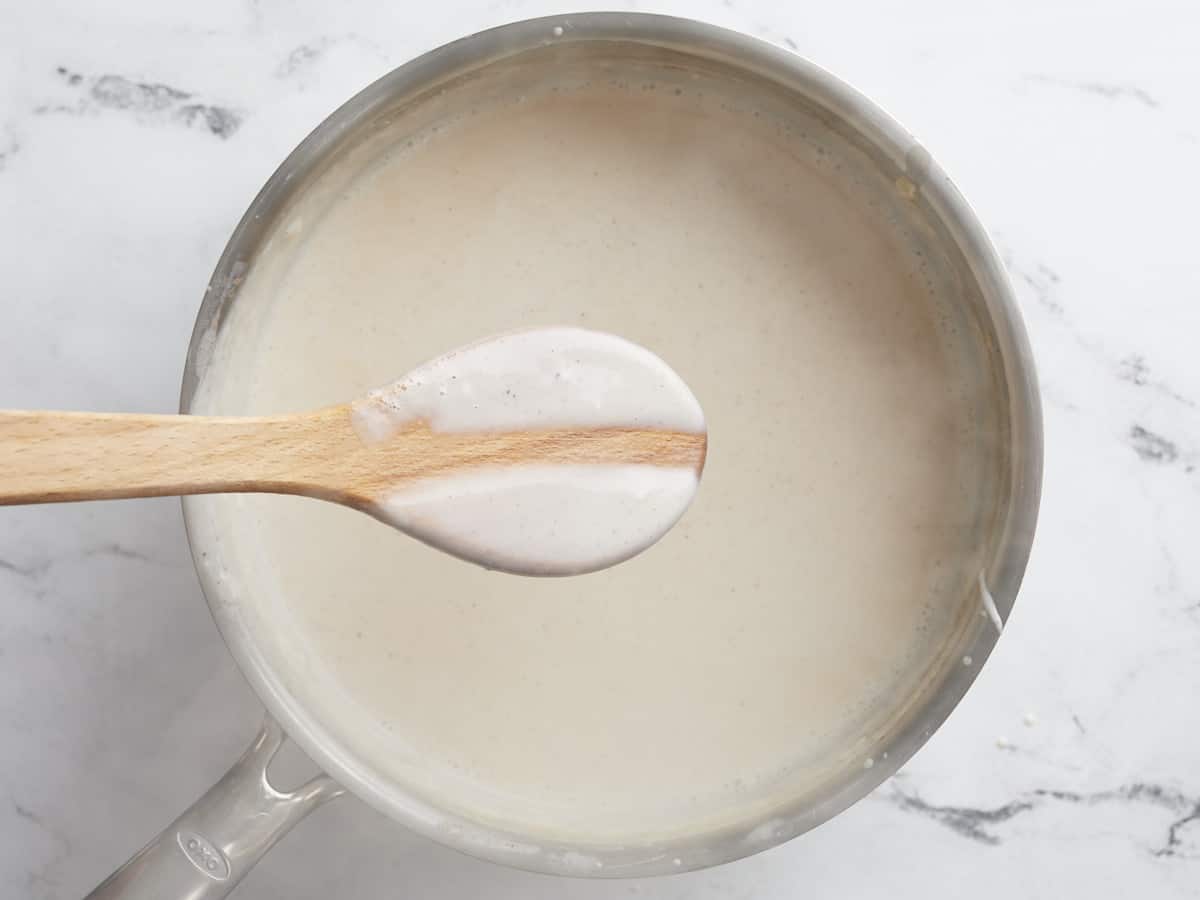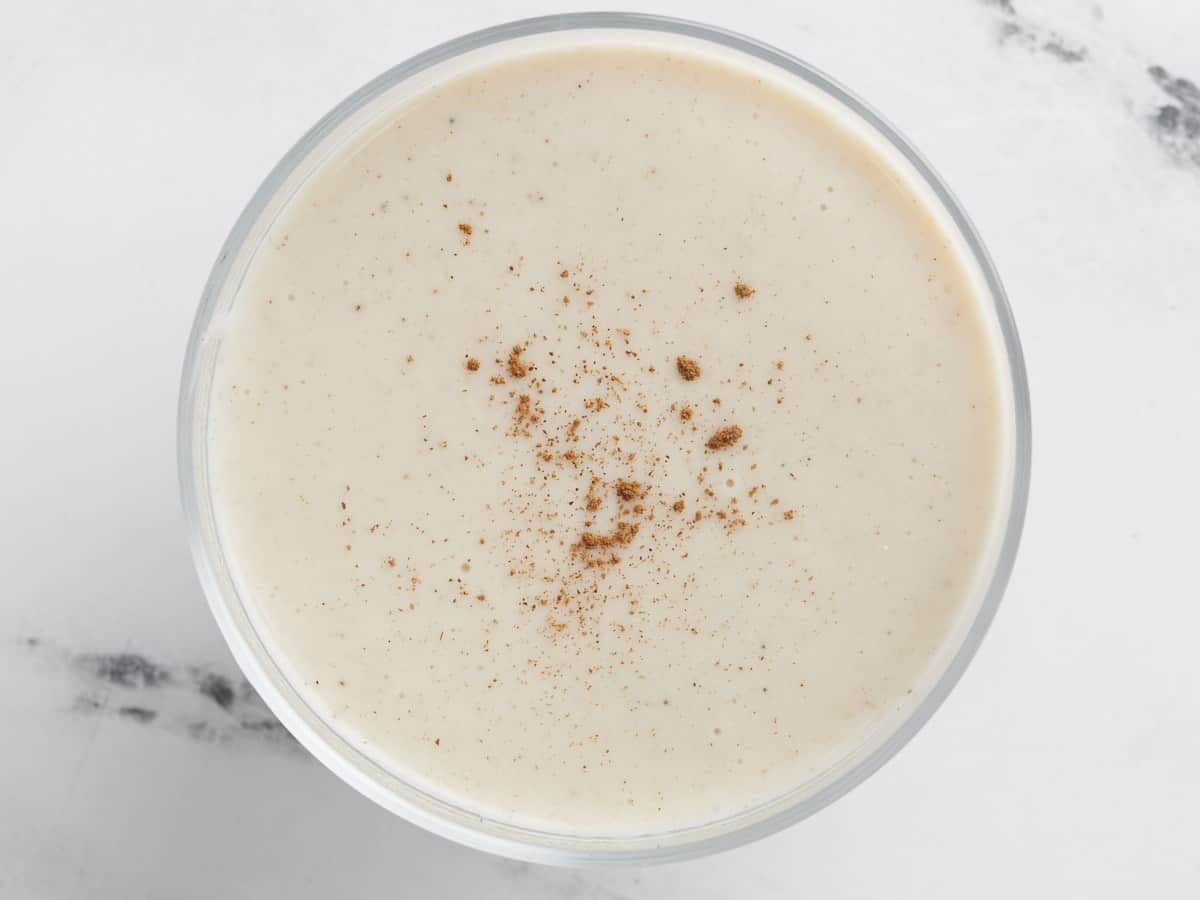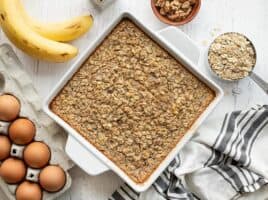If you’re looking for an easy, budget-friendly treat everyone at the BBQ will love (especially your Boricua friends), you have to make smoky, mouth-watering Pinchos De Pollo, AKA Puerto Rican Chicken Skewers! This beloved island street food is easy to recreate at home, even if you don’t have a grill!
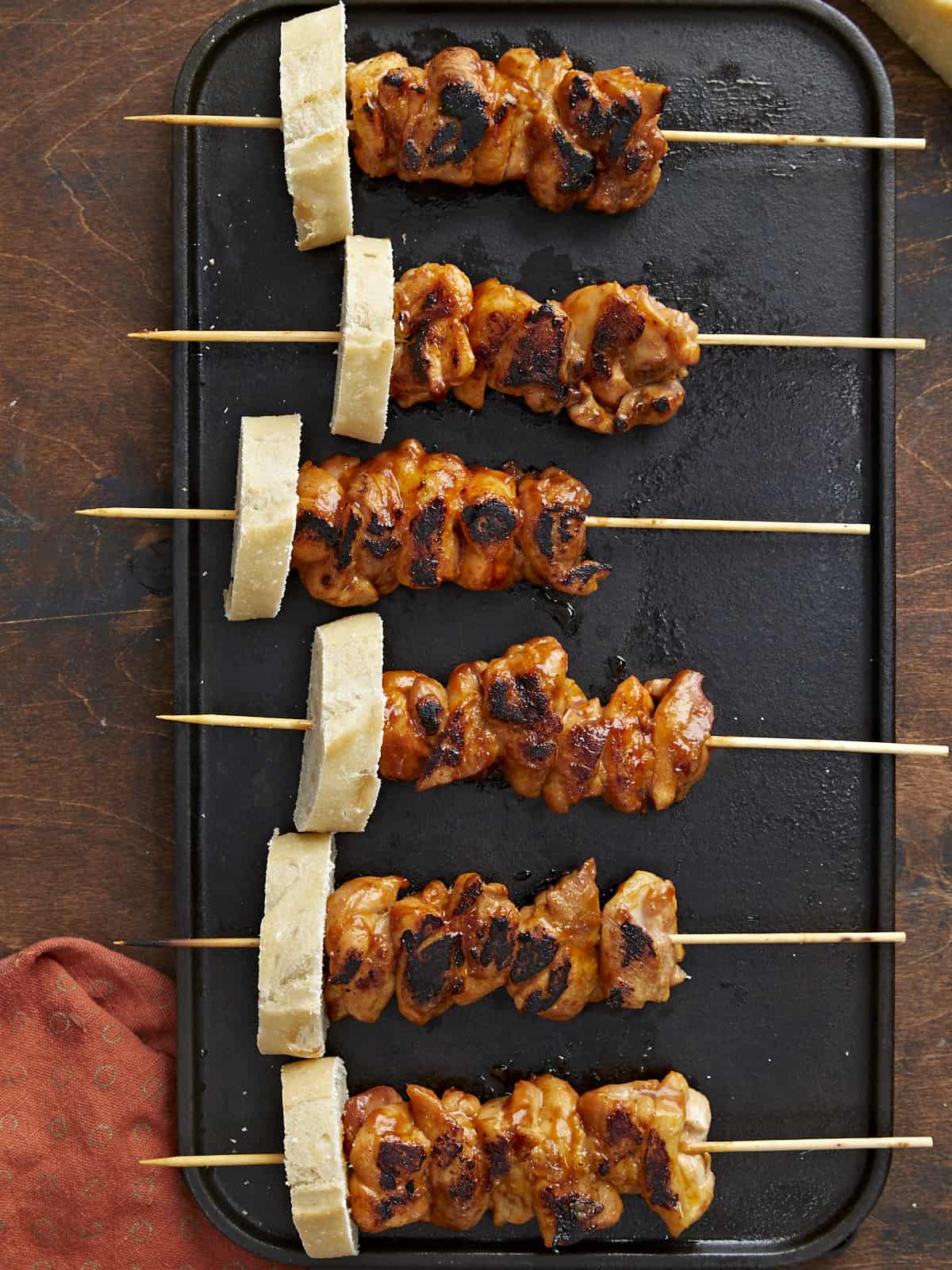
What Are Pinchos?
Pinchos is Spanish for “spikes” and refers to Puerto Rican meat skewers, one of the island’s most famous street foods. They are a late-night favorite of folks who’ve spent a little too much time at the bar and need to eat their way back to reality. Boricuas make Pinchos with many different types of meat (and sometimes veggies), but the most popular choices are chicken and pork. The meat is chopped, marinated, skewered, grilled over charcoal, and topped with a piece of bread or Tostones, AKA fried green plantain.
Ingredients For Pinchos De Pollo
Grilling Pinchos De Pollo over charcoal is traditional. However, I’m an avid indoors person and don’t like being exposed to the elements, so I made these on a grill plate. You should def open all of the windows or plan on explaining to the fire department that you’re grilling inside. (This happened to me a few days ago when I couldn’t get my smoke alarm to turn off and my security system automatically summoned my local firefighters… during a live virtual cooking demo. Not mortifying at all.) Here’s what you’ll need to make Pinchos De Pollo:
- Chicken Thighs– have enough fat in them to withstand heavy grilling without drying out. You can, of course, substitute chicken thighs with whatever meat your heart desires. Bits of chopped marinated pork and beef are popular choices, as are shrimp. If you’re a veg head, try this recipe with whole baby bella mushrooms. Cooking times are different for different cuts of meat and veggies, so if you choose to change up the star of the show, use a thermometer to help you know when things are cooked through.
- Adobo and Sazón– these Puerto Rican spice blends are heavy-duty flavor bombs and work quickly to infuse your chicken with earthy, tangy, notes. If you don’t have Adobo or Sazón, I’ve included recipes for you in the recipe card below.
- BBQ Sauce– glazes the chicken, adds deep flavor, and helps create char marks. Use your favorite brand, though I’d steer clear of anything too sweet, as it will change the flavor profile and accelerate the charring. You can always make our easy recipe for Homemade BBQ Sauce, which is perfect for Pinchos De Pollo.
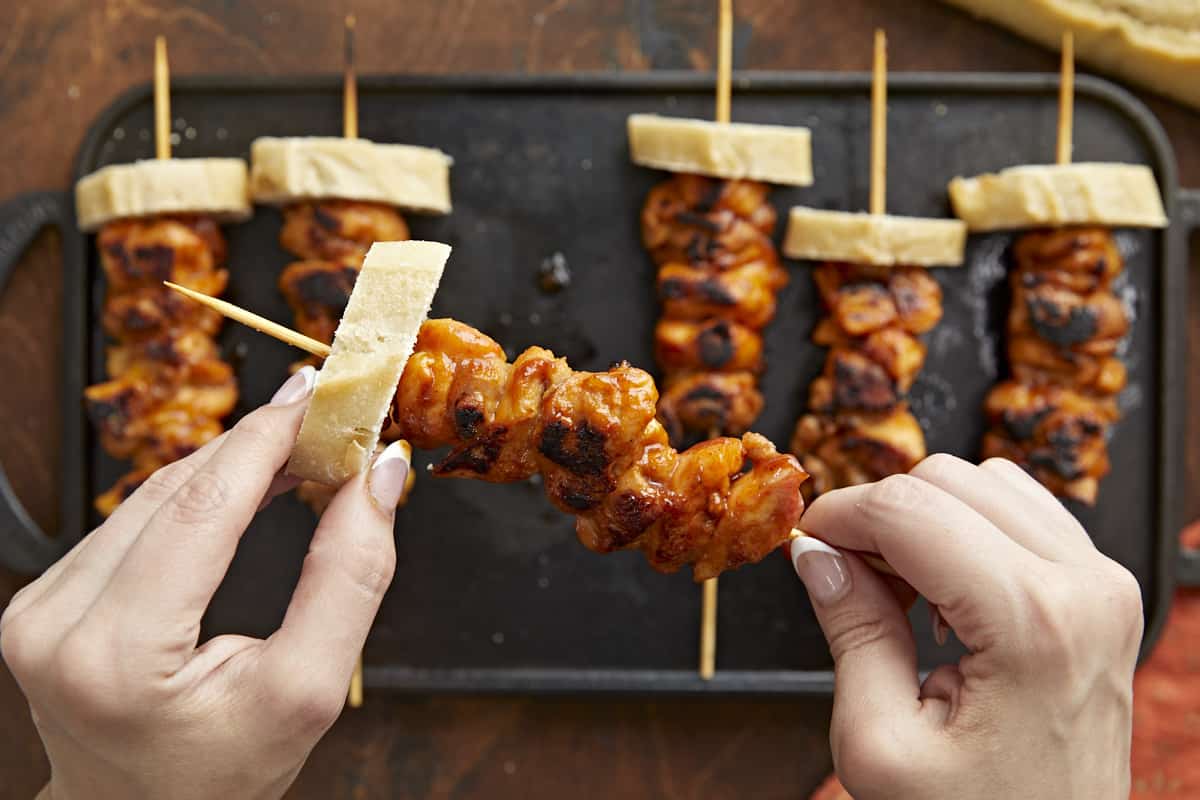
What Can You Serve With Pinchos De Pollo?
These Pinchos de Pollo pair beautifully with Arroz Con Habichuelas (Puerto Rican Rice And Beans) and Tostones (Fried Green Plantain). You can also serve them with Ensalada De Aguacate (Avocado Salad) and Yuca En Escabeche (Pickled Yuca Root).
How To Store Pinchos
When it comes to chicken left at room temperature, you should eat it or store it within 2 hours before harmful bacteria start to form. That time frame reduces to 1 hour if temperatures are above 90°F. Store leftover Pinchos De Pollo in an air-tight container with as much air removed as possible. Refrigerate for up to 3 days. Freeze for up to 3 months. Reheat in a 350°F oven or a microwave until steaming.


Pinchos De Pollo
Equipment
Ingredients
Instructions
- Pat chicken thighs dry with a paper towel. Then chop the chicken into bite-size pieces (about 5 to 6 pieces per thigh).
- Add the adobo, sazón, and salt to a large bowl and mix.
- Add the chopped chicken thighs to the bowl along with the cooking oil and mix until the chicken is thoroughly covered. Cover with plastic wrap or parchment directly on the surface of the chicken and marinate for at least an hour, but preferably overnight.
- Half an hour before you pull the chicken, soak at least 6 wood skewers in water so they don't burn. It's best to soak a few extra skewers just in case one of them breaks.
- When you're ready to cook, preheat a grill pan on high. Then thread a thigh's worth of chicken pieces on each skewer, about 5 or 6 chunks. You want the chicken chunks close but not pressed tightly against each other. Brush both sides of each skewer with BBQ sauce, about 1/2 cup total.
- When the grill pan is smoking hot, brush it with a touch of cooking oil. Then, place the skewers on the grill pan, making sure not to crowd the pan or place the skewers too close to each other.
- After 5 minutes, brush 1/4 cup of BBQ sauce on the top surface of the chicken. Next, flip the chicken, and brush another 1/4 cup of BBQ sauce on the top layer. Cook for 5 more minutes, until char develops and the internal temperature of the chicken registers at 160°F. Now all you have left to do is eat! Buen provecho!
See how we calculate recipe costs here.
Notes
1 Tbsp garlic powder
1 tsp ground oregano
1 tsp onion powder
1 tsp black pepper
1 tsp ground cumin
1/2 tsp turmeric **A packet of sazón contains about 1.5 teaspoons of sazón. If you cannot source sazón, use the following: 1/4 teaspoon onion powder
1/4 teaspoon garlic powder
1/4 teaspoon ground cumin
1/4 teaspoon ground coriander
1/3 teaspoon ground annatto
1/8 teaspoon turmeric
1/8 teaspoon ground oregano Sazón and adobo share a lot of similar ingredients but are used at different points in the cooking process and will develop slightly different colors and flavors.
Nutrition
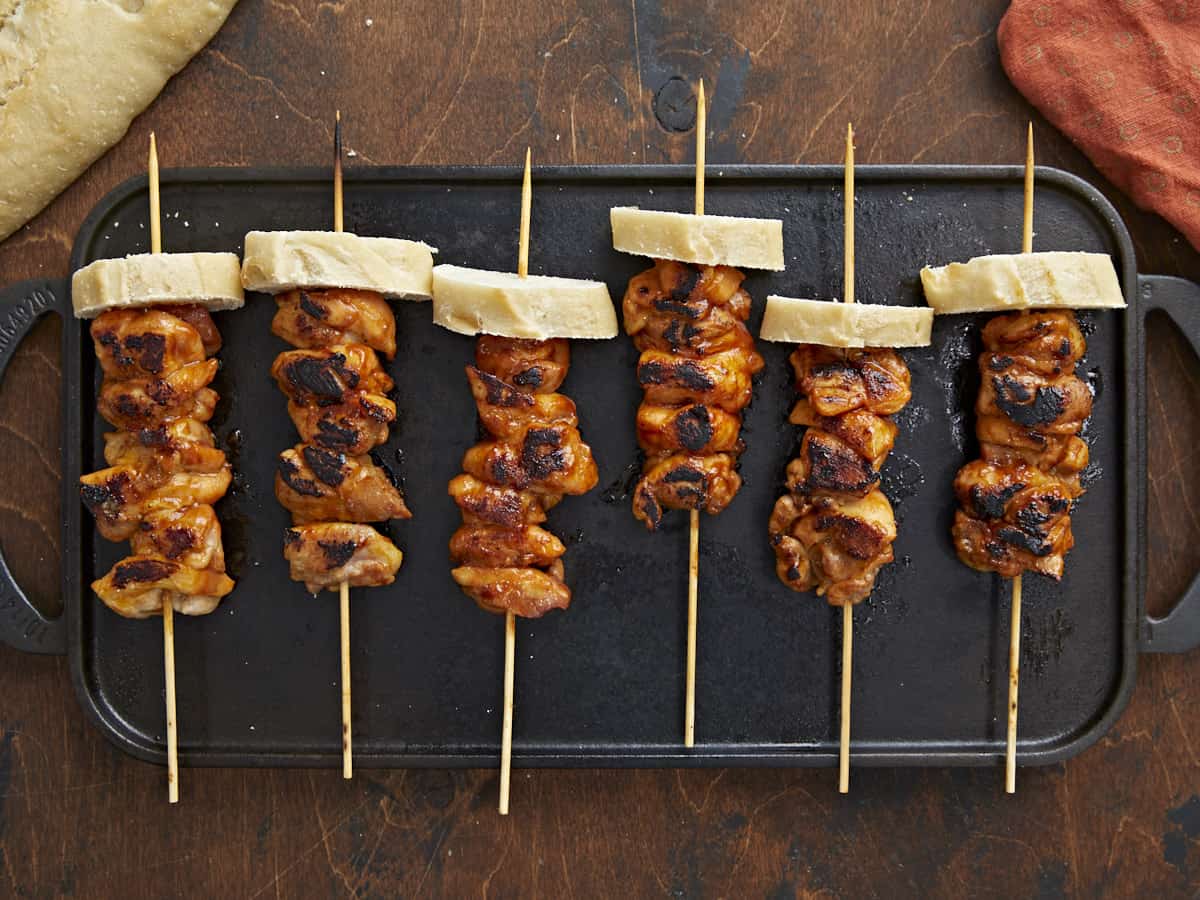
How to Make Pinchos De Pollo – Step by Step Photos
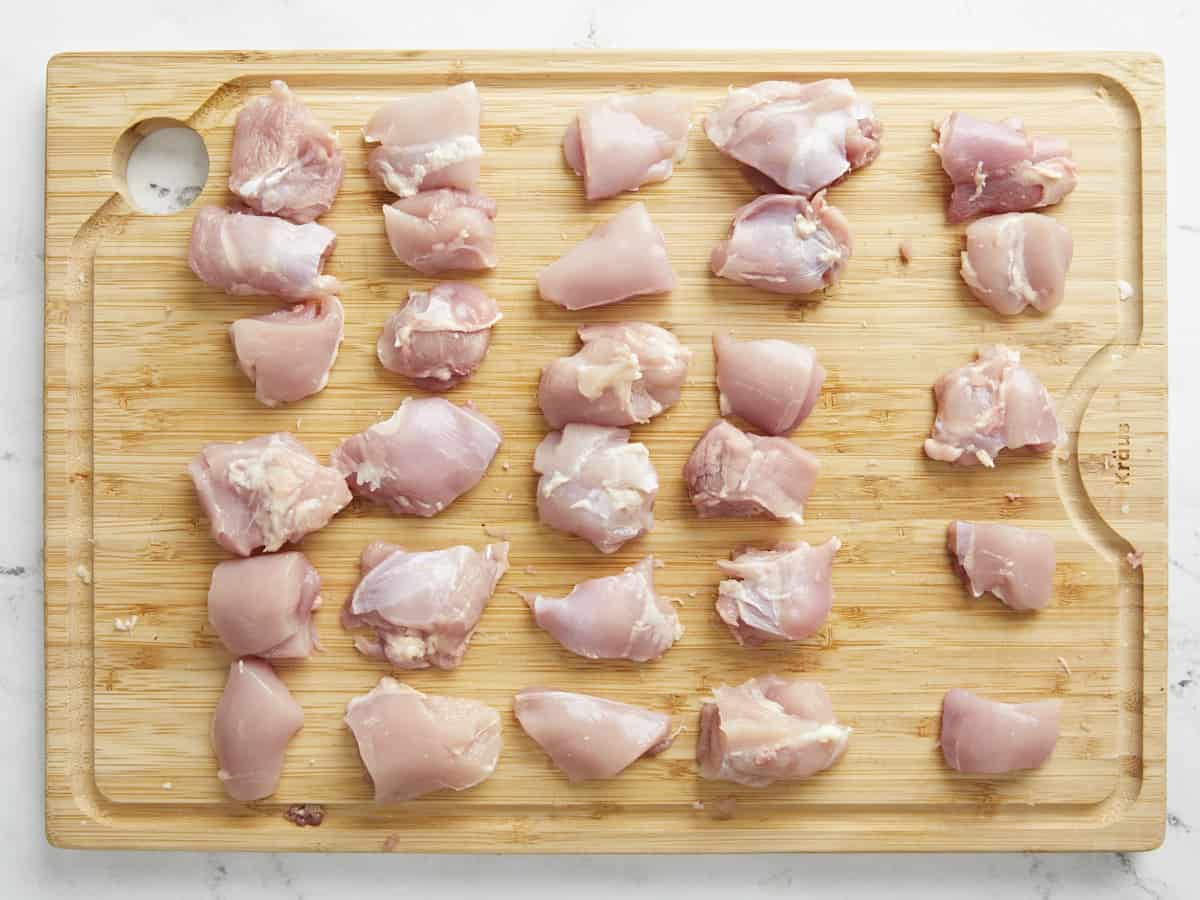
Pat 3 pounds of chicken thighs (about 5 to 6 thighs) dry with a paper towel. Then chop the chicken into bite-size pieces (about 5 to 6 pieces per thigh). You don’t have to line up your chicken obsessively as I did. For the record, I’m jealous of your freewheeling ways.
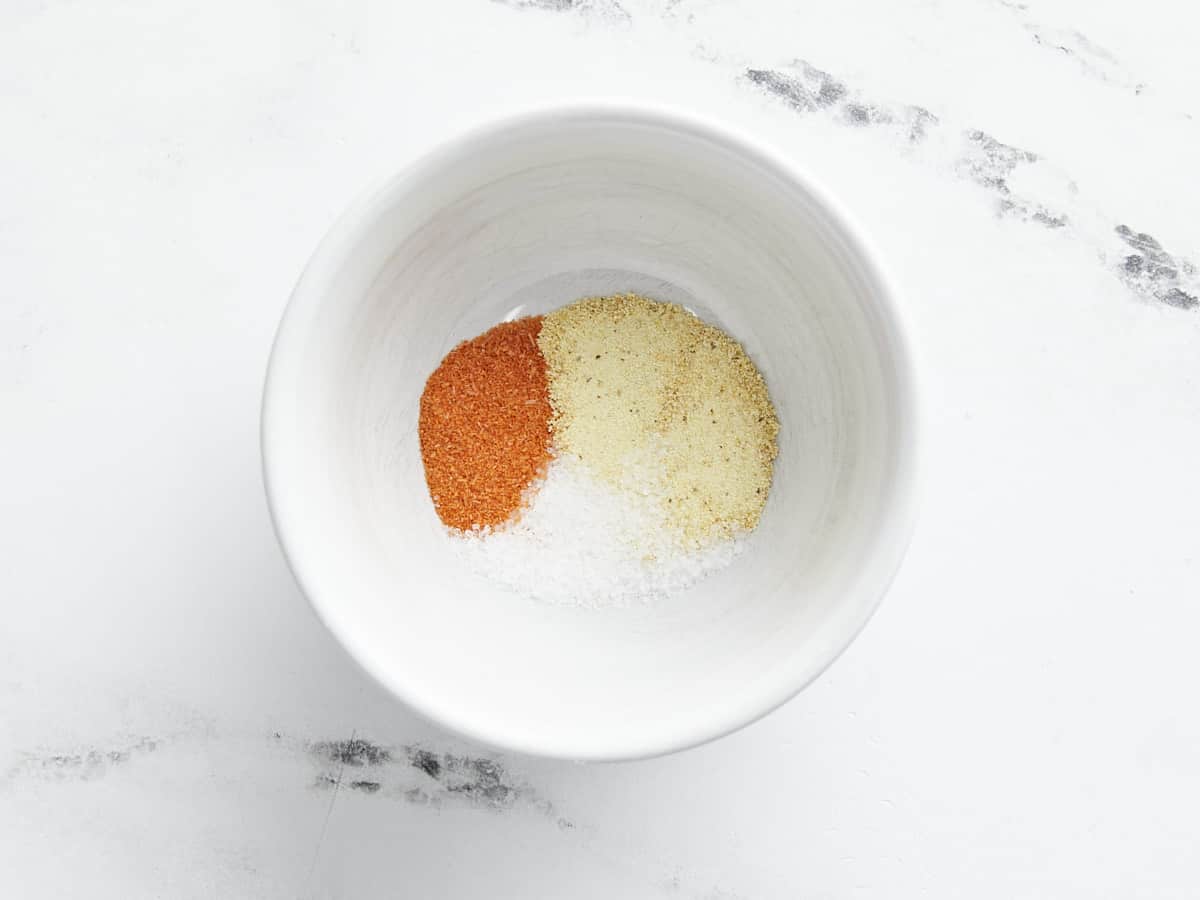
Add 1 1/2 teaspoons adobo, 2 teaspoons sazón, and 2 teaspoons salt to a large bowl and mix.
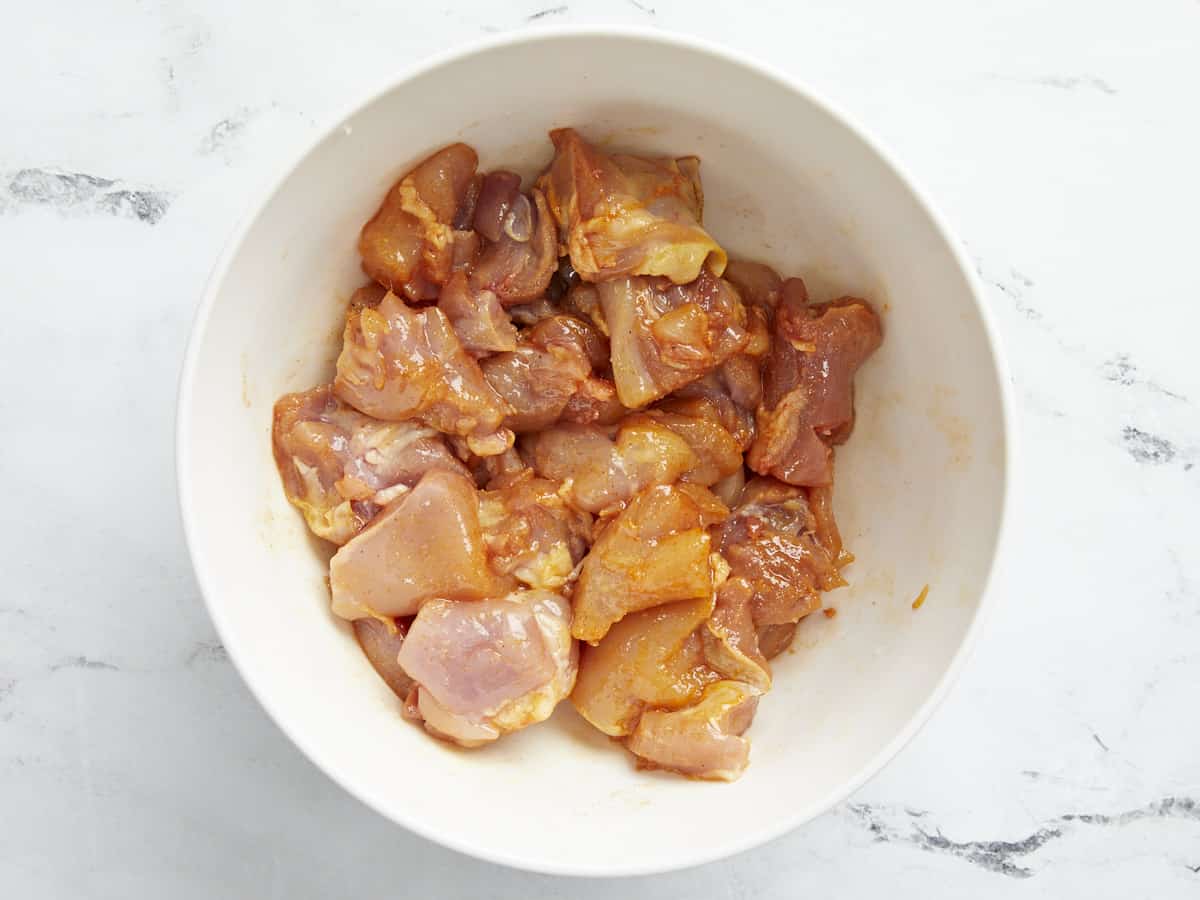
Add the chopped chicken thighs to the bowl along with the 2 tablespoons of cooking oil and mix until the chicken is thoroughly covered. Cover with plastic wrap or parchment directly on the surface of the chicken and marinate for at least an hour, but preferably overnight.
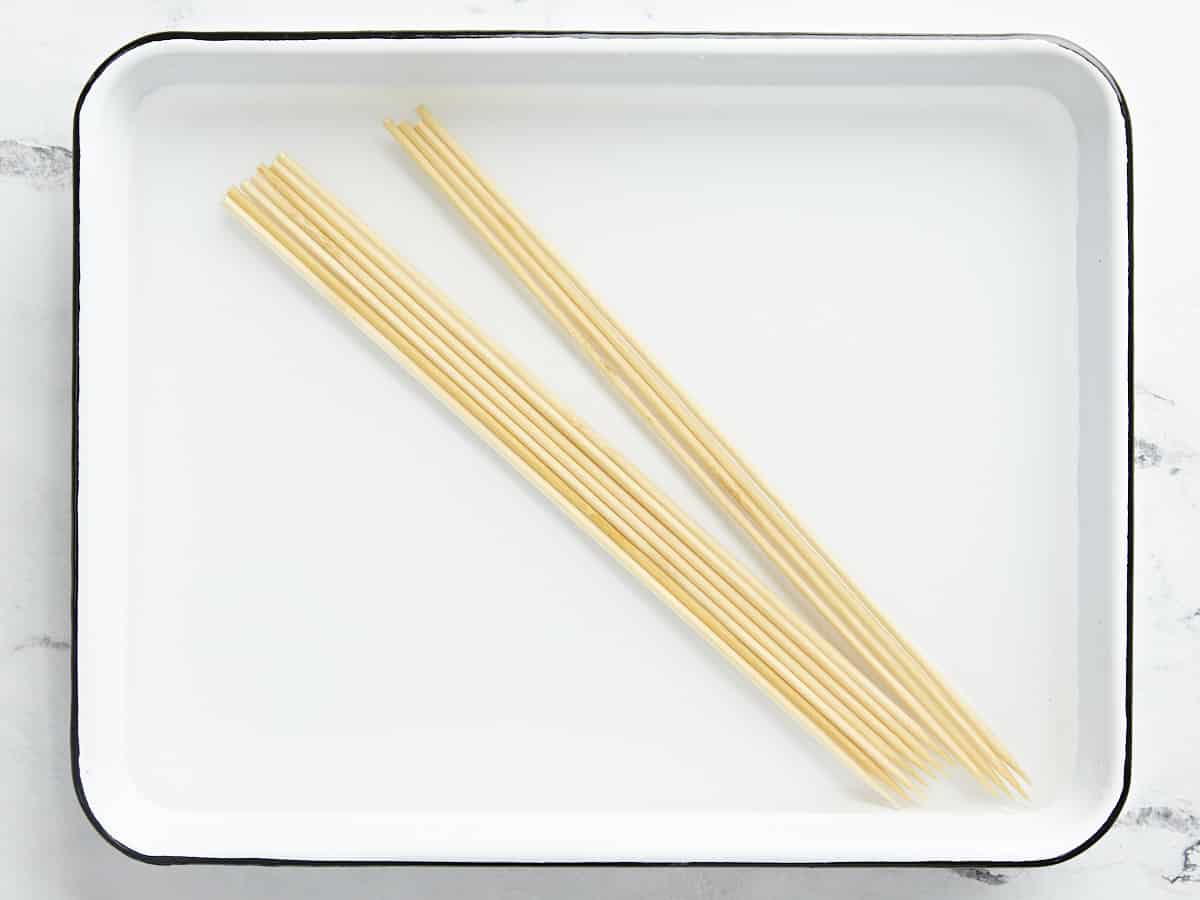
Half an hour before you pull the chicken, soak at least 6 wood skewers in water so they don’t burn. Soak a few extra skewers just in case the skewer gods decide to bless you with weak wood.
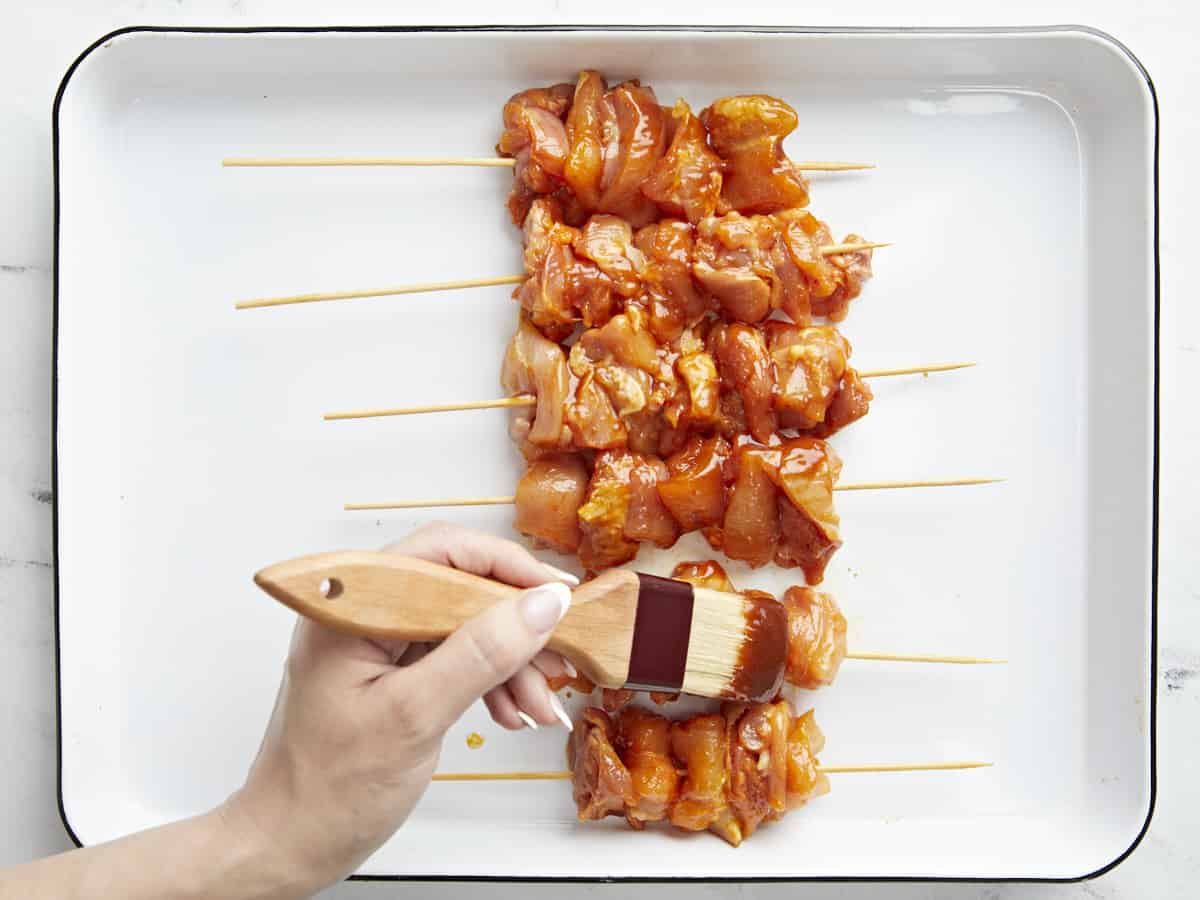
When you’re ready to cook, preheat a grill pan on high. Then carefully thread a thigh’s worth of chicken pieces on each skewer, about 5 or 6 chunks. You want the chicken chunks close but not pressed tightly against each other, so leave room for Jesus. Otherwise, the chicken won’t cook evenly. Brush both sides of each skewer with BBQ sauce, about 1/2 cup total.
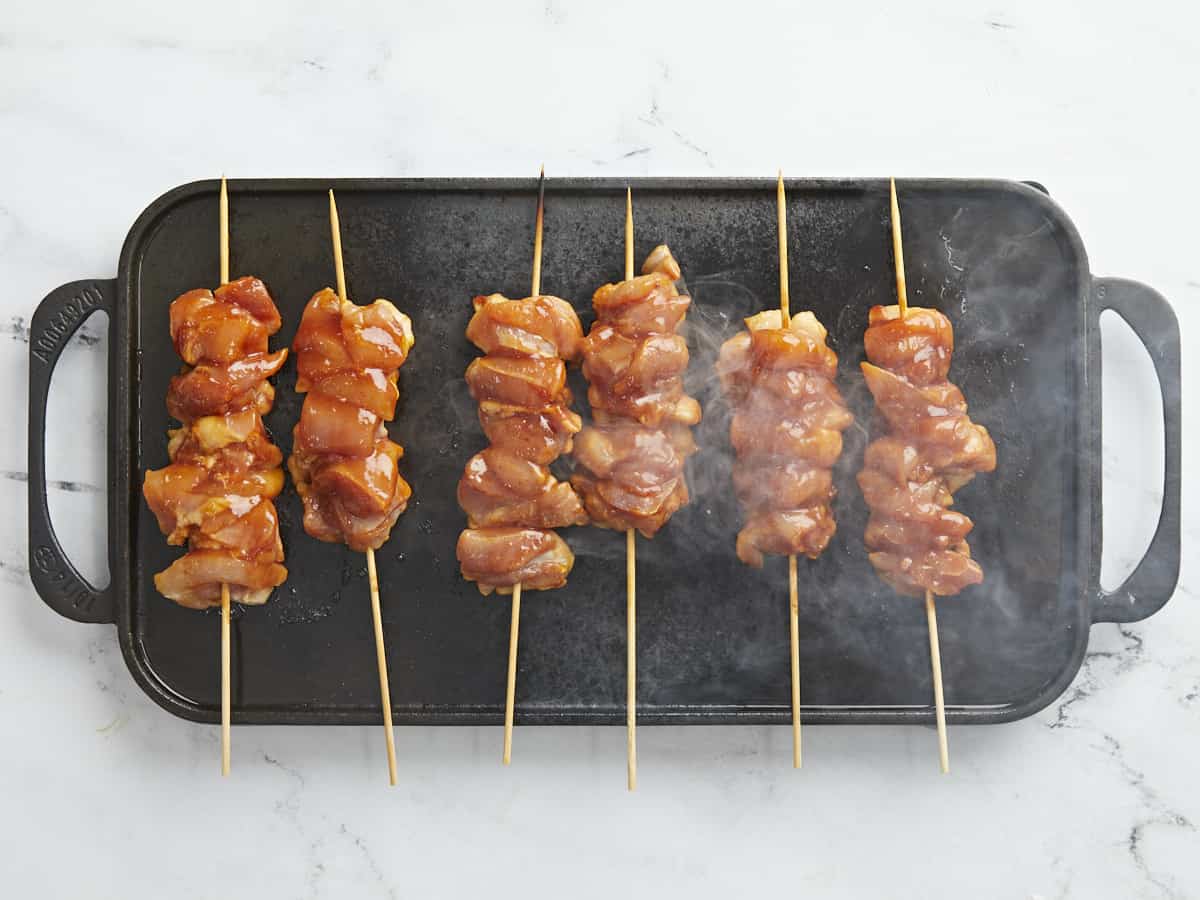
When the grill pan is smoking hot, and I mean LITERAL smoke is billowing from it, brush it with a touch of cooking oil. Then, place the skewers on the grill pan, making sure not to crowd the pan or place the skewers too close to each other. (Did you open those windows???)
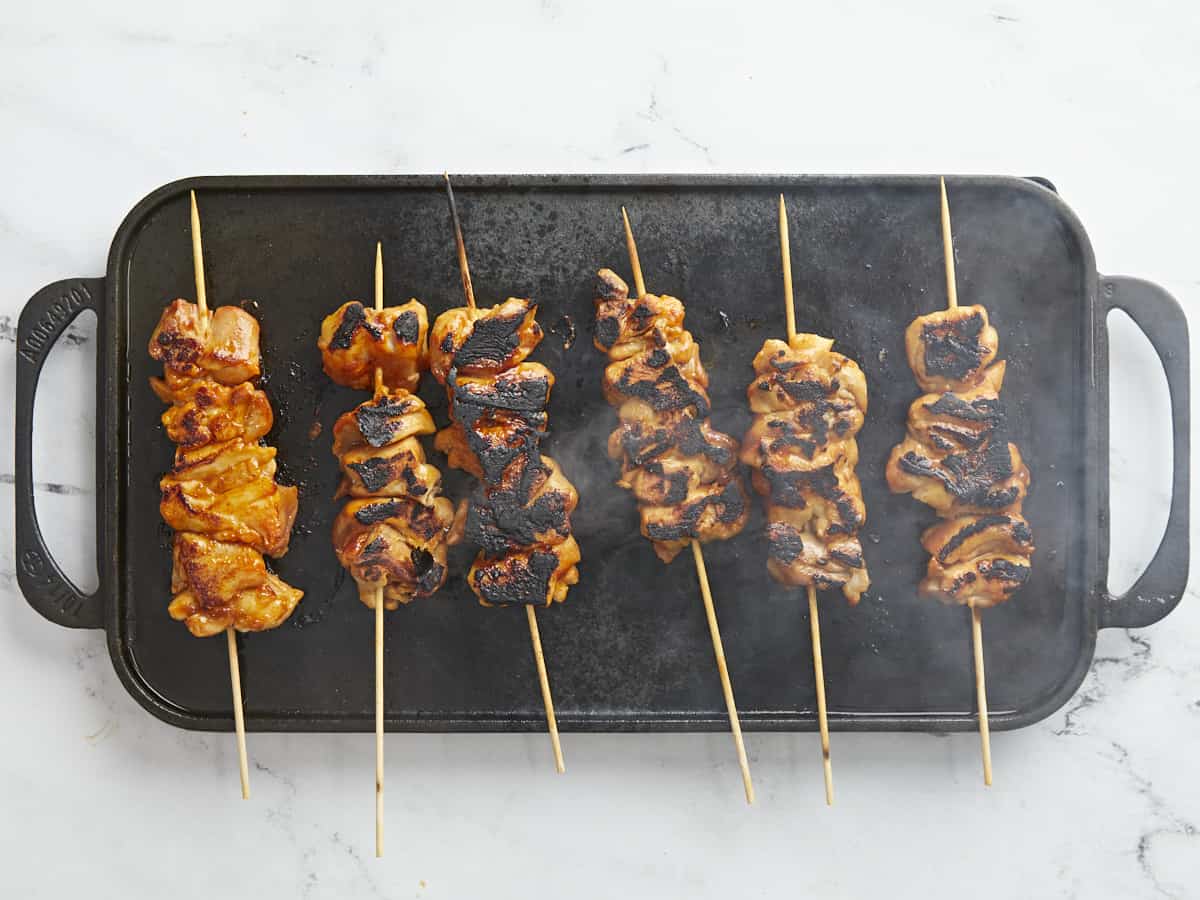
After 5 minutes, brush 1/4 cup of BBQ sauce on the top surface of the chicken. Next, flip the chicken and brush another 1/4 cup of BBQ sauce on the top layer. Cook for 5 more minutes, until char develops and the internal temperature of the chicken registers at 160°F. Now all you have left to do is eat! Buen provecho!
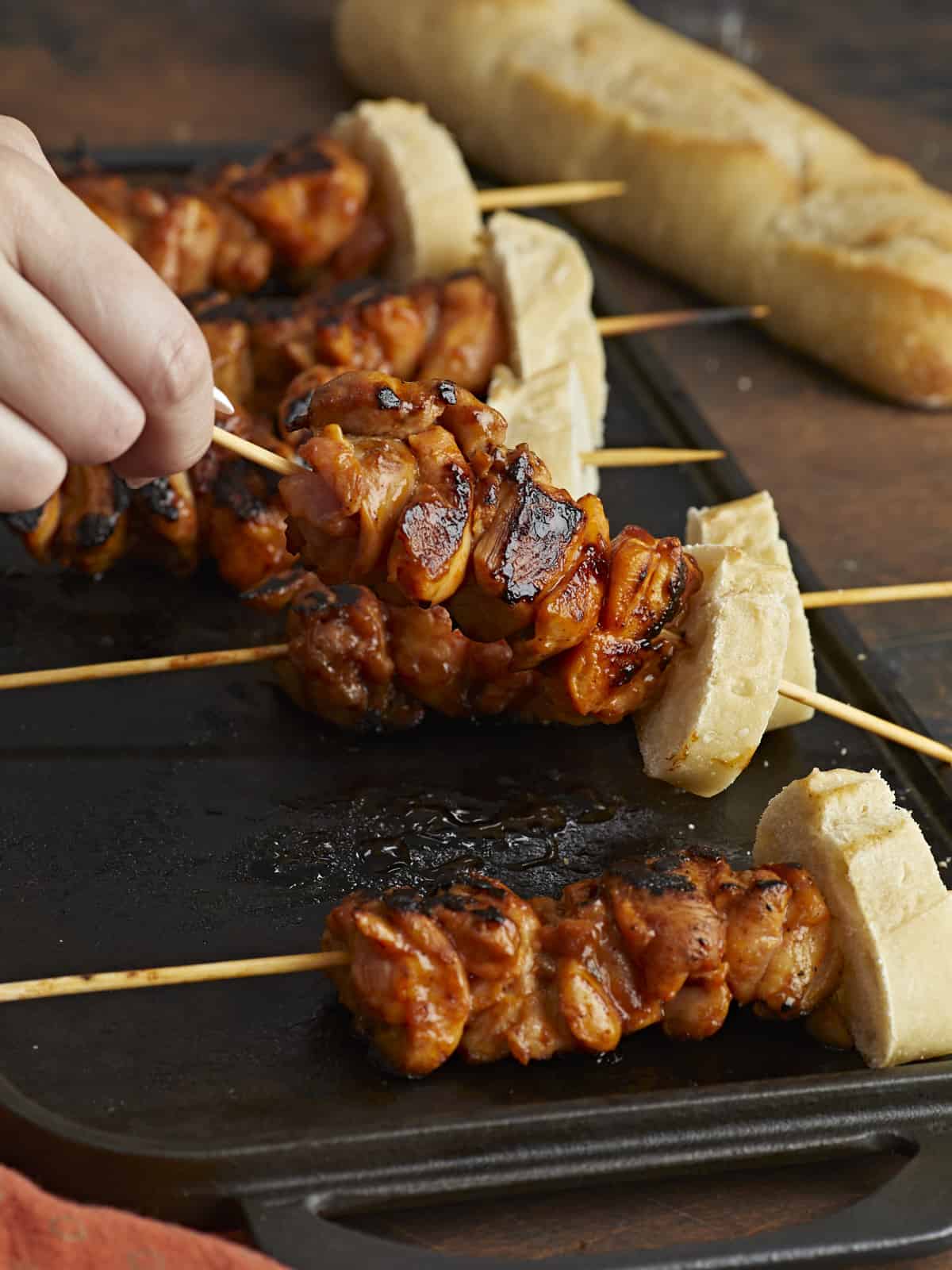
Will you look at that savory, succulent, meaty, mouth-watering goodness?! Sigh. I want some right now!!!! Serve the Pinchos De Pollo as is. Or go the traditional route and top the skewers with slices of bread or Tostones (AKA fried green plantains). PS If you want my easy recipe for Tostones, let me know in the comments!
More Easy Puerto Rican Recipes
The post Pinchos De Pollo (Puerto Rican Chicken Skewers) appeared first on Budget Bytes.



